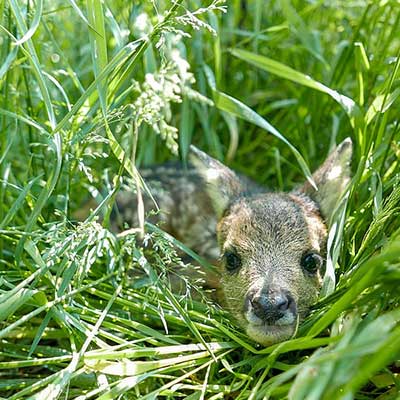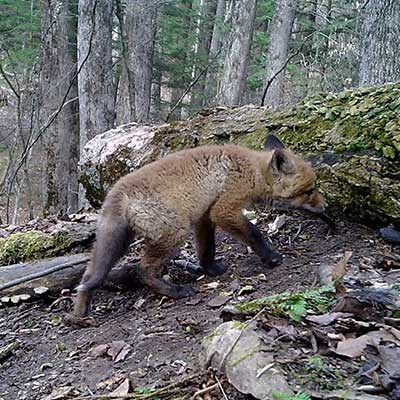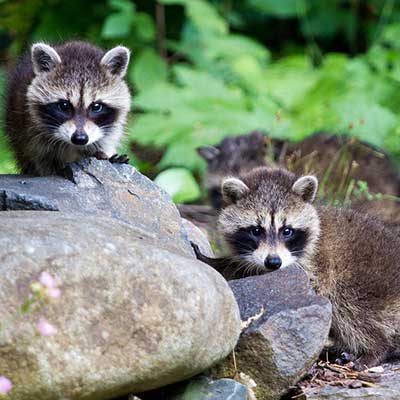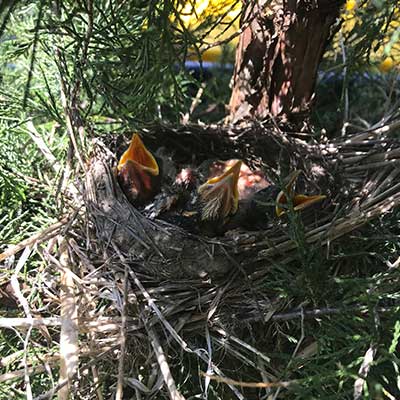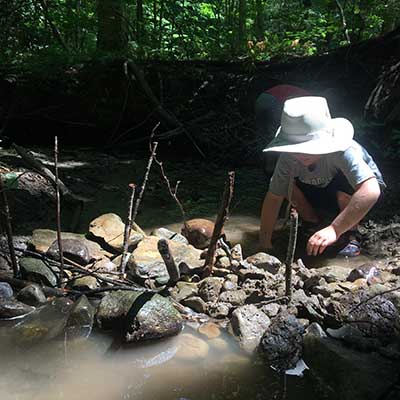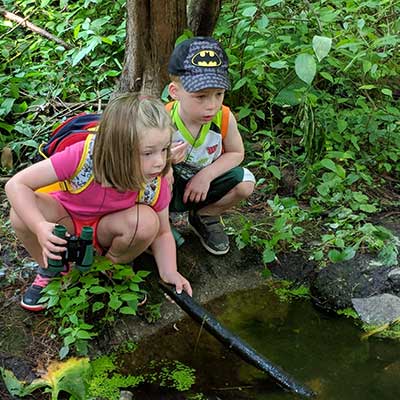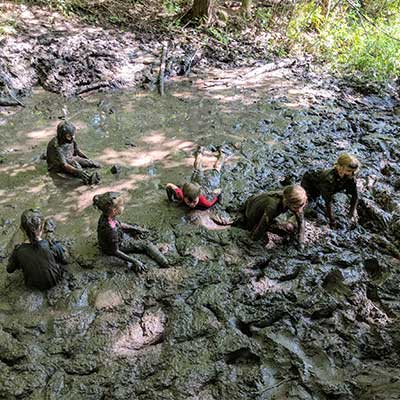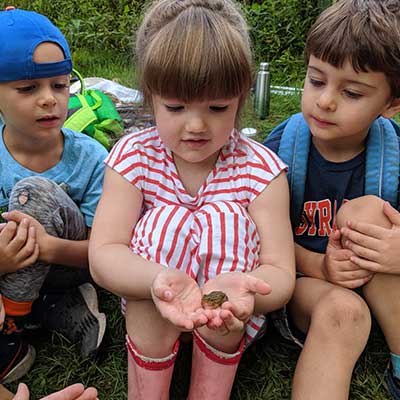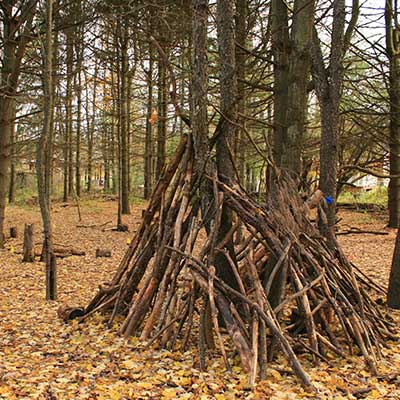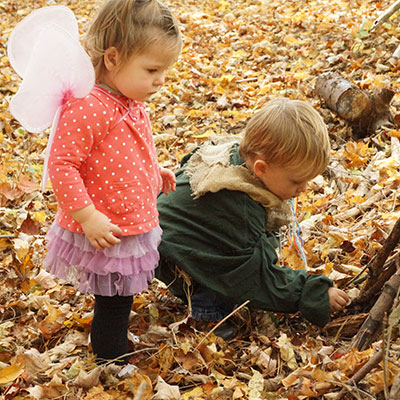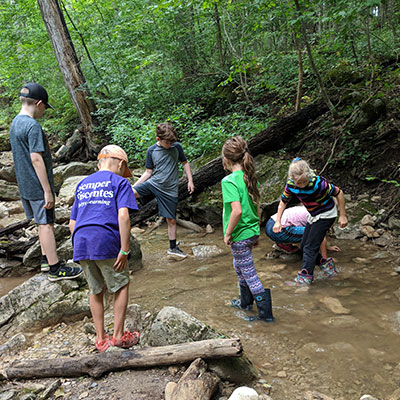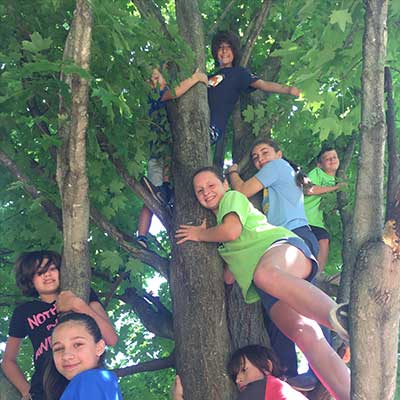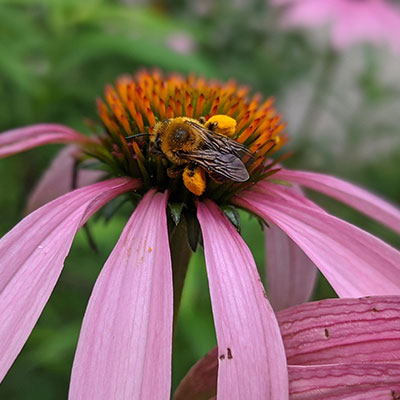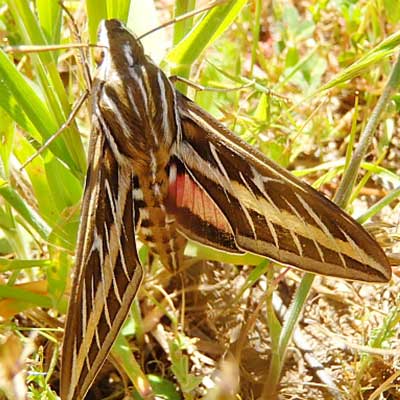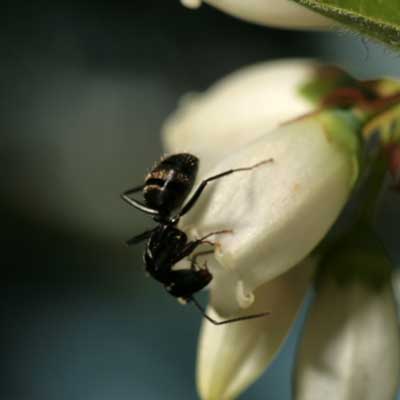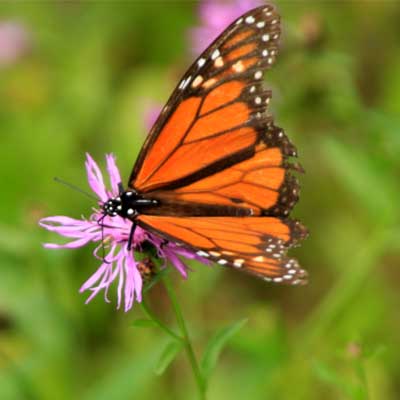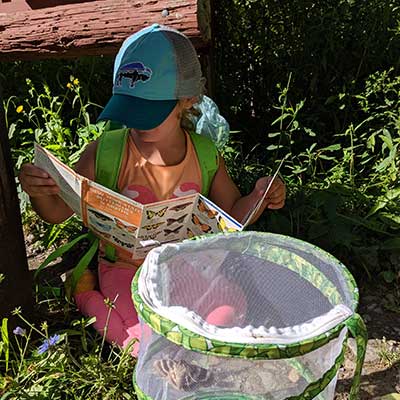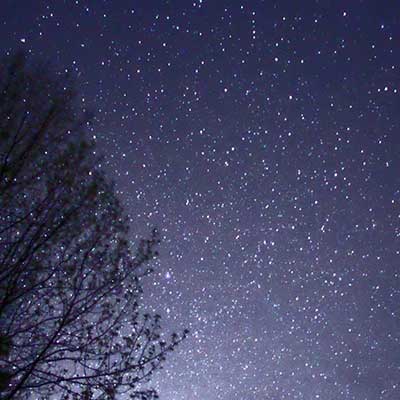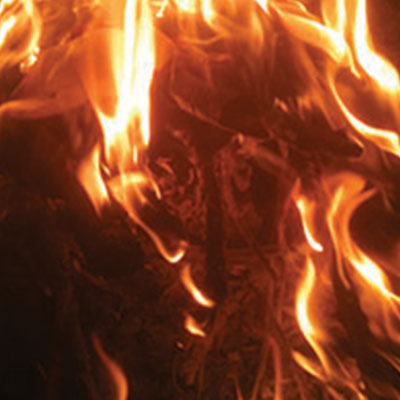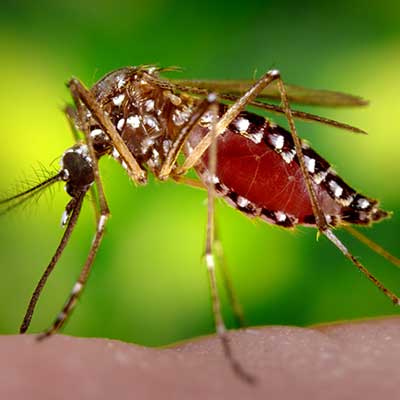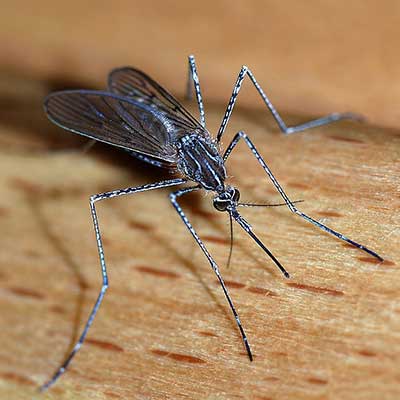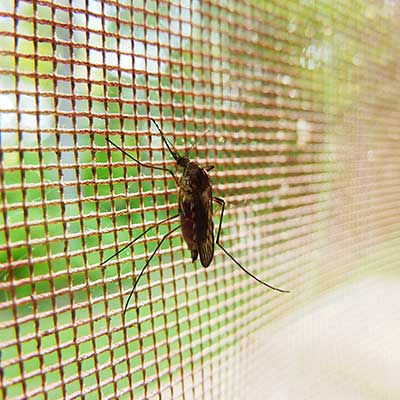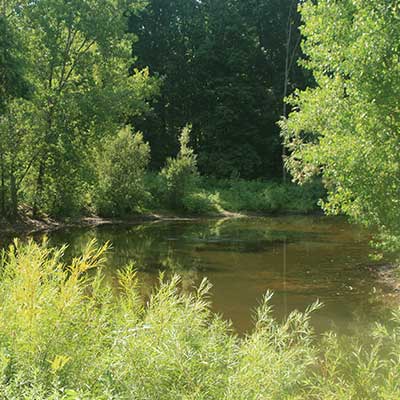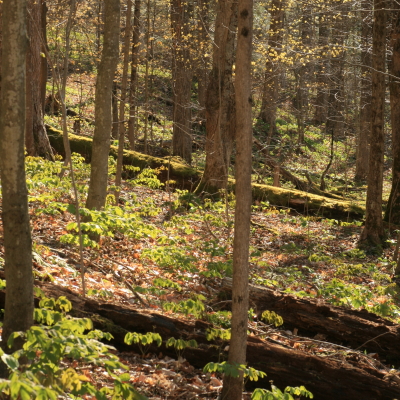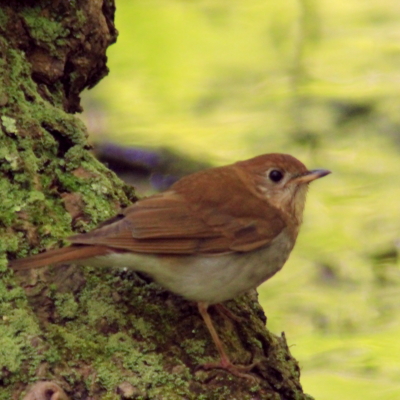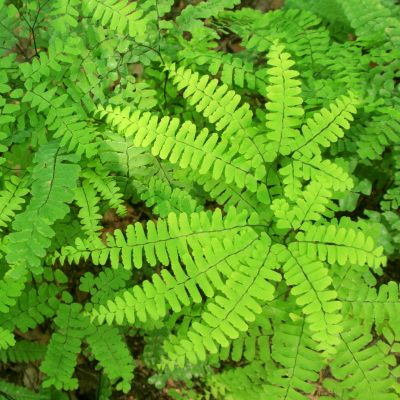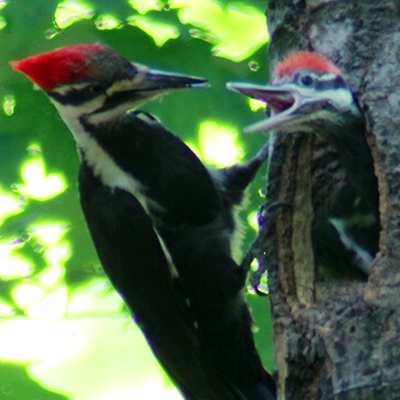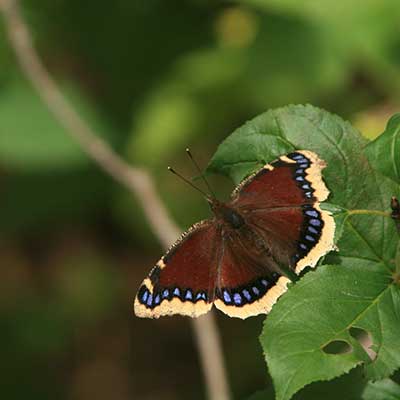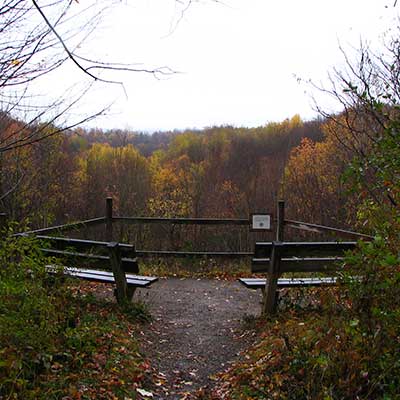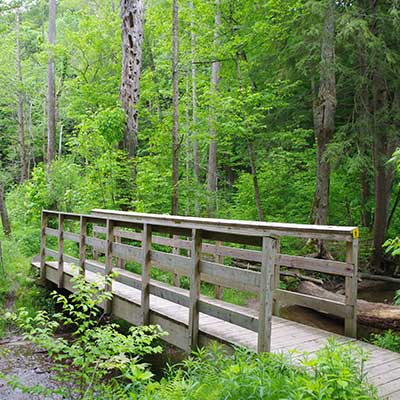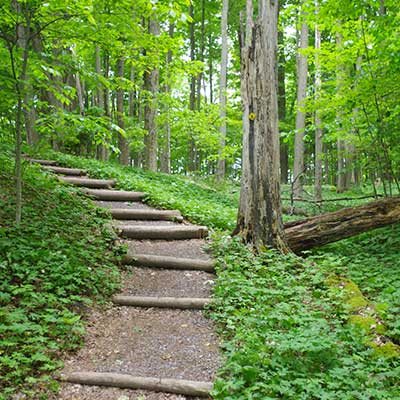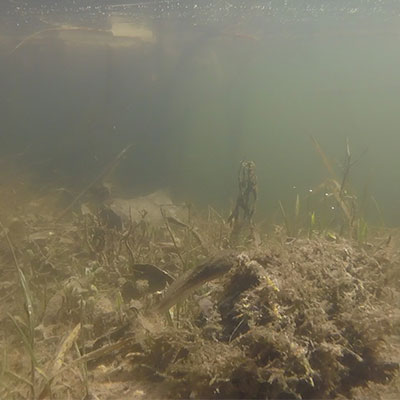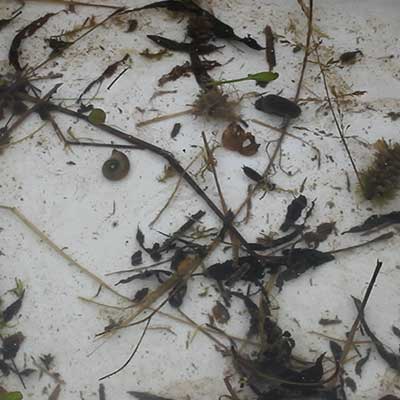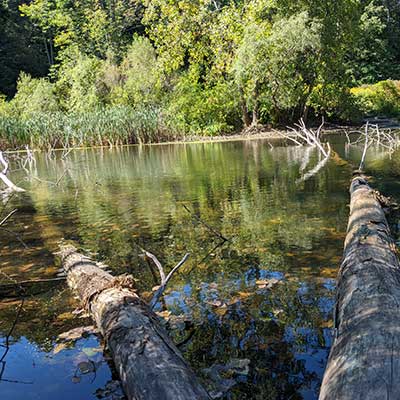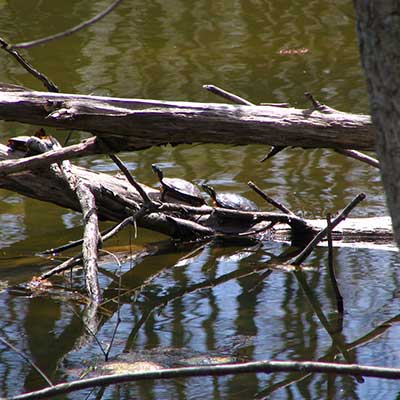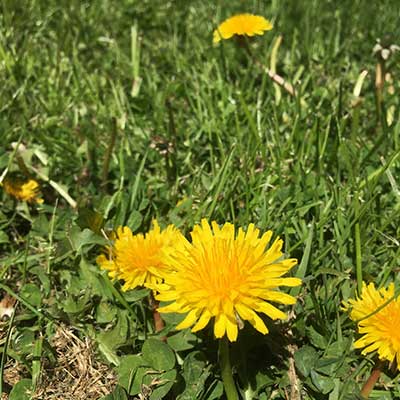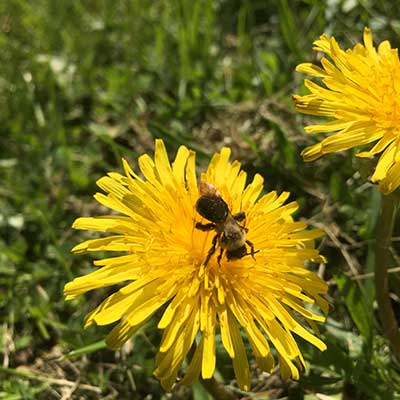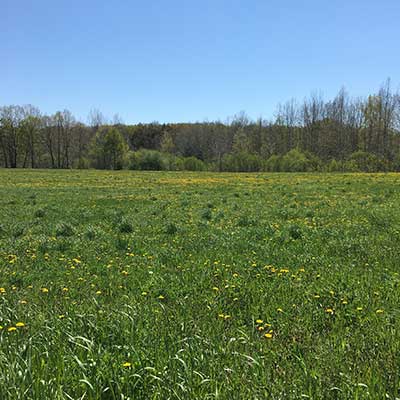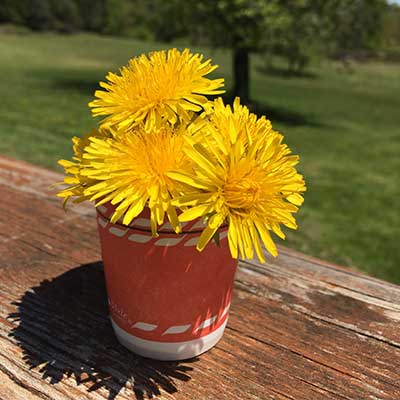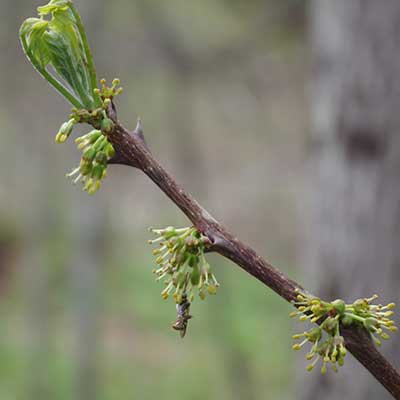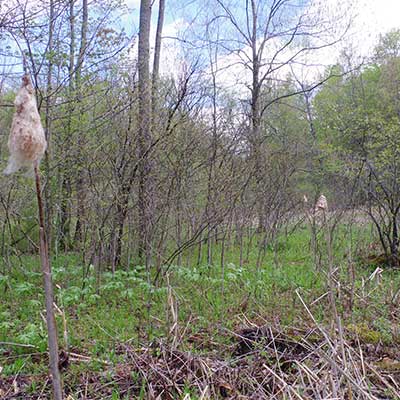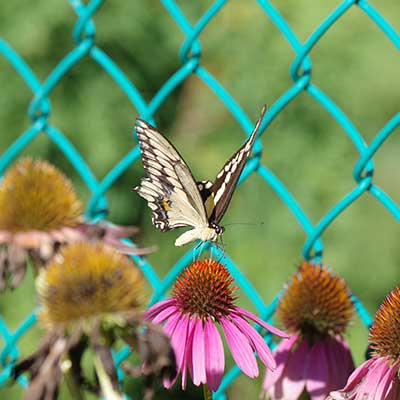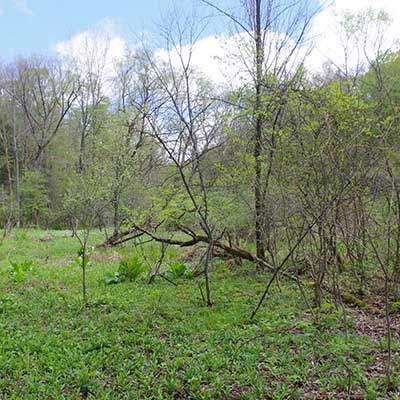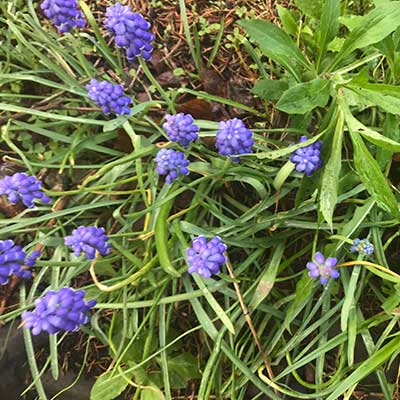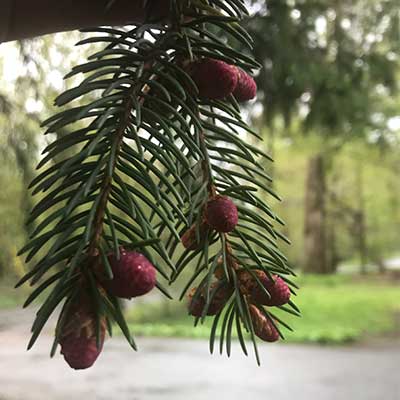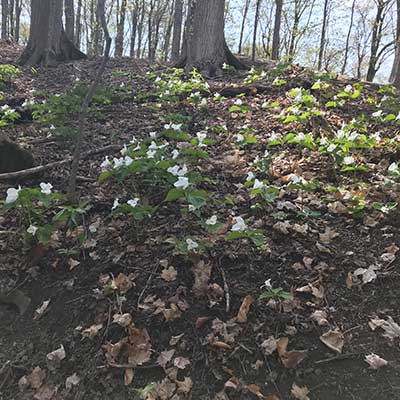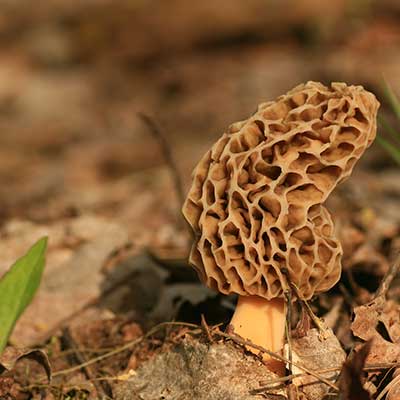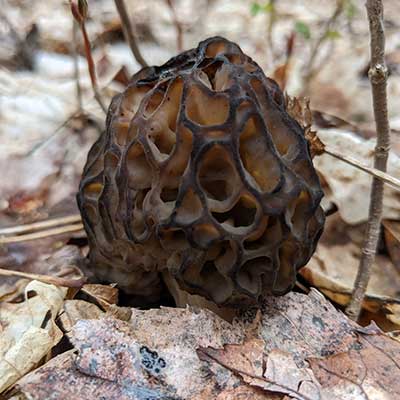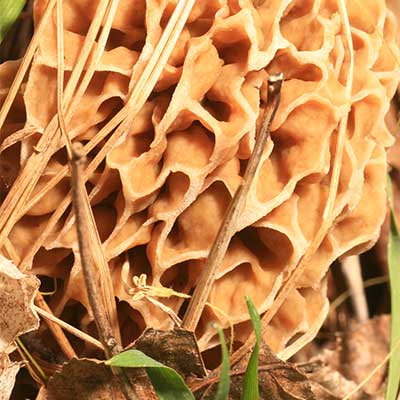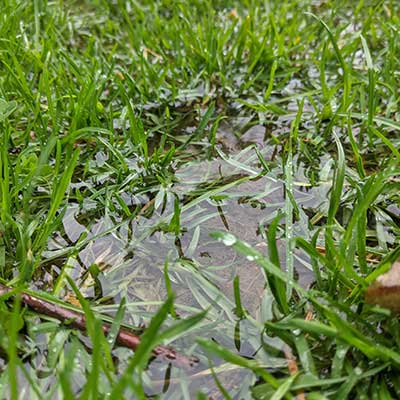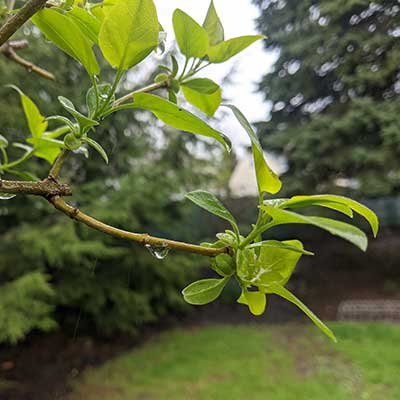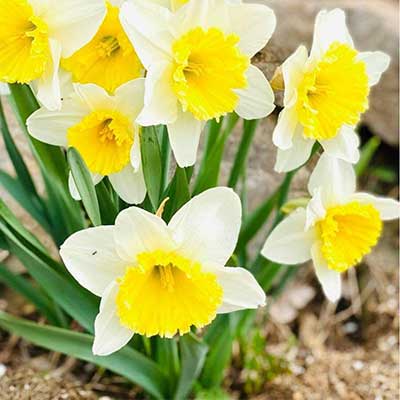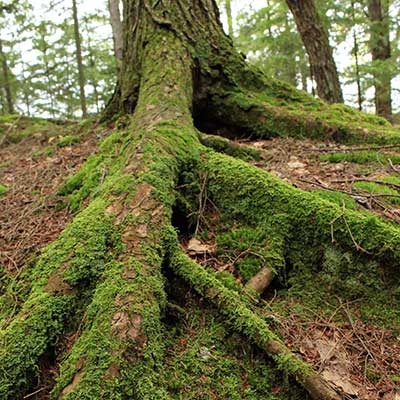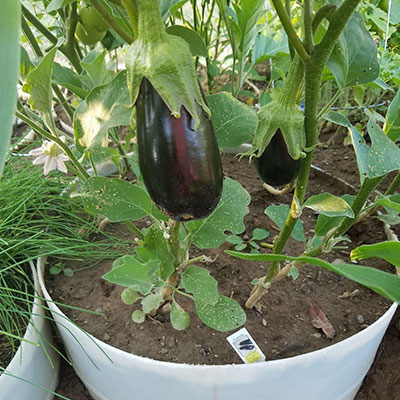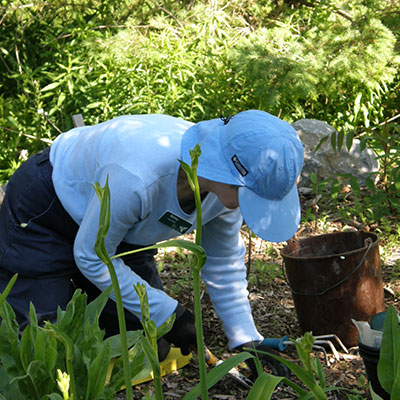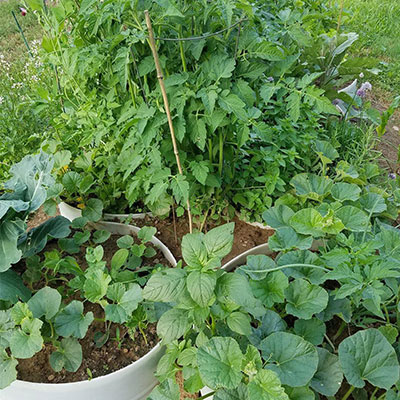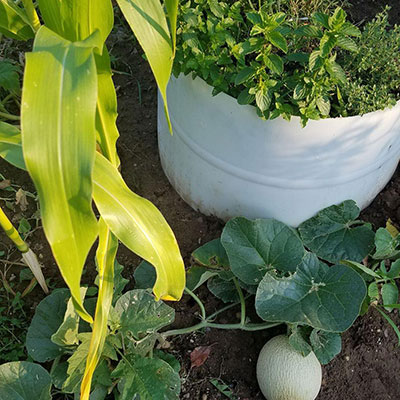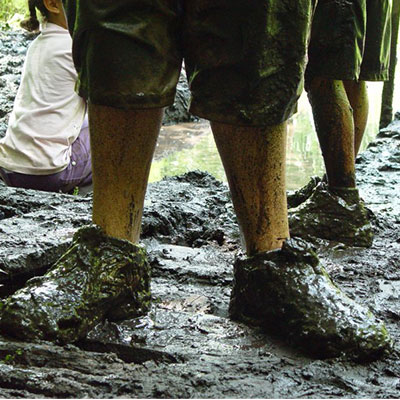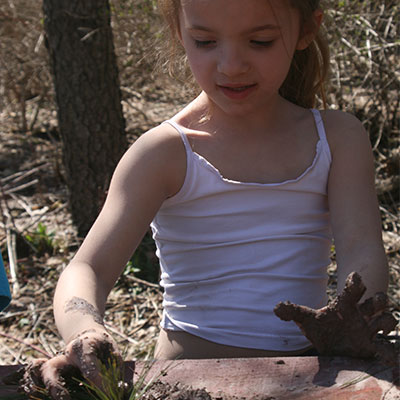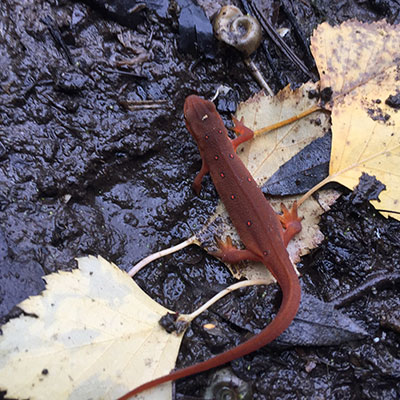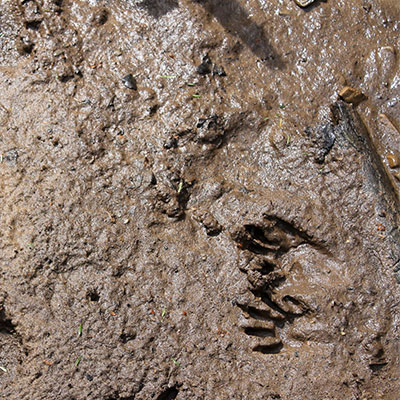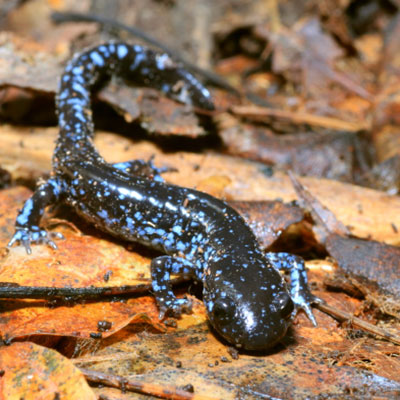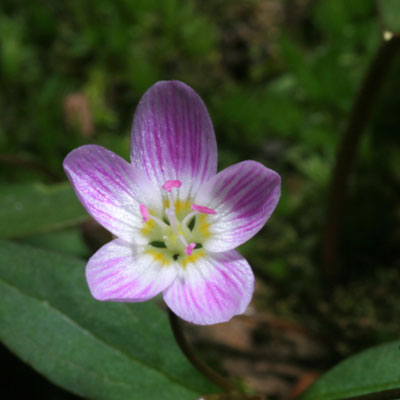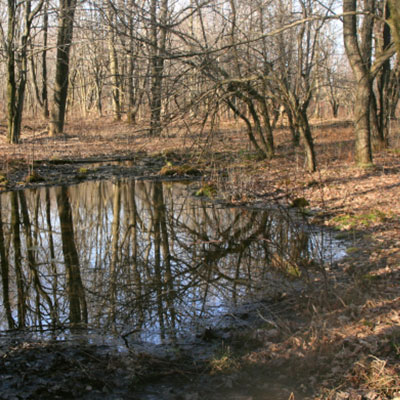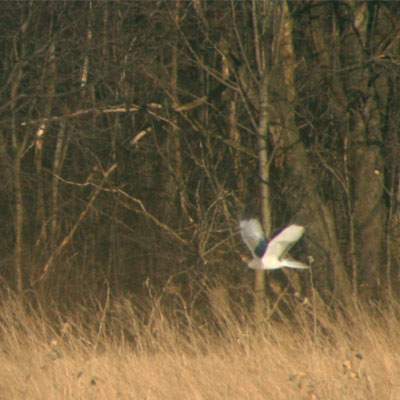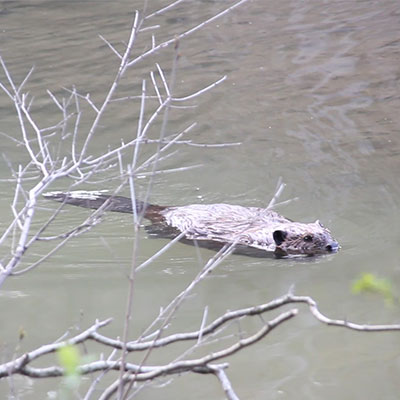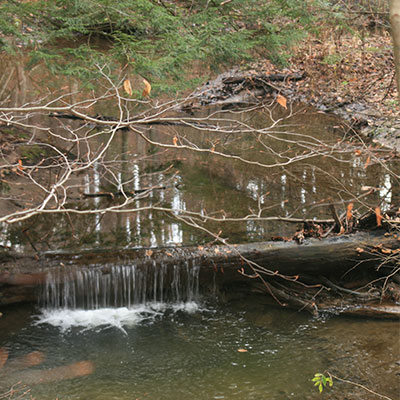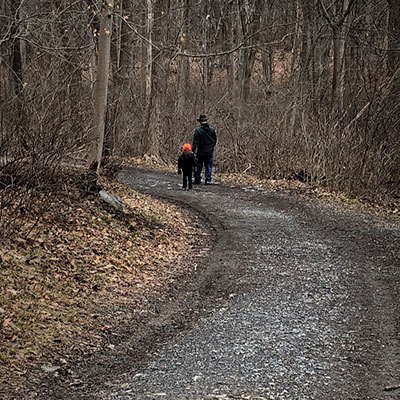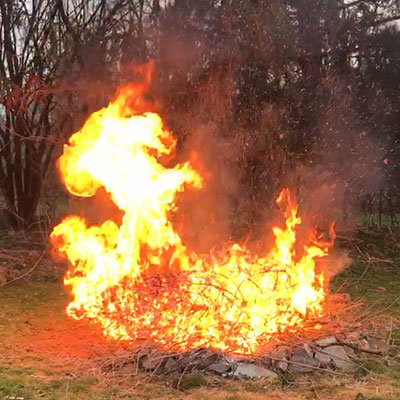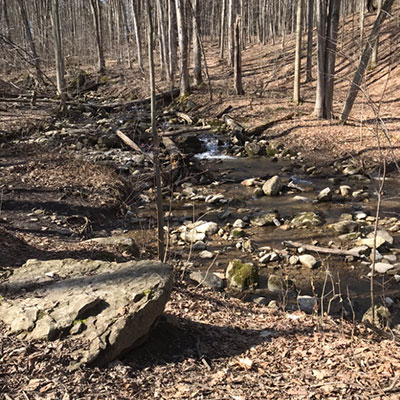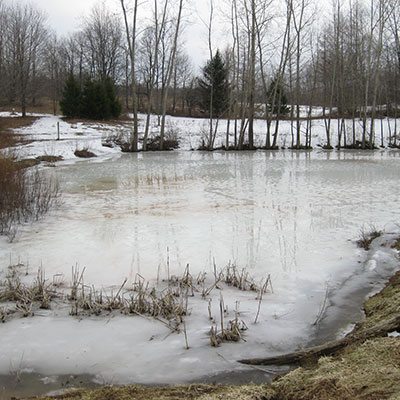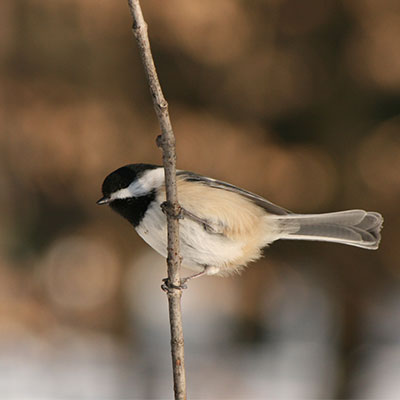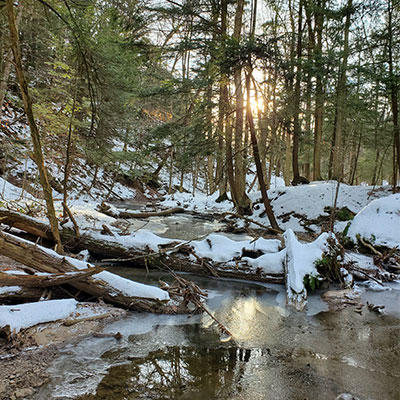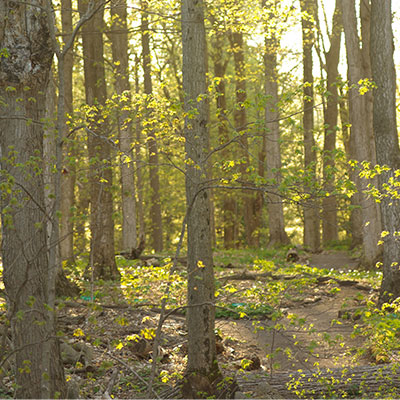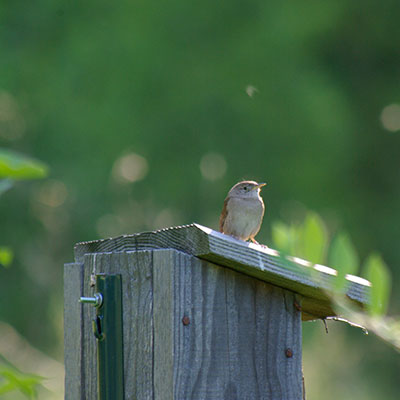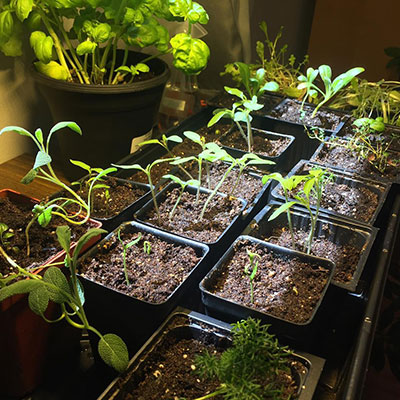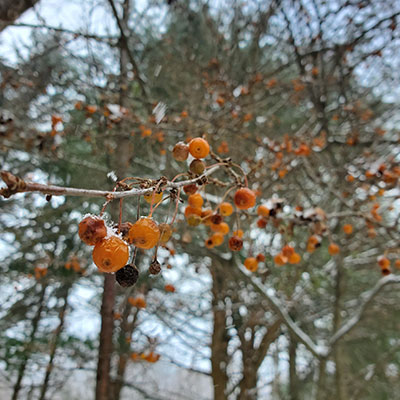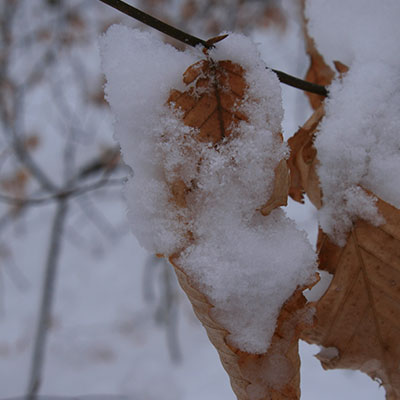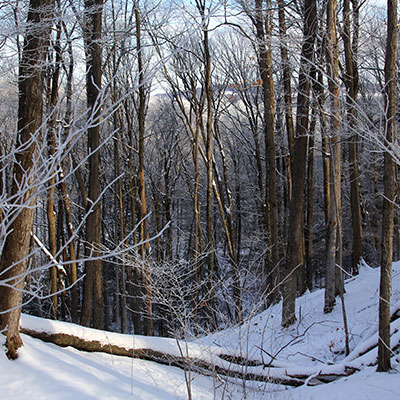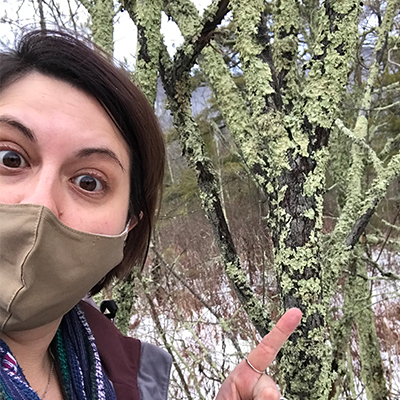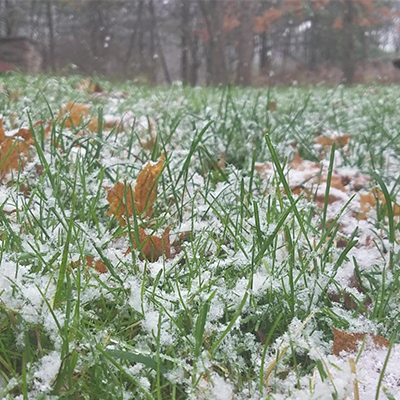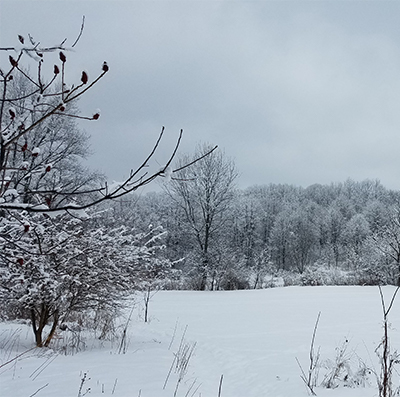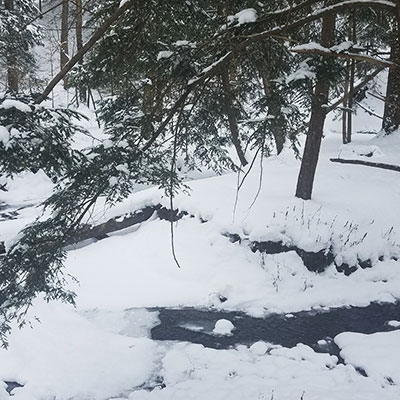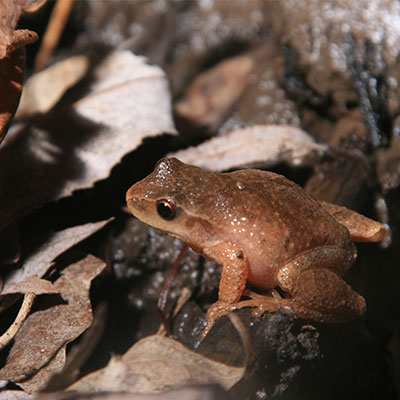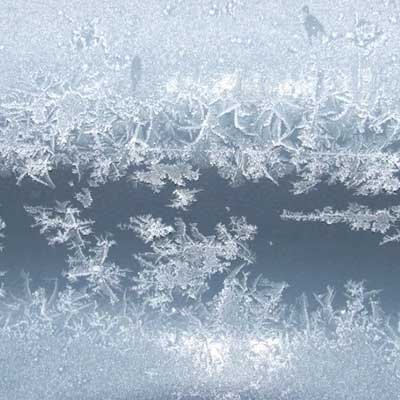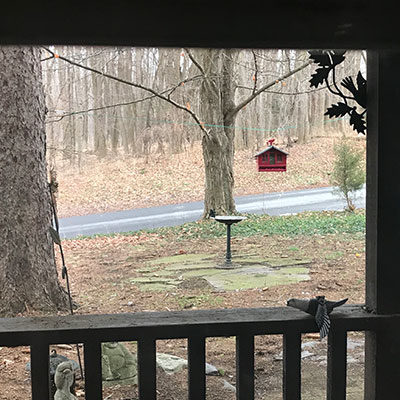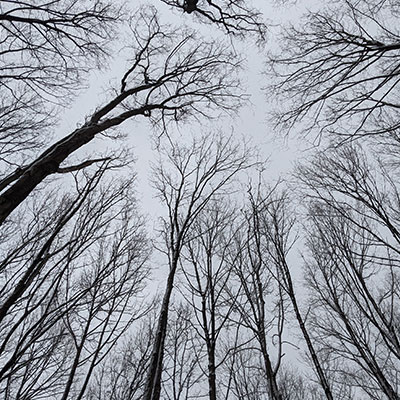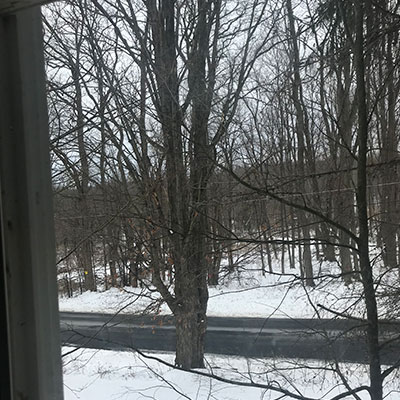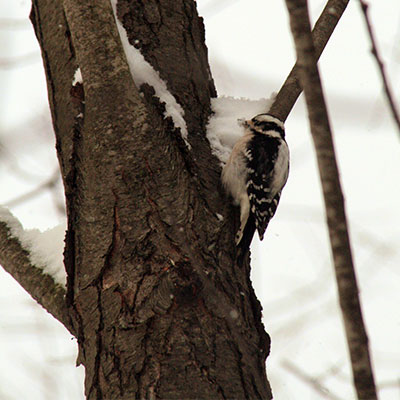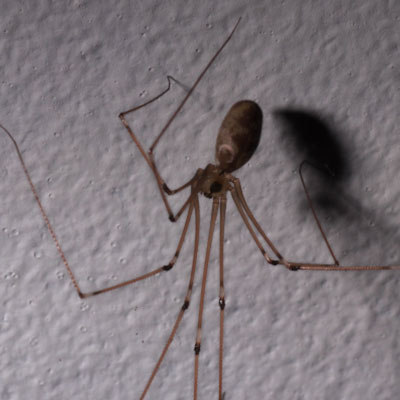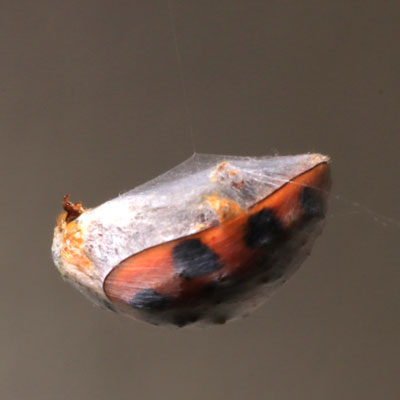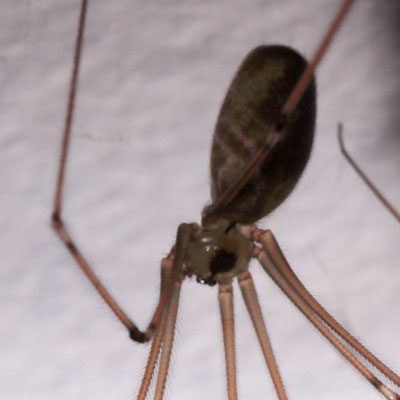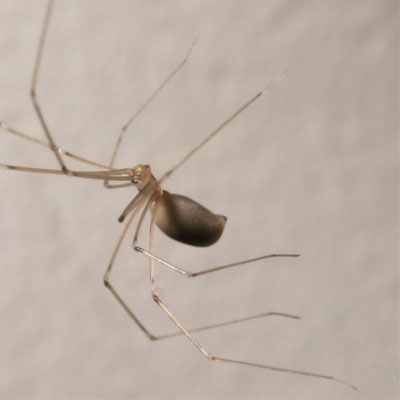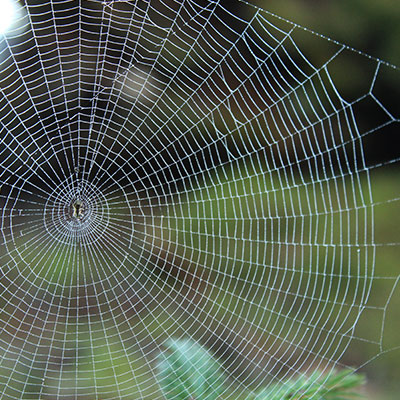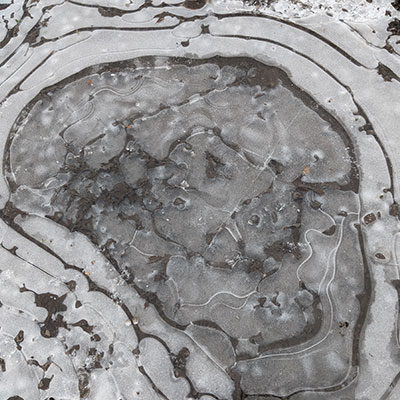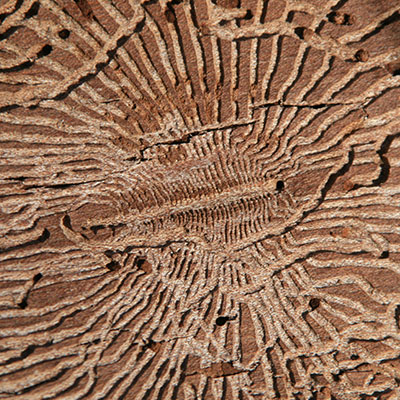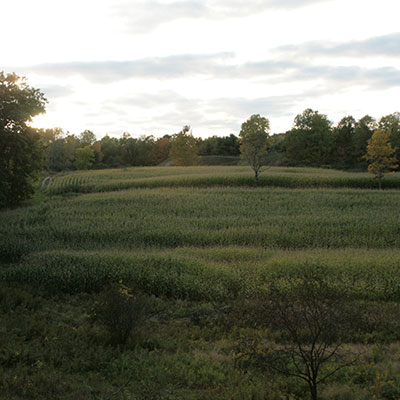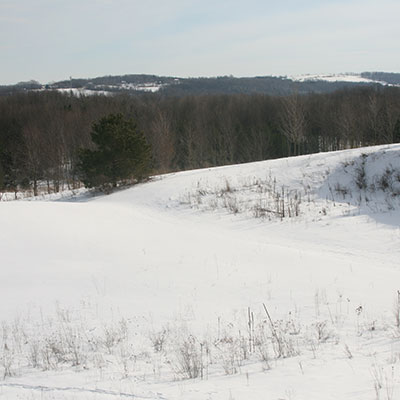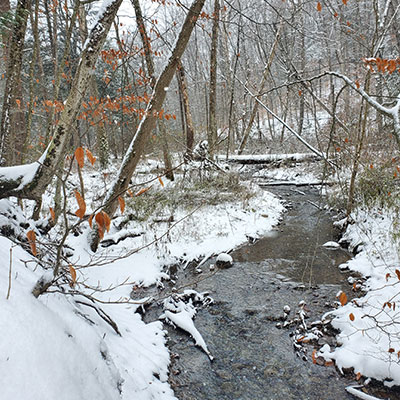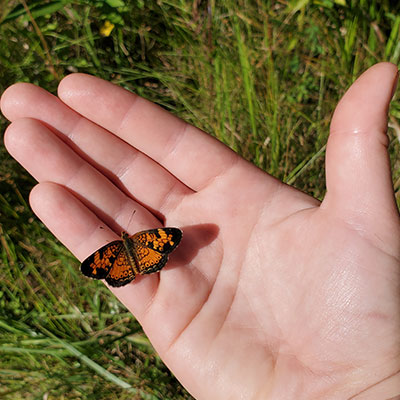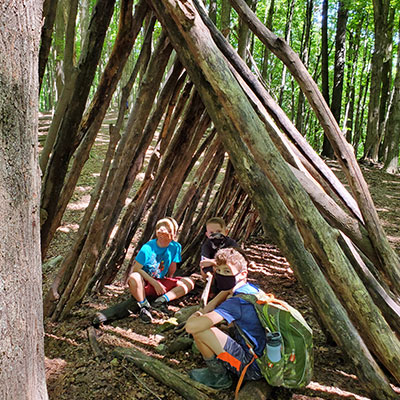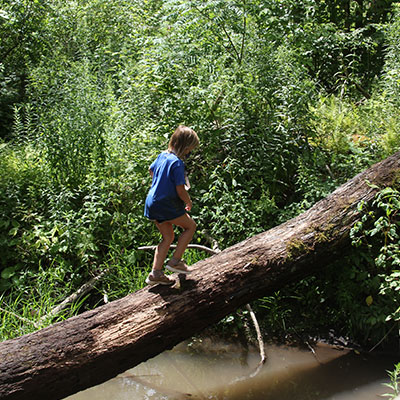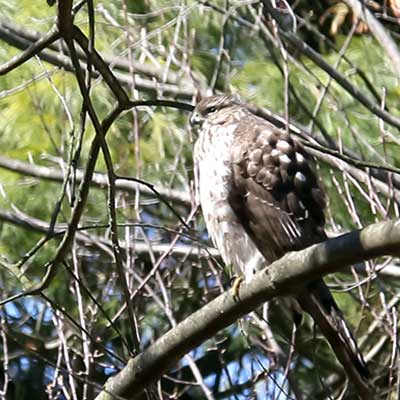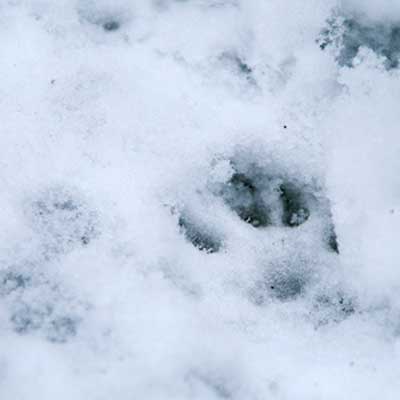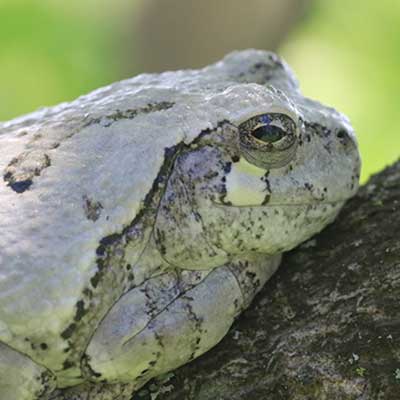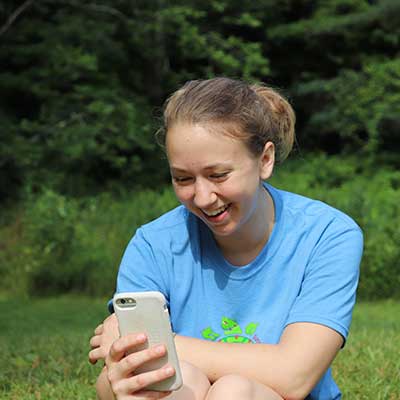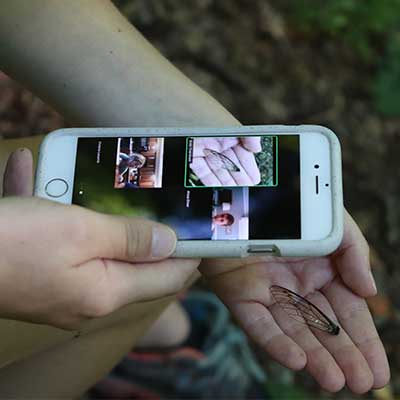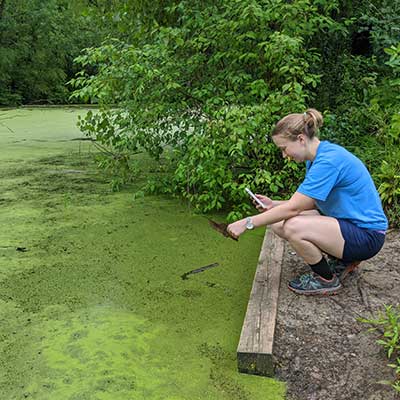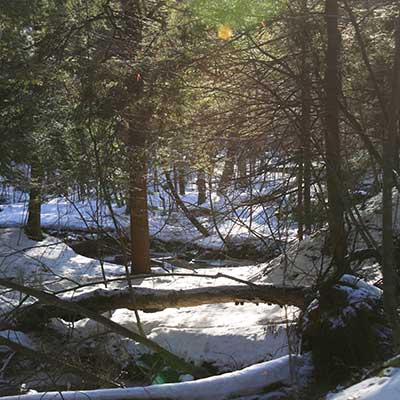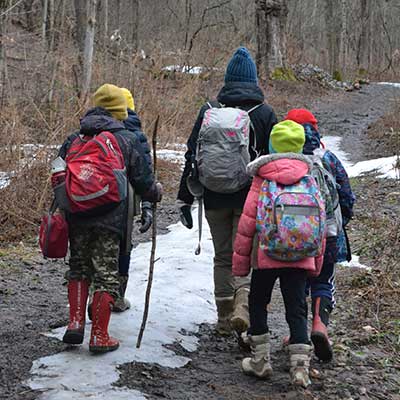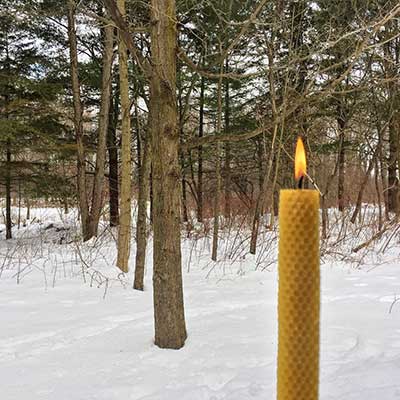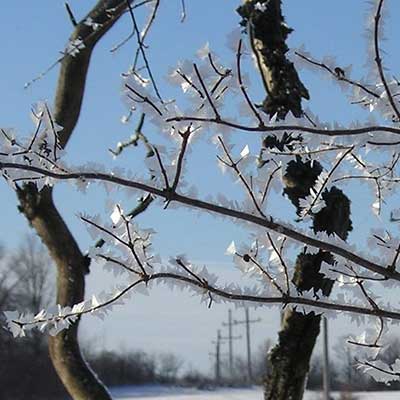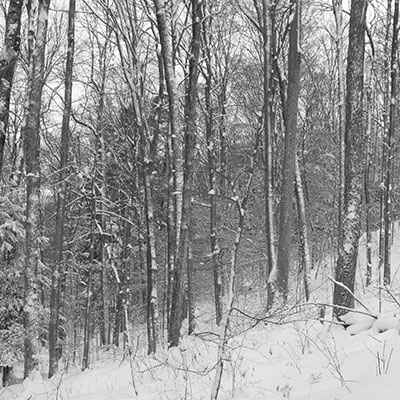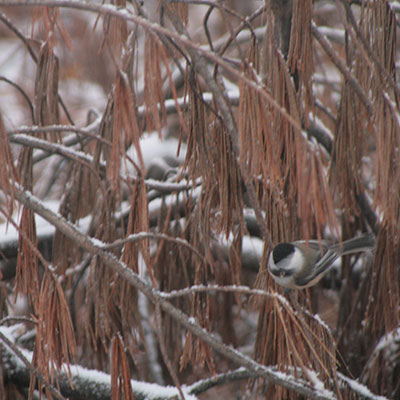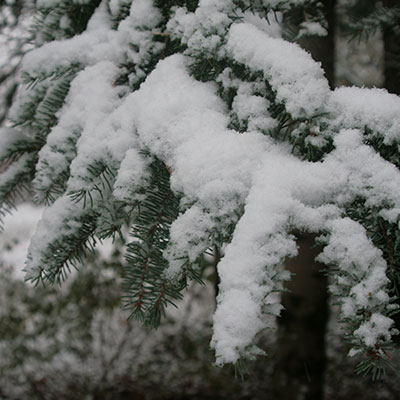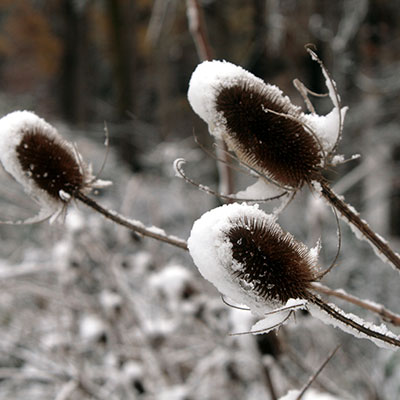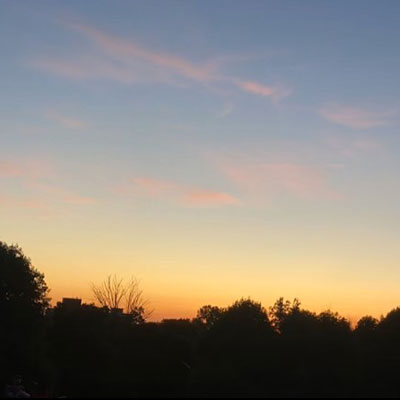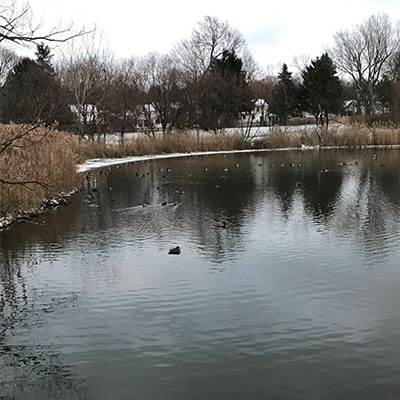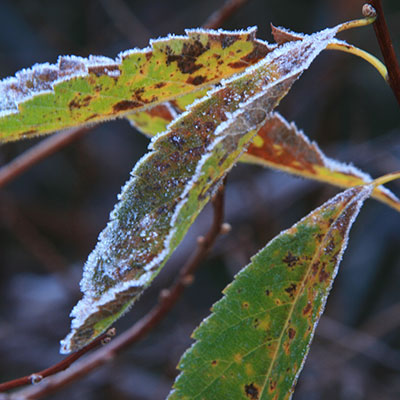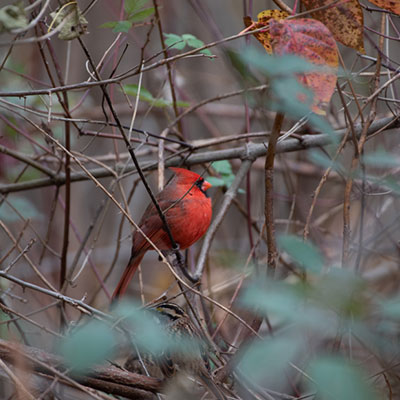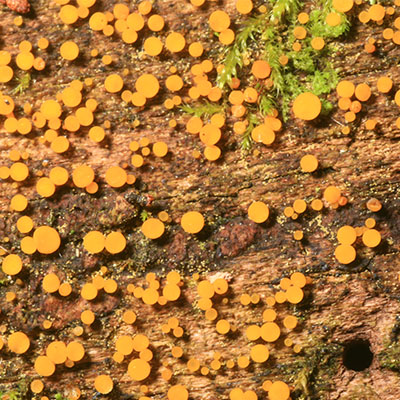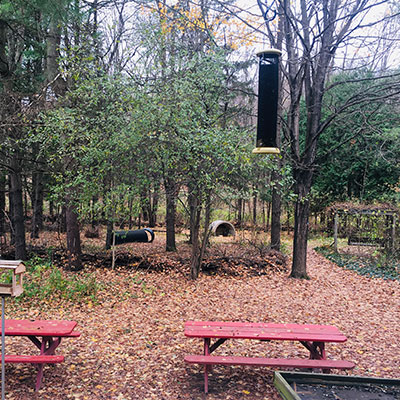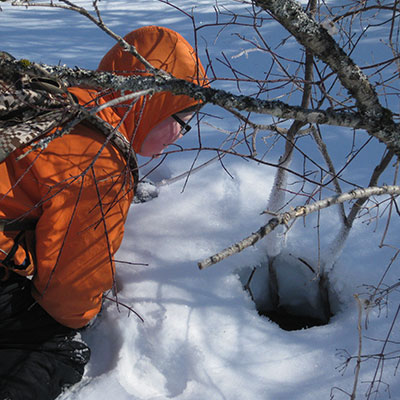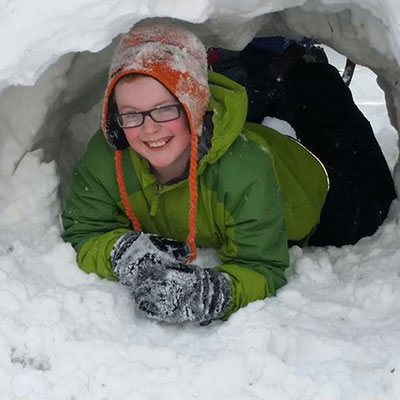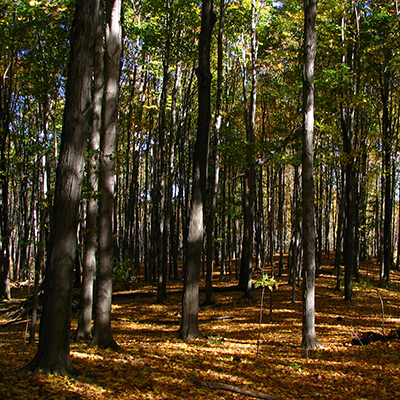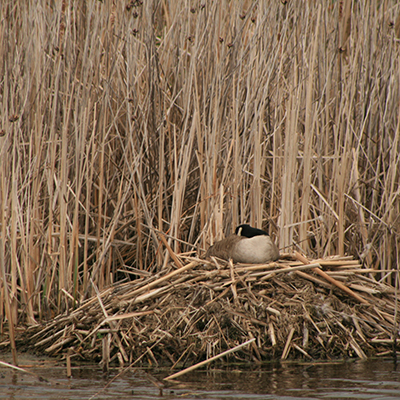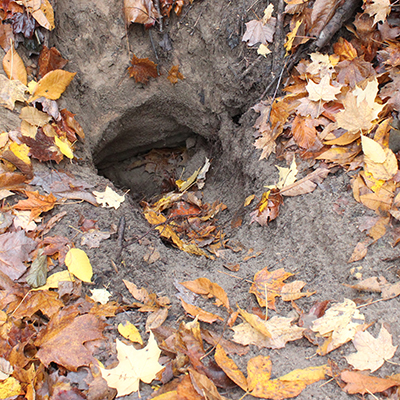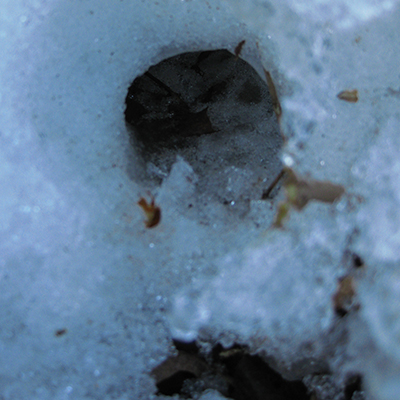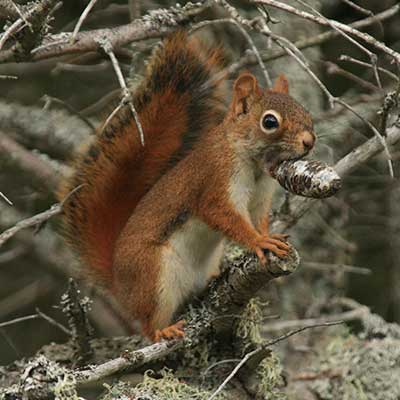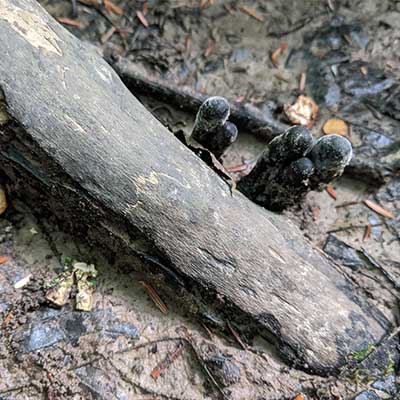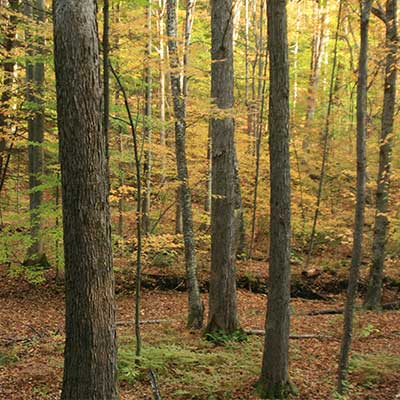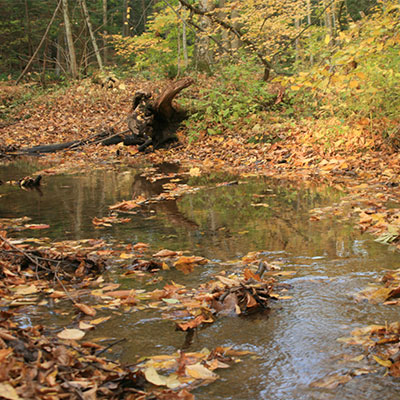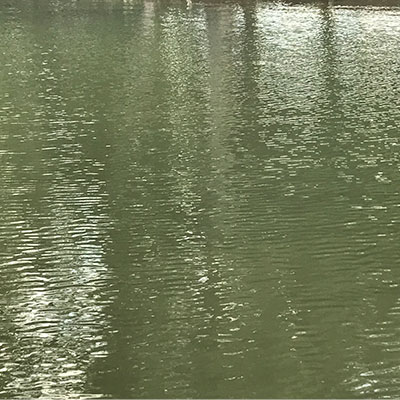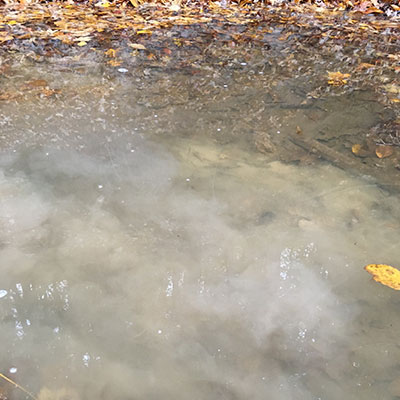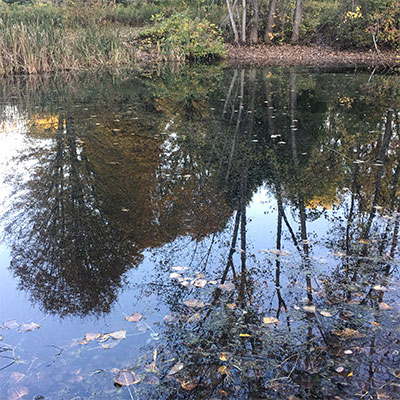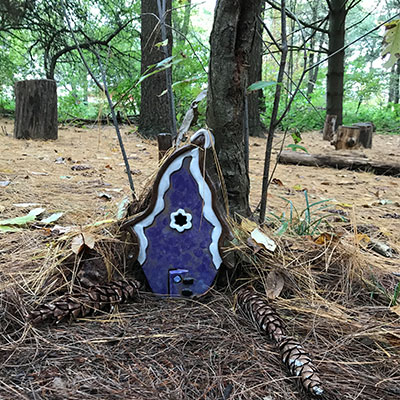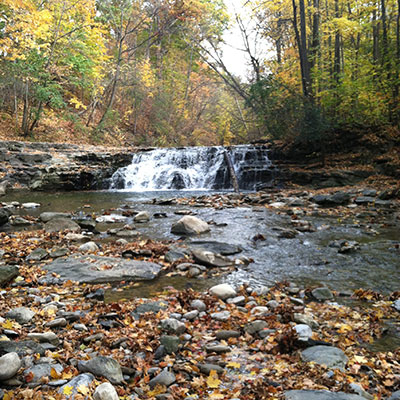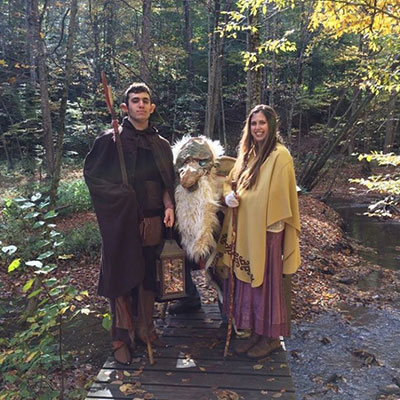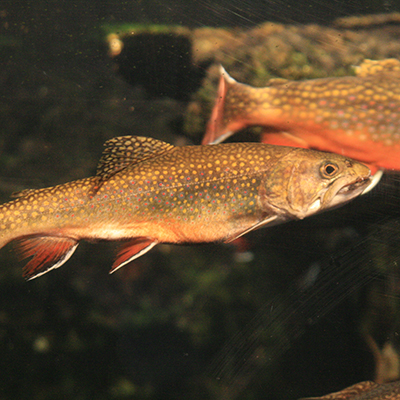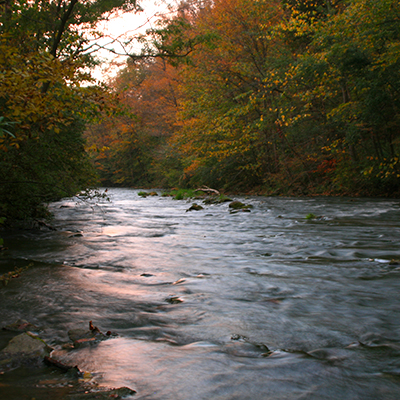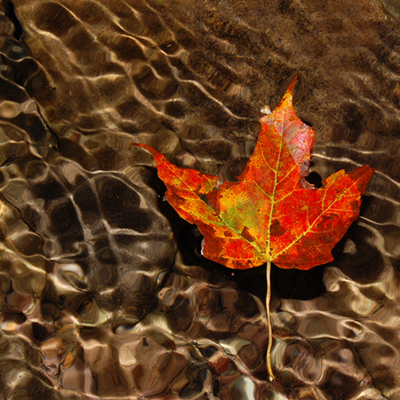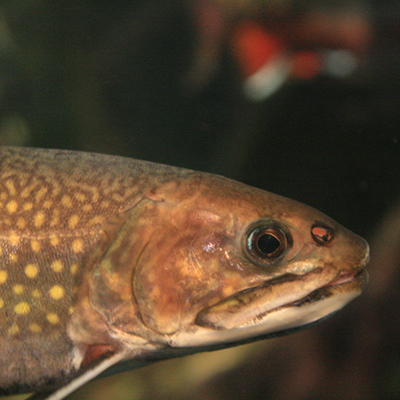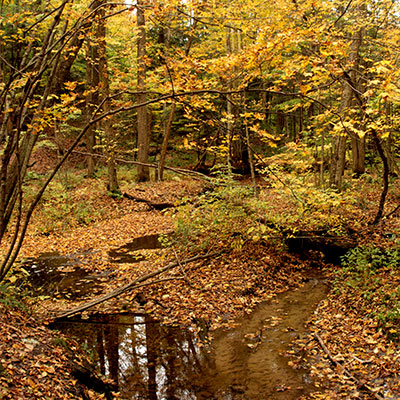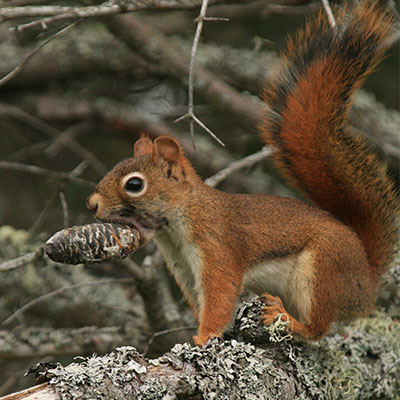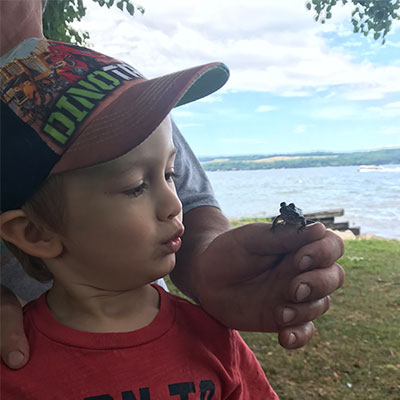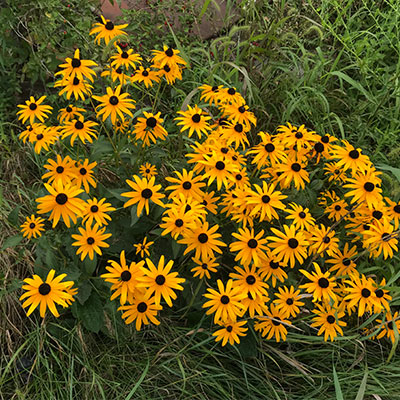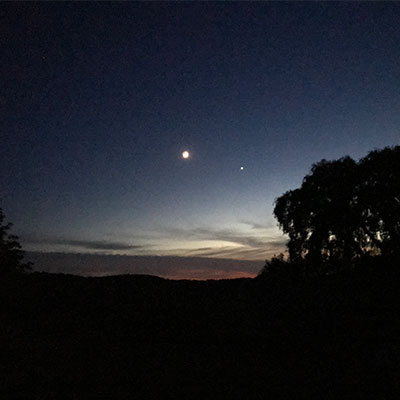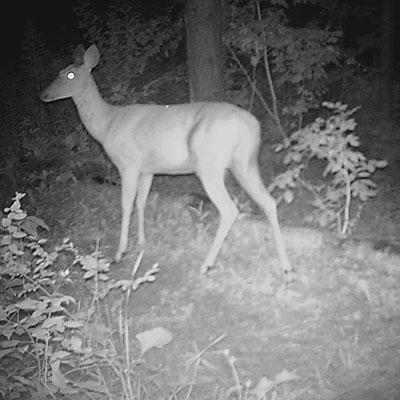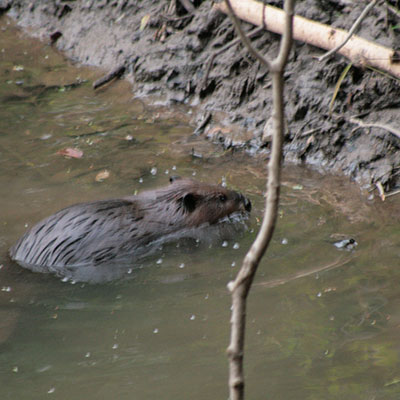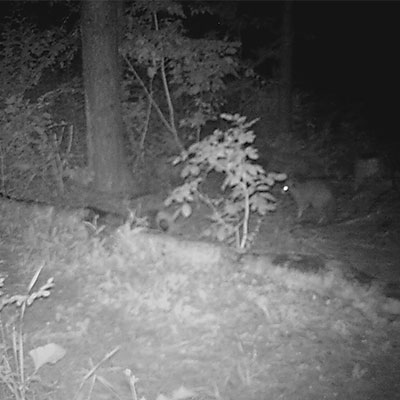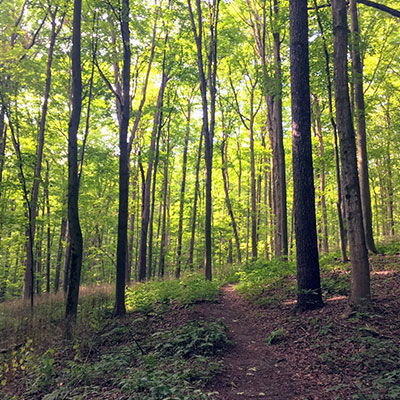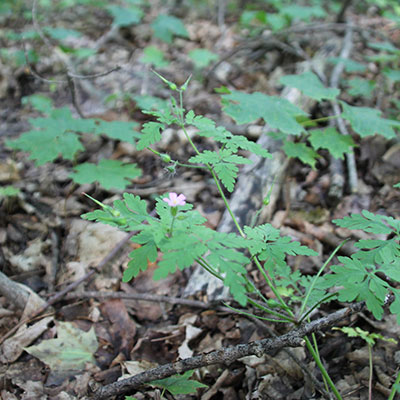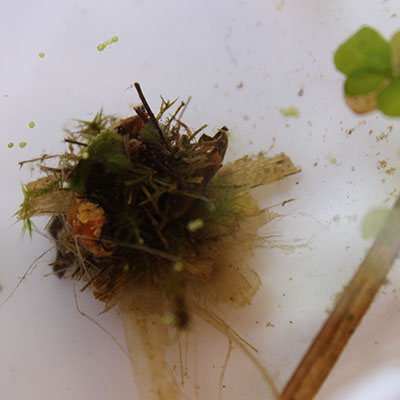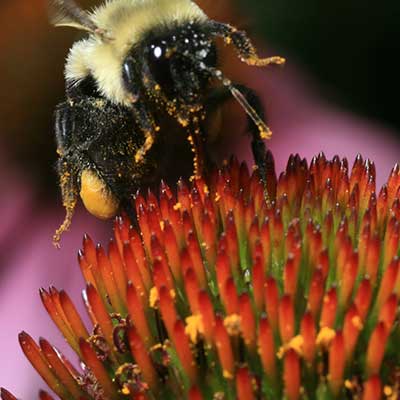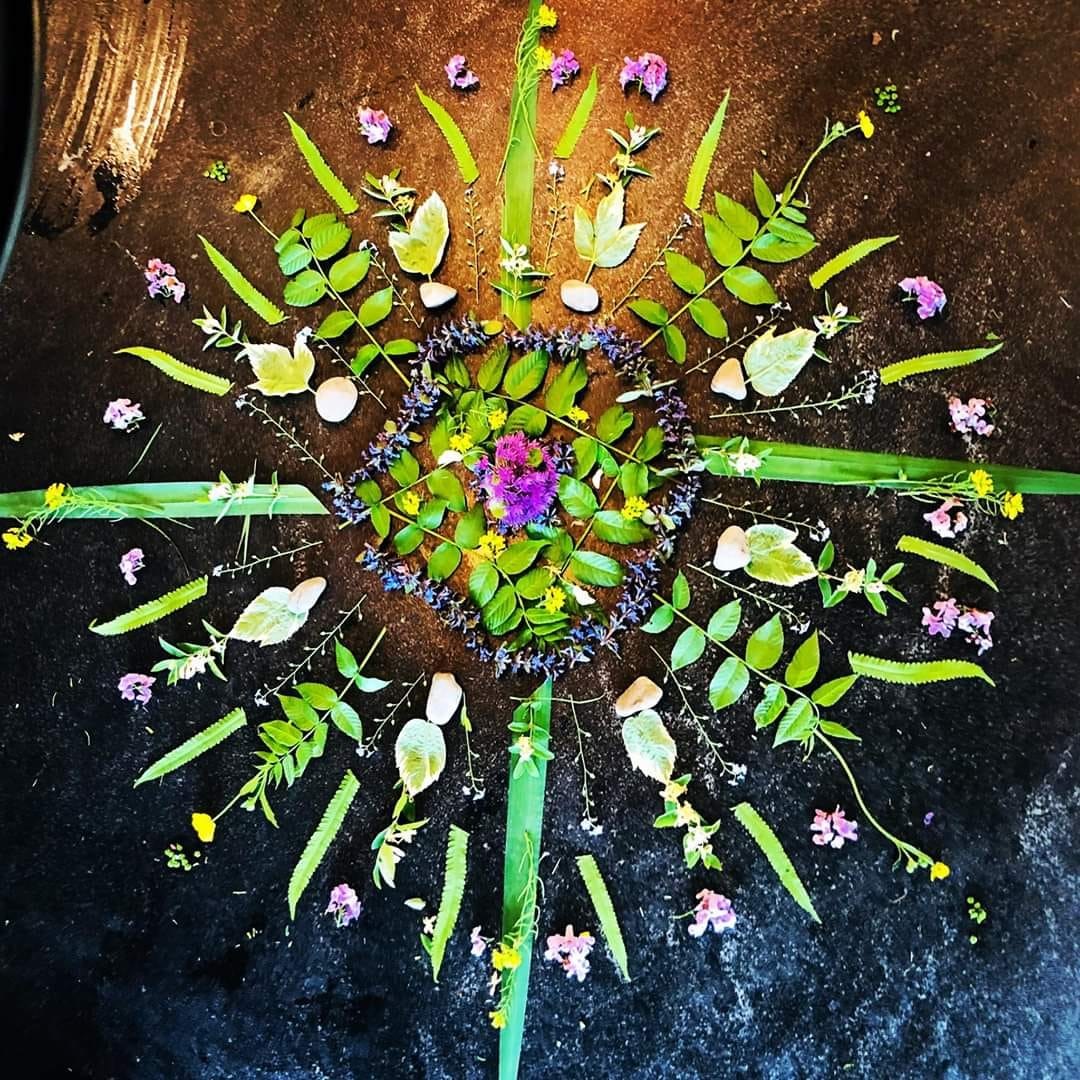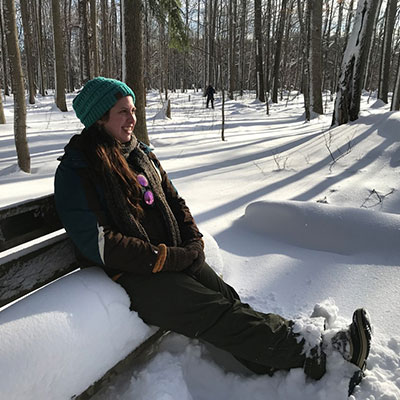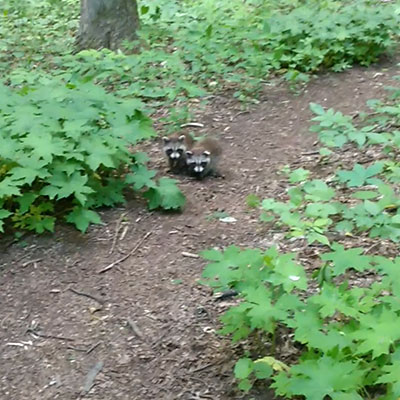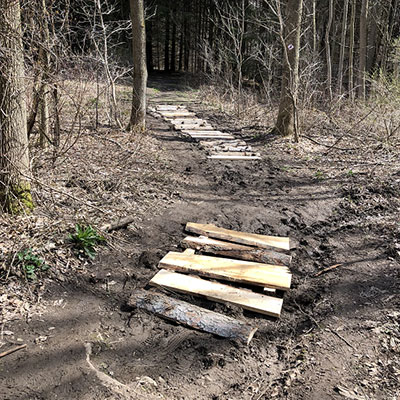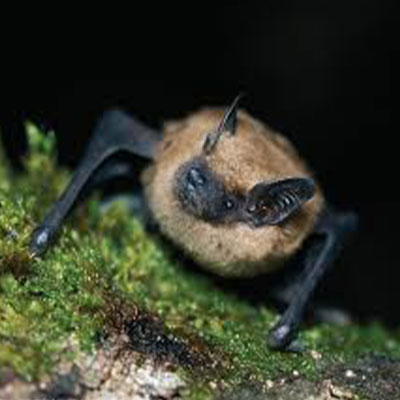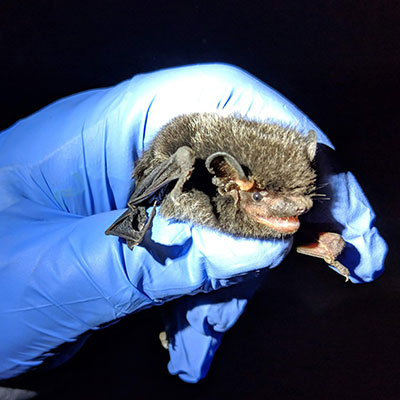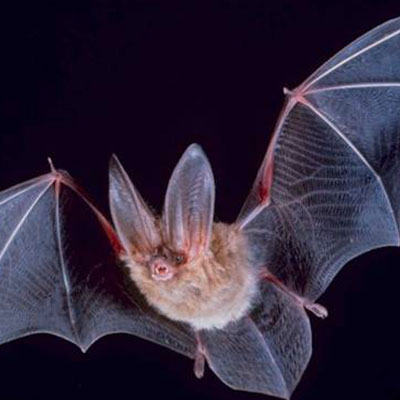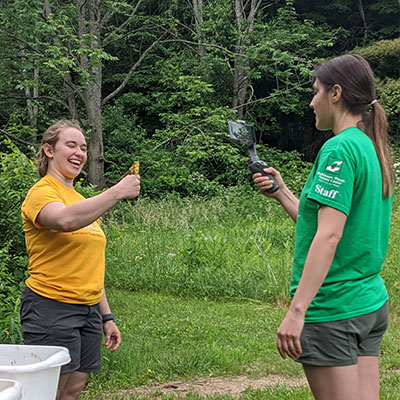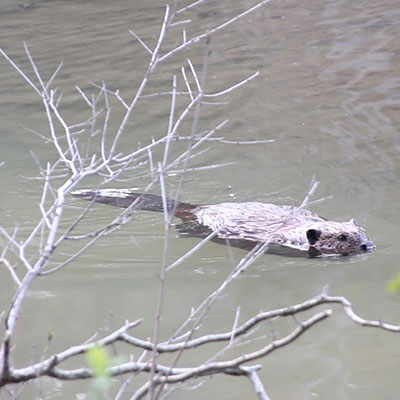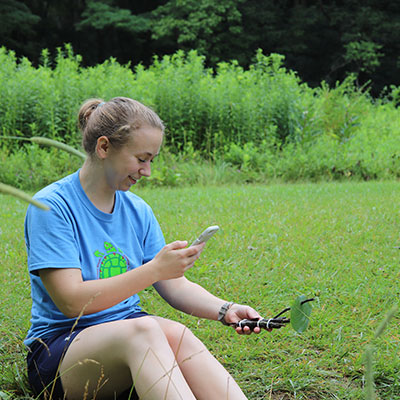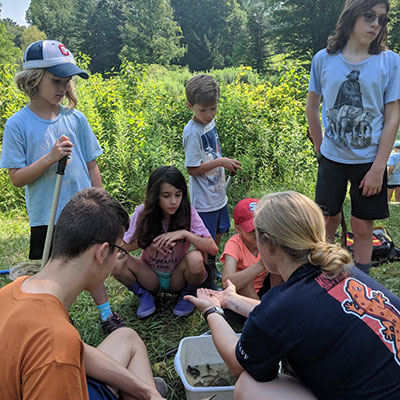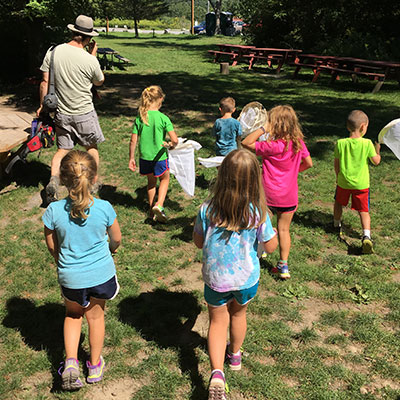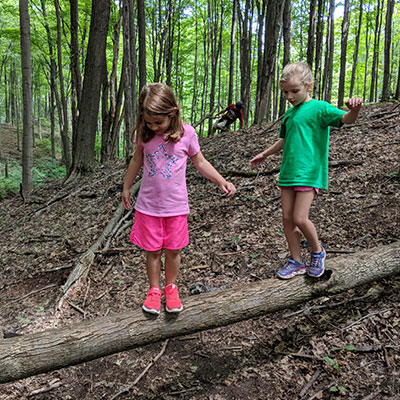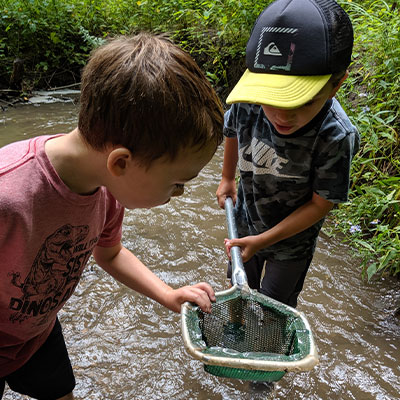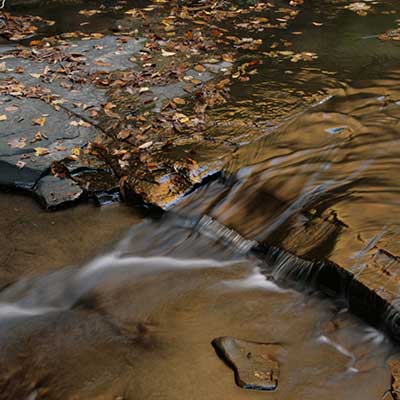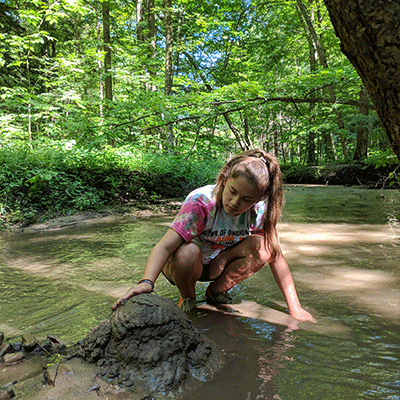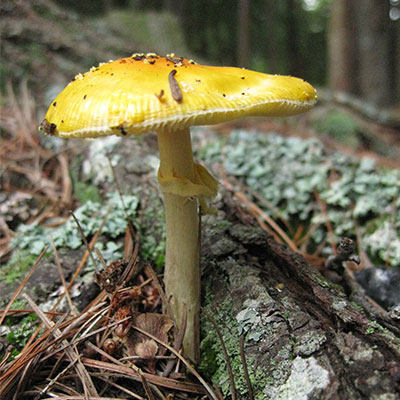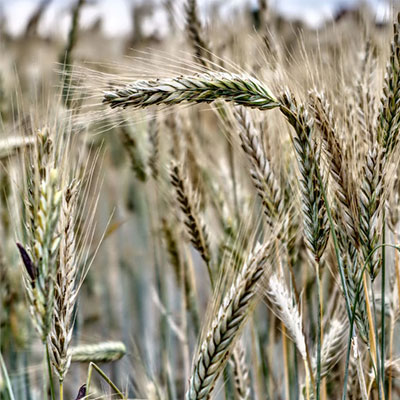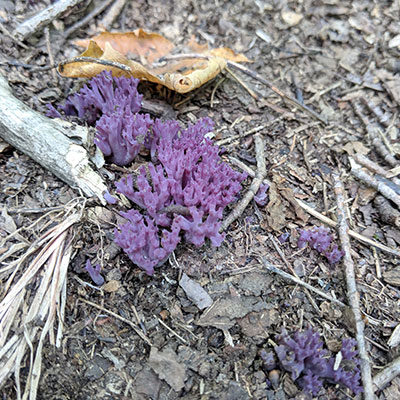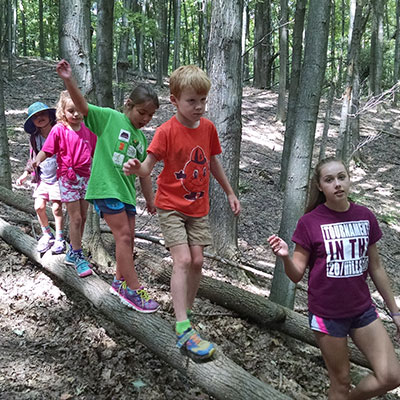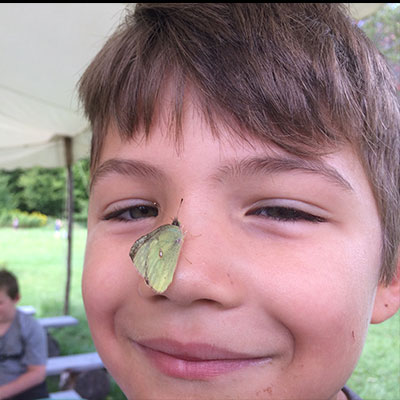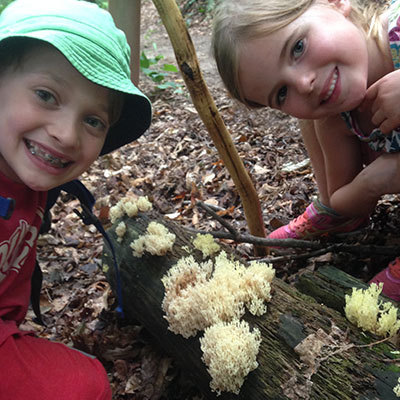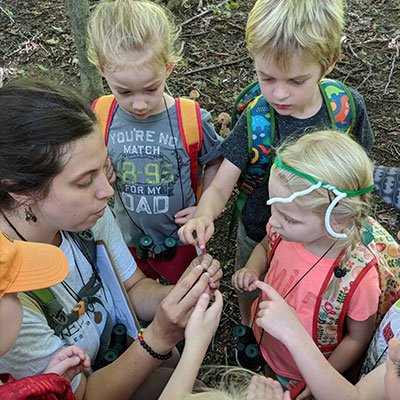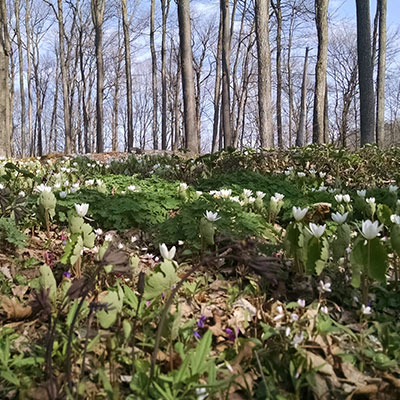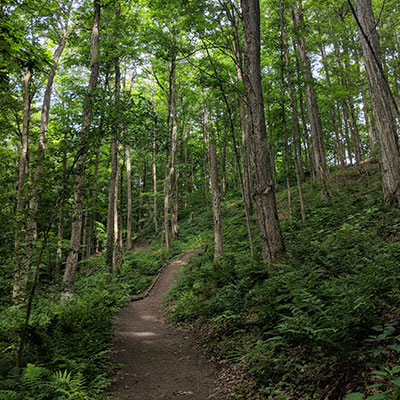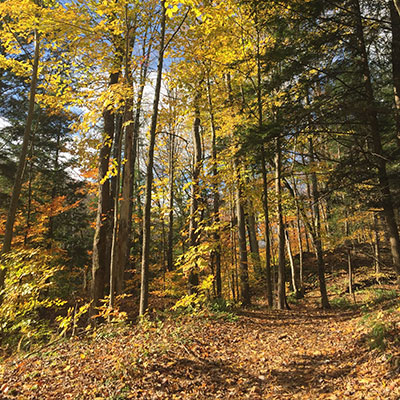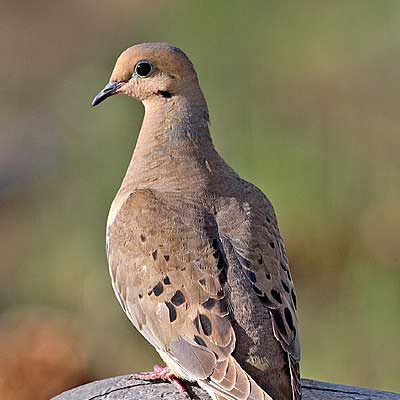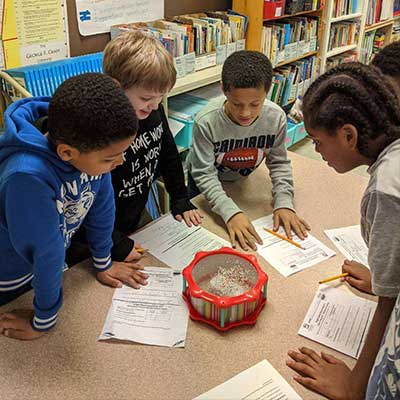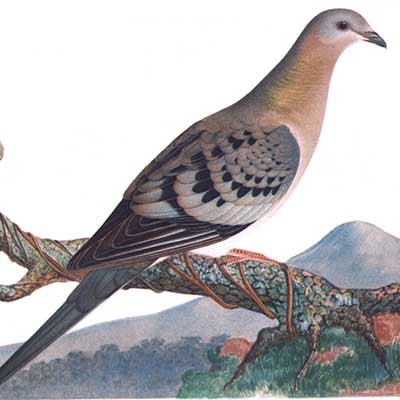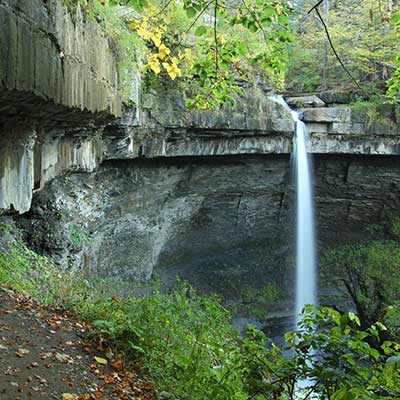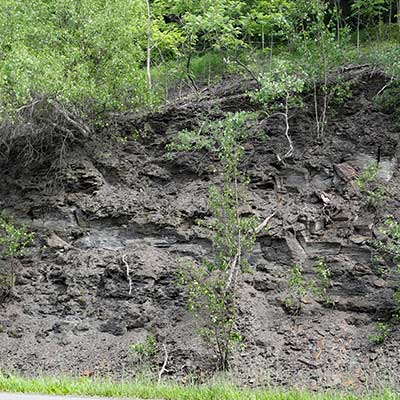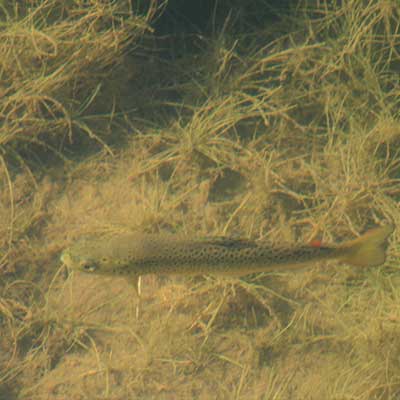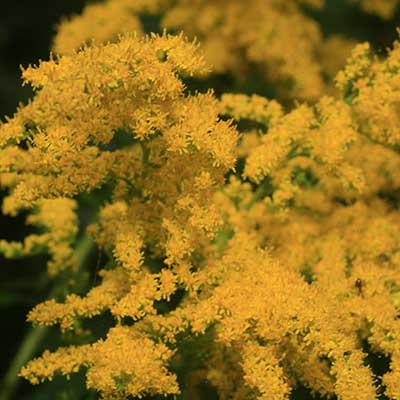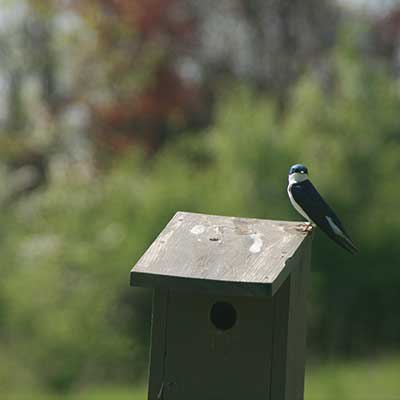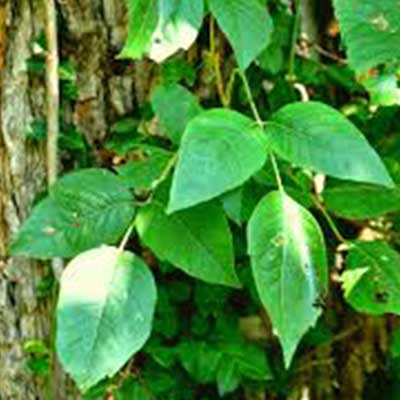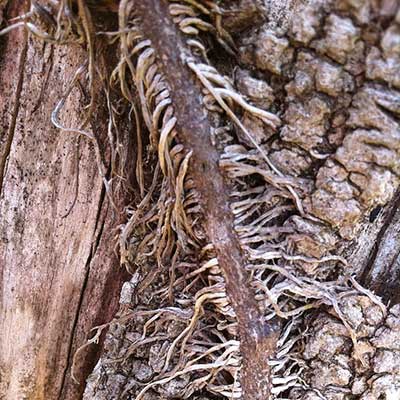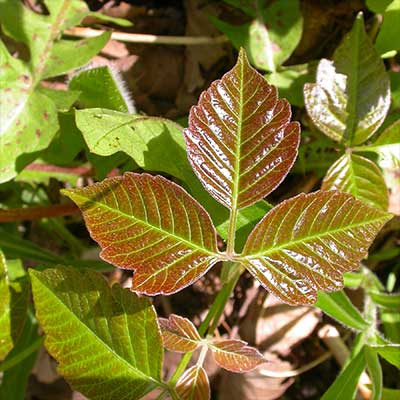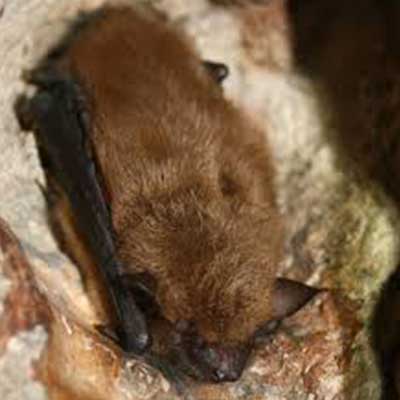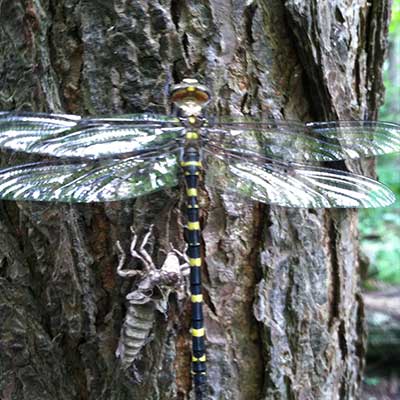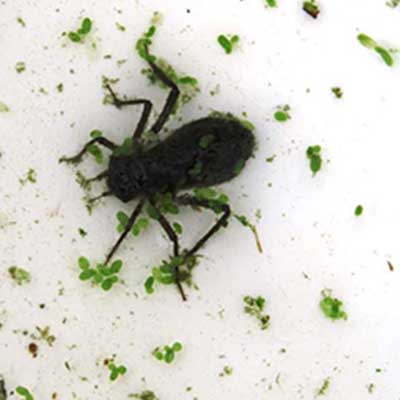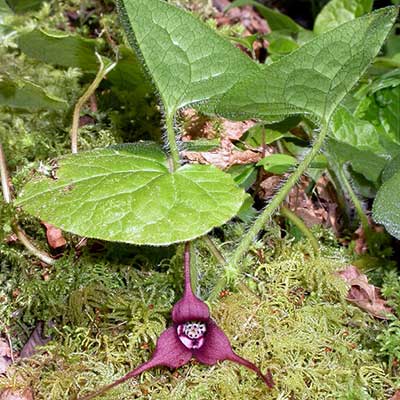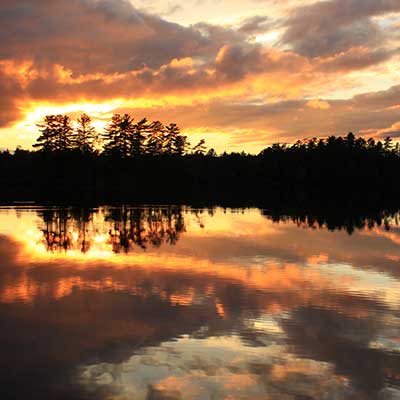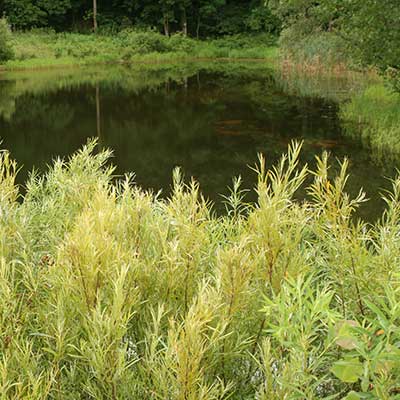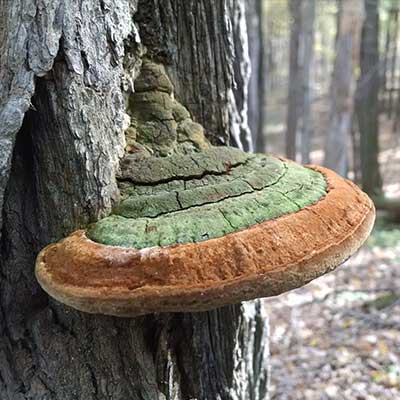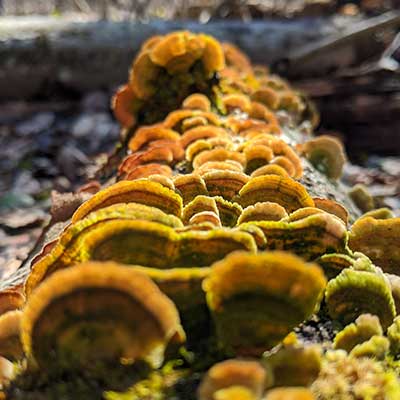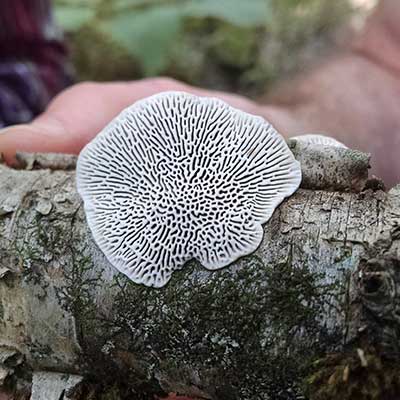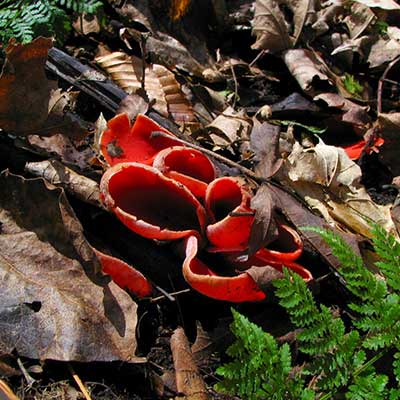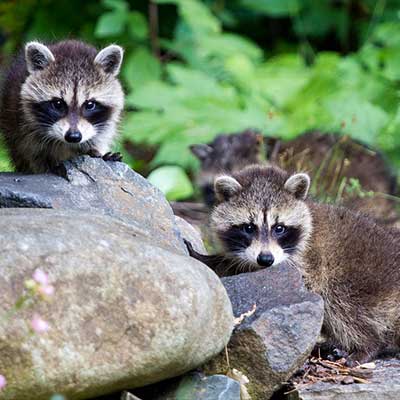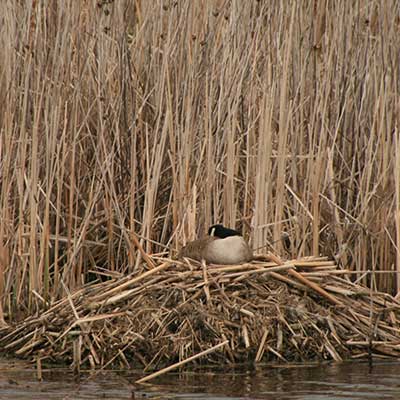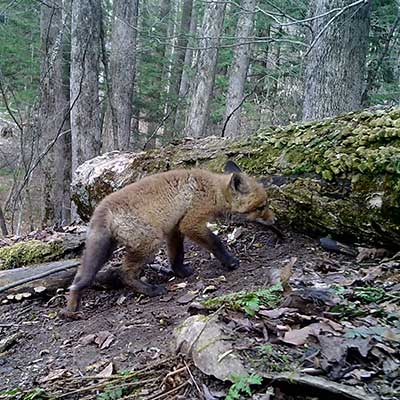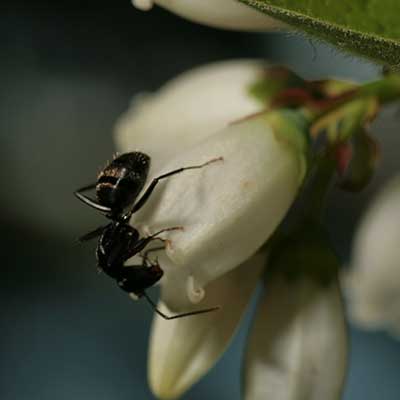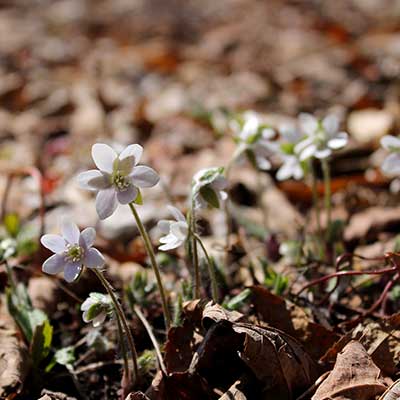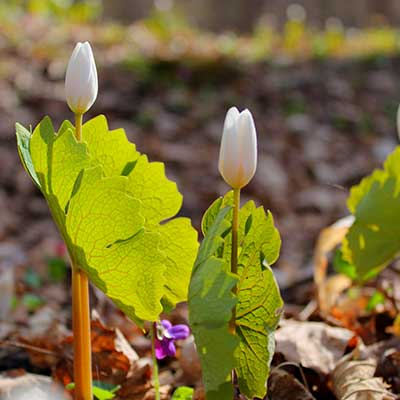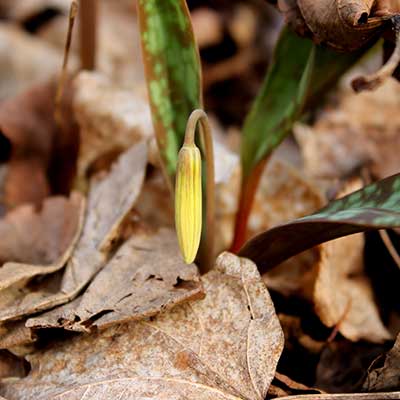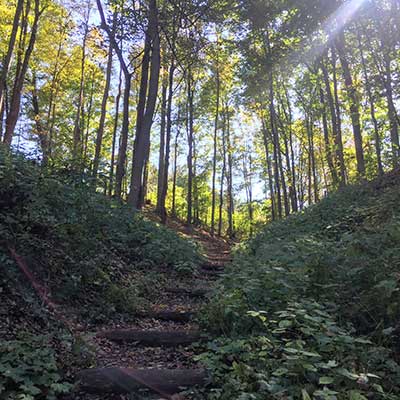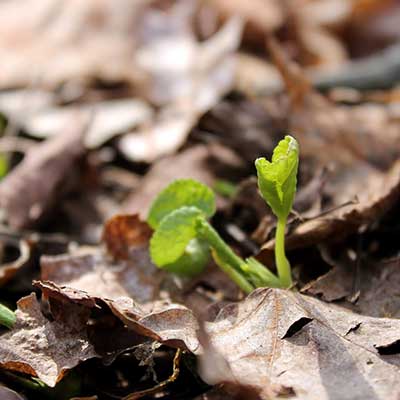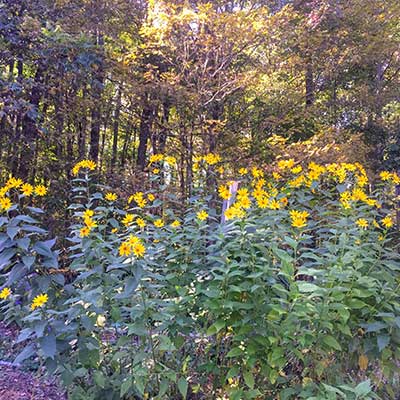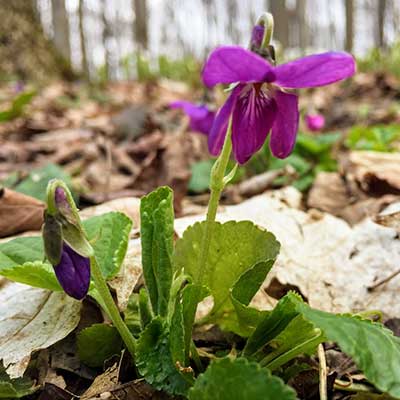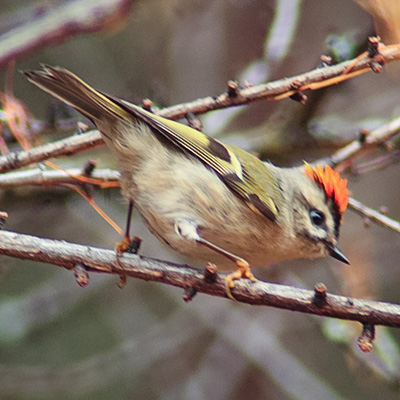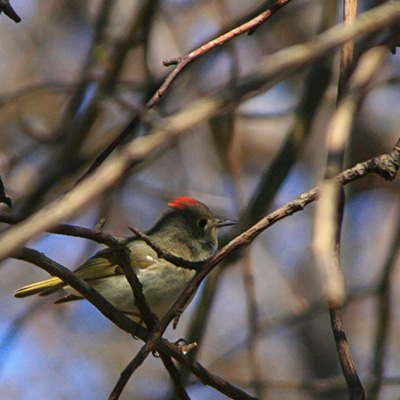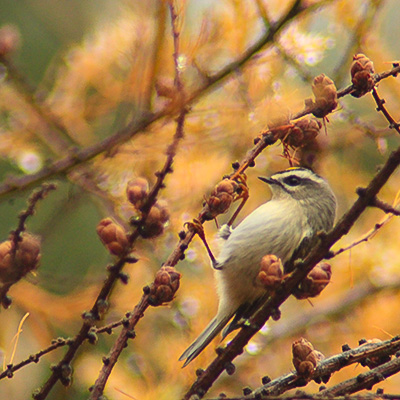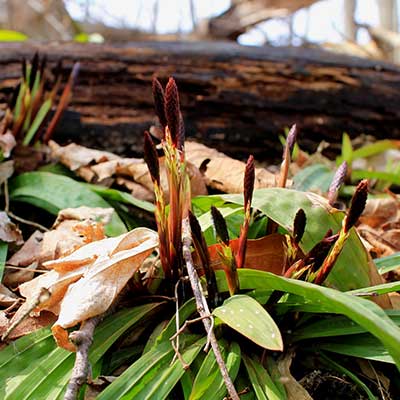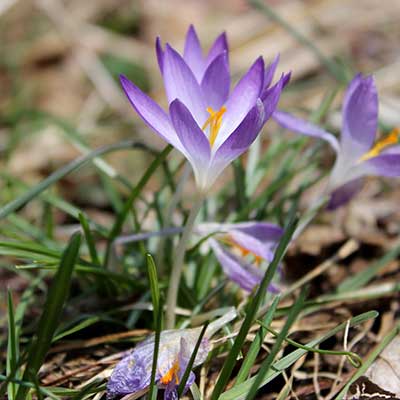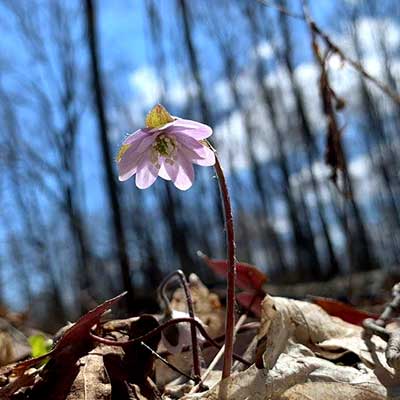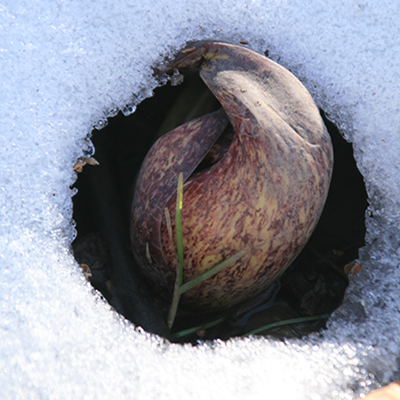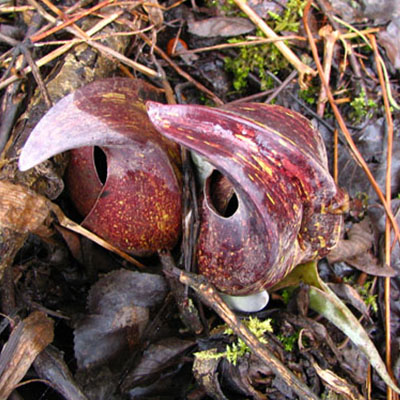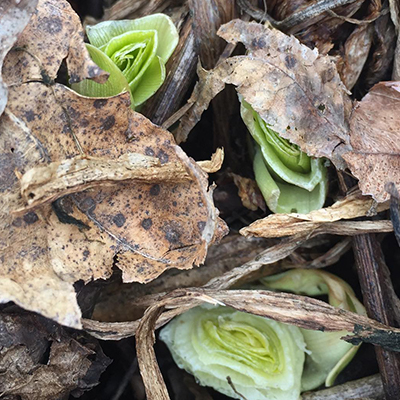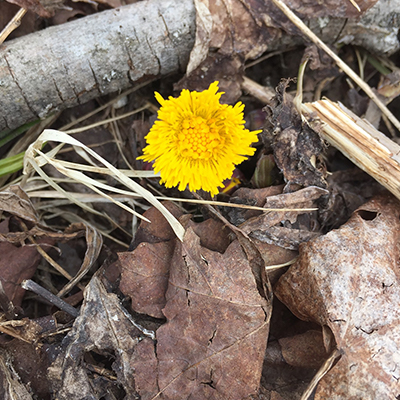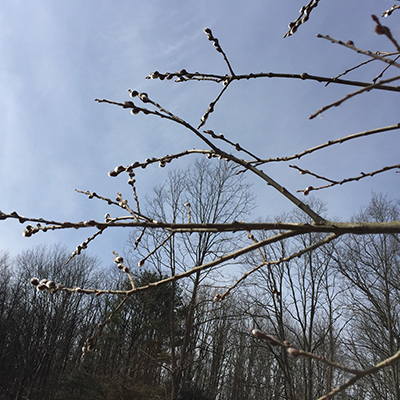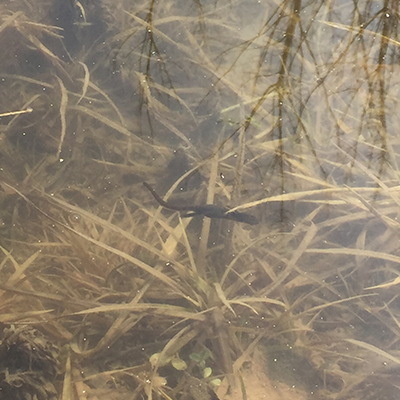We invite our members to enjoy a weekly blog written by our naturalists. Every blog will be uniquely different but always inspired by nature. We may share a memory from a recent hike at The Woods or teach you about an animal or plant that lives on the preserve. No matter the topic, we will be sharing with you our passion for nature and celebrating the connections we all have to the natural world. Each blog will be connected to a weekly set of activities and ideas to help you put nature in your hands, even if you’re at home!
Wisdom from the Young and the Wild
Week of July 18 – July 24, 2021

Summer is a time of new life bursting forth in nature and the woods echo with the sound of children having fun! It’s not just human children enjoying the warm weather, baby animals are also out and about. There are moments when I spot a young animal and while observing the way they behave or something the parent does, it reminds me of a moment with my own children. When we take the time to observe nature we can find so many similarities to our own lives and sometimes it can trigger a memory or lend us some wisdom.
I love catching sight of a new fawn, with its long, stilted legs, ears too large for its head, and white-spotted coat. I sometimes see them in the early morning or evenings, learning to walk and then run through the fields, their mothers close behind. During the day, deer mamas will leave their fawns hidden in fields or the forest while they go forage, just until the fawn is strong enough to keep up. Though she doesn’t go too far away, she does want to make sure she is far enough to lead any predators away, returning at night to feed and move her fawn to another safe space. When I see a doe with multiple fawns, I am reminded of the power of patience!
Another young animal you might see leaping through the fields are fox kits. I remember seeing a couple kits in the field near Baltimore Woods one summer. They were chasing each other and rolling around, reminding me of kids playing tag! You may even get to see them practicing their pouncing technique as they learn to hunt for their own food. Another summer there was a raccoon family nesting in a hollowed out tree on the Valley Trail. The babies were curious and eager to come out while the mother attempted to pull them back into the safety of their home. It was a familiar sight, wrangling young ones that don’t want to listen!
Though these sightings of fawns and kits can be rare, many of us have seen baby birds. Even in the height of summer birds are still busy raising their chicks, many having multiple broods within the warm seasons! It’s harder to spot nests now that the foliage has overtaken the trees, but sometimes you can hear the peeps or see a bird fly into a small shrub leading you in to take a peek. The parents work tirelessly to ensure their young are protected and fed, much like we do with our little ones!
Summer seems to be over in a blink of an eye. Take the time to notice the youth in nature whether human or animal, and enjoy the moments for they are gone much too quickly! Have you observed a baby animal out in nature? Share with us by emailing [email protected]. If you are concerned about a baby animal you can report it to your local rehabilitation office or by calling the NYSDEC.
A Child Who Plays in Nature Today…
Week of July 11 – July 17, 2021
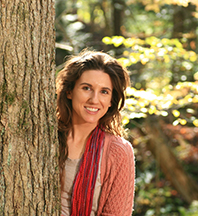
Through nature play children make personal and emotional connections to the outside environment. Recently I watched a child catch a frog for the first time. That child’s face lit up with happiness and it was a beautiful moment to witness. Though she may not remember that exact moment 20 years down the road (or maybe she will) that experience left her with a positive emotion and a positive experience in nature that she’ll carry with her for the rest of her life.
Here at Baltimore Woods we provide children opportunities for nature play. Last week was the first week of our Summer Camp and on a weekly basis children are playing outside and exploring all the wonders of their natural environment. The emotional benefits of nature play can allow a child to build self-confidence, develop an understanding of their own emotions and others’, and create an appreciation for the animals and plants found in the natural environment.
Nature play benefits the child, the family, and the community as a whole. Emotional connections to the outdoors can also lead to eventual stewardship. A child that plays in nature today may become a steward of our environment tomorrow.
When I look back on my childhood, I was fortunate enough to be exposed to opportunities to have experiences in nature that led to emotional connections to my natural surroundings. That’s something I feel inspired to try to provide for children everywhere. Did you have opportunities to experience playing in nature as a child? If you’d like, share your stories with us at [email protected].
Thinking Outside the Box
Week of July 4 – July 10, 2021

Many of us who love the outdoors are familiar with the multitude of benefits that nature provides. A sense of wonder for the world is something that brings us together, helps us make valuable
connections, and is one of the main reasons I became an educator here at Baltimore Woods. This inspired awe, for me, is rooted deeply in my childhood. Playing outside, climbing trees, flipping over rocks, and chasing fireflies were all parts of growing up that have instilled a deep respect for nature within me.
Many studies show that green spaces, unstructured play, and exploration are also beneficial for a child’s development (socially, cognitively, emotionally, and physically). A sense of wonder is important to instill at an early age, when a child is rapidly developing and learning. Children are the world’s best scientists and artists, with wild imaginations and endless creativity. A pile of sticks can transform itself into a pirate fort, a pile of rocks can become a spiraling sun, and red berries could make a beautiful dinner platter for a fairy banquet. Young people can generate many different uses for “regular” objects that for adults may simply go unnoticed.
This type of creativity, known as divergent thinking, is the ability to interpret questions and see answers in many different ways. One scientific study found that 98% of kindergarten-aged children measured at genius-level for divergent thinking. However, the researchers also found that genius-level scores dropped drastically as children aged — from 50% five years later, down to 12% as high schoolers… to less than 2% in adults!
Sir Ken Robinson, a famous educationist, used this study to champion the idea of fostering, rather than stifling, creativity within the traditional public school system. He argued that creativity is incredibly important for innovation, culture, and advancements in society. A sense of curiosity, wonder, and the motivation to learn are all important to nurture in children, and is equally important to continue to nurture into adulthood.
For the vast majority of adults, our imaginations (and therefore our innovation potential) have faded with time. But that does not mean it is lost beyond reach. If we can access our curiosity, schedule unstructured time to simply explore, and focus on rebuilding that childlike wonder for ourselves, we might all find more joy in learning, and the world may be a more creative place.
To learn more about divergent thinking and childhood imagination, check out these references: Youtube video: “Changing Education Paradigms” by Sir Ken Robison (animated by Cognitive Media) from his talk at The Royal Society for Arts, Manufactures, and Commerce
Powerful Pollinators
Week of June 27 – July 3, 2021
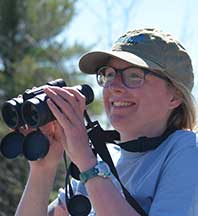
As summer is beginning, it’s an exciting time to keep an eye out for insect pollinators. Busy bees, butterflies, moths, beetles, ants, and more are all crucial helpers in the process of pollination, fertilizing plants and allowing them to create seeds. Many of the fruits and vegetables that you eat wouldn’t exist without our pollinator friends. As insects visit flowers to feed, pollen sticks to them and is then transferred to other flowers. For example, have you ever seen a fuzzy bumblebee covered in yellow dust? That’s pollen!
Bees also have long hairs on their legs that help to hold their pollen cargo in place. While some of this pollen is carried back to the hive for food, a little of it also falls onto other flowers. Next time you see a bee hard at work visiting flowers, try to spot the little yellow pollen “saddlebags” on its legs. From iridescent green to striped black and yellow, bees are a very diverse group of insects. In New York, there are over 400 species of them!
Beautiful butterflies are pollinators, too. Summer is a great time to look for them, and there are many different colorful species that can be found here in Central New York. Next time you see a butterfly or moth visiting a flower, notice the long tongue that it uses like a straw to sip nectar. While many moths are nocturnal (active at night), you can see some of them visiting flowers during the daytime, such as the White-lined Sphinx Moth pictured here. Hummingbird moths are also common visitors to gardens and meadows. They look and act a lot like hummingbirds, zipping through the air and feeding on flower nectar, hence their name.
Many other insects visit flowers to feed, too, such as beetles, flies, and ants. Next time you go for a summer walk, try taking a closer look at the flowers around you. Can you spot any insects on them? Some of these insect visitors might be tiny, while others are big and brightly colored. Take a moment to watch them feed, and you can even try to follow them from flower to flower. If you have a garden, you can help pollinators by planting native plants, and you can always stop by to explore the trails and gardens of Baltimore Woods. To learn more about pollinators and how you can help them, take a look at these resources:
https://www.nrcs.usda.gov/wps/portal/nrcs/detail/ny/plantsanimals/?cid=nrcs144p2_027389
Night Buggin’ Adventures
Week of June 20 – June 26, 2021

Summer has always been my favorite season. There is so much to see and explore! Every year as my children grow I have the amazing opportunity to experience the joys of summer through their eyes and there’s no better sensory adventure than exploring the world of bugs at night. We have been enjoying bonfires on the cooler nights and love listening to the crickets and katydids sing. It was a very exciting moment when we saw the first fireflies of the season! We’ve been seeing more of them lately and the sight of them flashing through the darkness never fails to bring excitement and memories of catching them when I was a child. We put them in mason jars for a few minutes to get a closer look (make sure there’s air holes on top!) and I was telling my kids about how fireflies communicate in different patterns of flashes, a chemically produced light from their abdomens like Morse code, which led to the discussion of whether that means they talk with their butts. Kids right?!
Fireflies aren’t the only cool bug you can see at night, though. A great way to attract bugs for a close up view is to hang a white sheet and shine a light on it, bam! It’s an instant bug magnet! If you have a field guide handy, you can try to identify the creatures that come to hang out on what we call the magic carpet, or take a picture, jot down a description and email it to us to help at [email protected]! I encourage you to tap into your inner child and explore the wonder of bugs at night! Happy night buggin!
Itching to Learn About Mosquitos
Week of June 13 – June 19, 2021

As I was having lunch by the pond yesterday, I felt a prickle on my arm. I looked down, and there was a mosquito having lunch with me…only my blood was the lunch! Irritated, I waved my pesky, uninvited guest away. But then I started to wonder about these little flying insects. Many of us hate mosquitoes because of their itchy bites, high-pitched buzzing, and infamous ability to transmit deadly disease. How much do we really know about the lives of these little creatures?
The common name mosquito is Spanish for “little fly”, which is an apt description since mosquitoes belong to the group Culicidae: a family of small flies with over 3,500 species. Like other true flies, mosquitoes have one pair of wings and one pair of halteres. Halteres are tiny club-shaped organs that help the mosquito to maintain balance during flight. Mosquito wings, unlike other flies, have tiny scales on them.
You may feel personally attacked when a mosquito bites you, but remember that with so many different species, mosquitoes also have many different hosts. Some species of mosquito consume the blood of amphibians, reptiles, birds, and other mammals such as dogs and horses. Did you know that only female mosquitoes consume blood? They do this with a long, specialized piercing-sucking proboscis. Male mosquitoes do not bite nor consume blood, and instead drink nectar and plant juices. Males are also differentiated from females by feathery antennae.
Unfortunately, in certain areas of the world, mosquitoes are notorious for their ability to transmit (vector) disease, such as the Zika virus and protozoans that cause malaria. In Central New York some mosquito species can transmit West Nile virus and eastern equine encephalitis. Although these diseases are rare, it is still important to prevent mosquito bites when possible. To avoid being bitten, there are steps you can take to make yourself less attractive to mosquitoes, such as wearing light-colored clothing, using insect repellent, wearing long-sleeves and long pants, moving quickly through warm, moist habitats when possible, and avoiding peak mosquito times (dawn and dusk).
Even though mosquitoes suck our blood and can transmit infectious diseases, remember that many other creatures (such as bats and dragonflies) eat mosquitoes and even depend on them to survive. While mosquito biocontrol is important, it is equally important to respect food webs and ecological processes. Also, let us remember that mosquitoes are living beings trying to survive like any other. The more we understand them, the better we can stay safe from transmitted diseases, the more easily we might coexist with them, and — perhaps — we might even foster inherent respect for these little flies.
The Spring Juggernaut
Week of June 6 – June 12, 2021
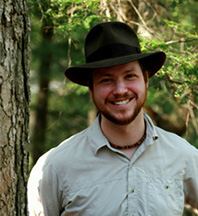
Of the 10 trails at Baltimore Woods, the Valley Trail has long been my favorite. This steep, lush trail descends into the heart of the preserve, providing an immersive sensory experience with stop-in-your-tracks views across the forest, ancient mossy maples, and two bridges over the clear brook.
It seems impossible for children to walk down this trail. They try, at first, but inevitably seem to build up a head of steam and end up running, laughing, deaf to the pleas of parents or camp counselors to slow down, and unable (or unwilling!) to stop themselves.
It occurs to me that spring is like this, a juggernaut of change that starts slowly and builds into a cheerful explosion of new life – flowers, new leaves, bird song, mushrooms, fiddleheads, and caterpillars. Until one day in June, I find myself standing in the deep green forest, stunned by the change, and wondering, “When did it become summer?”.
In the cacophony of our daily human lives, it is so easy to try to fight change or to get so distracted by responsibilities and demands whirling all around us that we miss the important changes and wonder what happened. We forget to slow down and pay attention to moments.
If you are feeling overwhelmed by the juggernaut of life, I invite you to the Valley Trail. Take a moment to marvel at the graceful maidenhair ferns. Stop at one of the bridges and watch the water striders. Listen to the music of the wood thrushes and veerys in the evening. Smell the rich forest. Sit on a hillside bench and watch the world slow down.
The Makings of a Good Trail
Week of May 30 – June 5, 2021

Many trails at Baltimore Woods feel like they’ve always existed. A log here or a bridge there, a path through the woods seems simple in its creation. As appealing as the thought is, it is far from the truth.
A good trail starts with a plan. John Weeks, the designer of many of the trails at Baltimore Woods, outlined a design philosophy that enhances the experience on a trail. First, nature center trails are best as loops that start and end at the same place. This reduces backtracking and makes every part of the visit feel new. Next, the trail must be the right length, not too long and not too short for the people who will want to use it. When laying out the trail, it should follow contours and have as gentle a slope as possible. It should pass interesting features along the way, ideally 12-18 every half mile. A well planned trail should not have long straight views where you can see an excessive amount of trail, and little turns should hide long stretches of trail to enhance a feeling of solitude. Finally, the trail should use vistas and elevation to add to the views from the trail whenever possible.
In addition to the experience on the trail, serious thought must be given to the physical location of the trail to ensure that it will stay stable and usable. Wet spots should be avoided, slopes need to be gentle enough to safely accommodate tread, and drainage has to be carefully considered. If the physical features are not accounted for, even the most beautiful trail will quickly become unusable.
Next time you are out in the woods look at the trail you are on and try to see the design reasons that put it there. See how many interesting spots you find, or consider how a little elevation enhances the views.
The Magnitude of Small Things
Week of May 23 – May 29, 2021

Over the past few weeks I have been dipping a net into Phillips Pond in search of creatures to show to 5th graders in the Syracuse City School District. Their virtual field trip to Baltimore Woods introduces them to the different ecosystems we have and the animals and plants that inhabit them. The pond ecosystem is my favorite part because I love catching the tiny creatures that live under the water. Though these creatures are small, they can be ferocious predators or important contributors to nutrient cycling. They also have incredible life cycles that transform their bodies from one form to another.
We have been asked a few times on these virtual field trips “How many animals live at Baltimore Woods?” This question is fun to explore with kids because I think we often forget about the life that lives beneath our feet. When you stand still and quiet at the edge of the pond, you could see 10 different species swim past you. The little creatures do not take up much space or resources, meaning there could be hundreds of each species living in the pond. Then think about all the tiny arthropods under leaf litter and logs in the forest or try to count the number of bees and butterflies hovering above flowers in the field. It is difficult to wrap my mind around the sheer number of creatures that inhabit the preserve, but that means there is so much for us to discover!
Little Lighthouses of Yellow
Week of May 16 – May 22, 2021

When you think of a dandelion, what comes to mind? After a day of rain and a new day of bright sunny skies I look for the vibrant yellow flowers of the dandelions to greet me on the brief walk to get in my car and start my day. On the drive to work I notice them sprinkled about in lawns, little lighthouses of yellow in a sea of green, and I can’t help but smile.
Providing both pollen and nectar, dandelions are an important first food source for bees and butterflies. As persistent little flowers, they can be mowed down and grow right back. This behavior gives them the title of “weed” for many, though they are still considered by botanists to be herbs.
The whole dandelion from root to flower is edible and has nutritional value providing a variety of vitamins and minerals. I myself enjoy dandelion root tea. From using their medicinal value, to being handed a small bouquet that a child collected, to admiring the beautiful vast meadow of yellow when passing by a farmer’s growing hay field, dandelions certainly have a special place in my heart. What about you? Is there any small aspect of nature that you admire at the start of your day? There’s so much beauty in the smallest of things.
A Surprising Moment with a Spiny Plant
Week of May 9 – May 15, 2021

Exploration and discovery are two of my favorite aspects of immersing myself in the natural world. While scouting on the new property that we are in the process of acquiring, I had the opportunity to experience that wonder.
Along the shores of Baltimore Brook south of our current property, I came across a thicket of strange thorny plants. Suddenly I was surrounded by a spiny forest of 10 foot tall shrubs and my mind was racing to figure out what I was seeing. Small flower buds nestled between the paired spines suddenly clicked in my mind and I knew the identity of this little grove: prickly ash.
Prickly ash is not an ash at all, but instead is the only member of the citrus family native to Onondaga county. Despite its intimidating spines, this plant is a real beauty. It also has the distinction of being the host plant for the caterpillars of the Giant Swallowtail, a large black butterfly with a bright yellow stripe across its wings. If you get lucky in late summer, you may see them flying over the meadows of Baltimore Woods after they have grown up in this prickly ash grove.
Finding the unexpected in nature reminds me why it is so important to be prepared for surprising discoveries. You never know what fascinating observation awaits around the next bend of trail or where that discovery will lead you. It may be a strange citrus, a giant butterfly, or beautiful reminder of spring. Share stories and pictures of your unexpected discoveries with us using [email protected]!
May Moments!
Week of May 2 – May 8, 2021

Rachel Carson once wrote, “In nature, nothing exists alone.”
I’ve found myself thinking about this quote often lately as I notice all the life bursting forth around me. Reveling in the beauty of the flowers, the excitement of seeing leaves sprouting from the trees and the animals busy collecting food as the bounty of spring has arrived. Everything is connected in some way within our natural world and we are a part of the intricate web of life.
We have been teaching students through our virtual Nature in the City programs about ecosystems. We are showing them examples of ecosystems all over the preserve; the pond, stream, field and forests. While they can’t be with us in person, we are still able to connect them to these places, showing them the food chains and life cycles that exist within these ecosystems and the importance of the living and non living components. We are challenging them to get outside, to notice everything around them and inspire stewardship.
This month I give you the same challenge as our students, to be more aware that we are each a part of nature and the ecological community that exists all around us. What special moments help you better connect to being a part of the natural world? Do you plant flowers and plants around your home? This supports the insect and herbivore community, and in turn they are fulfilling a key role in pollination and within their food webs. Are you keeping the greenspaces around you free of trash? A healthy ecosystem has benefits for all life. Taking moments to be present in all the beauty that surrounds us can have an impact on how we choose to live our lives, and what better time to start then May!
April Showers Bring…Morels!
Week of April 25 – May 1, 2021

Walking the trails of our preserve in spring is truly a special treat. Mother Earth has painted our forest soothing shades of green and the yellow, red, white, and purple colors of wild flowers emerging all along the hillsides of the valley are absolutely worth stopping for a moment to admire.
April showers bring a magical season of abundant growth and life to the forest that a hiker can easily enjoy. There is one thing that I love searching for more than those delightful colors that pop out to the human eye. The morel mushroom. A challenge to find to say the least and, most of the time, found when one is simply in the right place at the right time glancing down at the right spot on the ground (at least in my experience). The morel mushroom is a master of camouflage and effortlessly blends in with the brown colors of the leaf litter. Difficult to notice when everything seems to be so vibrantly green in the forest. Turning to science to aid in the search, morel mushrooms tend to grow on the edge of wooded areas and near oak, elm, ash, and aspen trees. The mushroom itself is just the fruiting body and there is a network of mycelia under the ground that produces this mushroom each year.
Next time you’re out here on the preserve admiring all the pretty green leaves and flowers, consider glancing along the surface of the leaf litter and you may be lucky enough to find a morel. In that moment of discovery enjoy the satisfaction of finding one of nature’s well hidden treasures and then leave it where it grows. Happy morel hunting!
April Showers Bring…Smells of Spring!
Week of April 18 – April 24, 2021

We all know April-it is rainy, cloudy, and muddy. Though the weather may not be ideal, it ushers an explosion of life as leaf buds pop, flowers bloom, and animals hurry to prepare for the arrival of babies. This new world means new opportunities to engage your senses and appreciate the changes occurring all around you. While I try to engage all my senses in nature during this time of year, the one I relish the most is my sense of smell.
On sunny days, the scent of blooming flowers perfumes the breeze. If I could leave my nose in a daffodil all day, I would. Soon enough we will smell fresh cut grass drifting through open windows. On perfect Spring days, I like to hang my clean sheets on the clothesline so they can soak up those scents I love so much. I can hardly wait to jump into bed and wrap myself in that fresh Spring aroma. After an April rain shower, the air smells dewy with petrichor, the scent of rich soil and wet rocks. Moss growing along tree roots takes on a vibrant green and raindrops balance precariously on flower petals. Of course, not every Spring smell is intoxicating. The pungent skunk cabbage flowers and deep layers of mud in wetlands release odors that may cause you to wrinkle your nose. One thing is for sure, this period of time brings with it unique scents that we only experience for a few months out of the year.
I encourage you to open a window or step outside, take a deep breath, and enjoy the many smells of Spring. Those with allergies may not share in the joys of pollen saturated air as they sniffle and sneeze their way through the season. Luckily, there is more than enough Springtime activity for your other senses to take in.
April Showers Bring…Thoughts of Gardening!
Week of April 11 – April 17, 2021

One of my favorite things about spring is watching plants and flowers slowly emerge from the ground. The rain from the month of April makes the ground moist, giving seeds the perfect amount of water to pop out of the dirt.
My dad and I are in charge of taking care of our home garden, so once flowers start to appear around the yard at the end of April, we know spring is officially here and it’s time to start planting! We have two large garden beds and a trellis in between them where we grow melons. Behind the beds we have fences where our tomatoes and peppers can grow high and tall. As for the garden beds, we can plant any type of vegetable we want. Last year we planted beets, broccoli, cauliflower, two types of lettuce, and carrots!
Once we plant the seeds, I’m always amazed how fast the sproutlings seem to burst out of the soil! Once the plants start to grow, my dad and I constantly check on the garden to see if the soil is moist enough, and if the plants are looking healthy and green.
If you don’t have a garden already, I encourage you to create one! Whether it be herbs, flowers, or a few vegetables, you will still feel the satisfaction of growing your own plants. The best part of gardening is that it will last throughout the whole summer! Starting up the seeds in May is only the beginning! So get outside and get started!
April Showers Bring…Mud!
Week of April 4 – April 10, 2021

Usually this sentence is finished with “May flowers” and while I am looking forward to our ephemeral spring flowers, I am also thoroughly enjoying all the gooey, glorious mud that our April showers have brought us. Now I am not usually one to revel in the sight of a mud pile but seeing anything through a child’s eyes is sure to change your viewpoint.
During a particularly messy day of our Science Adventures in Nature program, my group and I went on a hunt for mud and ended the day mixing dirt and water to make our very own mud concoctions. The giggles, shouts of joy, and muddy hands had me convinced, mud is great!
This gift from April showers also benefits the plants and animals. Mud loosens the soil so salamanders can slip and slide their way to the vernal pools and the worms begin to come out which creates a buffet for the robins!
Now when I see rain in the forecast I’m not disappointed about the lack of sun, I am excited for more muddy adventures, memories, and the perfect squelch sound that only mud can make. This month I encourage you to work past any fears of dirty shoes, pants, or hands and enjoy some child-like giddiness of our mud season.
A Better Spring
Week of March 28 – April 3, 2021

“Open up your eyes and see the brand new day, clear blue sky and brightly shining sun. Open up your ears and hear the breezes say, ‘Everything that’s cold and gray is gone.’”
This is one of my favorite lines from John Denver’s Seasons Suite. The opening of the Spring stanzas, it is full of the hope that comes with the changing season. I see signs of that hope all around The Woods: birds singing their spring songs, squirrels building nests, tree buds swelling in the sun, and the first blooms of spring wildflowers.
A year ago, it was different. Well, not really. The birds still arrived on time and sang their songs, the salamanders migrated to their vernal pools, the sun came out and leaves began to grow. But it felt different. Our world was full of uncertainty and fear. In the midst of the normalcy of nature’s spring, our spring was anything but.
This year, though…it feels good again. There is still fear and uncertainty, but it really feels like things are getting better. Spring is here, every day brings subtle changes, and a renewed feeling of hope. “The earth has been reborn and life goes on.”
New Connections
Week of March 21 – March 27, 2021
by Eliza Phillips, Naturalist
This week marks one year since Baltimore Woods Nature Center switched from in-person programming to virtual content. Our goal was to continue to connect you with nature through blogs, journal prompts, videos, and much more. This week last year was full of uncertainty-would things be back to normal soon or not? Looking back I had no idea how long we would be creating virtual content. Even though I missed interacting with our community in person, I am grateful for the new skills and experiences I gained over the past year. We overcame many obstacles, but those resulted in creative solutions that fostered our connection with all of you.
As we worked to keep you all connected to nature over social media and through the Woods Weekly Edition email on Sundays, I found myself connecting to nature in a new way. Whether it was through seeing the pond underwater for the first time or spending two weeks with the beavers, I have gained a greater appreciation for nature here on the preserve and all around Central New York. In the pursuit of keeping nature in your hands at home, I got to watch mergansers dance on Onondaga Lake, have a staring contest with a mink, and chase butterflies all over Montezuma. I noticed things I had never noticed before, like all of the bugs that live on a single milkweed plant, and found myself going to new places I had never been before. So as we look back this week, consider how you’ve connected to nature in new ways this year. Did you get to explore new places or were you able to connect through virtual resources? Share your favorite memory of connecting to nature this past year with us at [email protected]
Welcoming March
Week of March 14 – March 20, 2021
by Becky Wilson, Naturalist
As we near the Spring Equinox on March 20th it’s time to leave all the winter months of stagnant energy behind and spring forward into a new season of growth and renewal! What are you most looking forward to this spring?
I’m looking forward to longer days of sunshine! I get my family out to explore whenever the sun is out, soaking up the warmth and searching for signs of spring. It’s tradition for us to visit a stream or lake, the calm cleansing energy of water renewing our spirits. The warmer days we have had lately are inspiring me to open up my windows and literally dust away the cobwebs of winter. And on the first warm evening we always have a big bonfire in our yard, our favorite way to welcome back the light. My family has many rituals planned for this new season. It’s fun for my children, especially as they get older, to think of new ways we can celebrate!
Creating rituals to welcome in the seasons is a great way to connect to the nature around us and to prepare ourselves for the gifts that each season brings. What do you do to welcome spring? What new ideas can you think of to celebrate? Send us a note and share your thoughts with us at [email protected].
If you want to learn more about the spring equinox click here, https://www.almanac.com/content/first-day-spring-vernal-equinox
March Has Its Moments
Week of March 7 – March 13, 2021
by Melissa Kirby, Naturalist
Recently while hiking the preserve with my fellow staff members I heard the high pitched sound of the black-capped chickadee’s song that sounds like it’s saying “cheeeese burger, cheeeese burger” (listen for yourself in the link below, what do you think?). In the instant of hearing that sound I had a wonderful image come to mind of when I was a child sitting on the swingset outside my parents house where I would spend endless time listening to the chickadees and calling back to them. What a wonderful memory and all it took was hearing that sound to take me back. That’s what I love about March, it has its moments.
Sometimes it feels like an endless winter, weeks of shoveling snow (I’m quite tired of that, how about you?), no glimpses of sunshine, need for some natural vitamin D, and yet another snow storm preparing to grace us with its presence. Other days we have wide open blue skies, sun shining brilliantly, and you know it’s one of those days where sap from the maple trees are flowing, birds seem to be everywhere, and there’s nothing more freeing than enjoying a hike through the woods.
In March some days remind me of the harsh winter struggle the animals face for survival. Other days I’m reminded of the growth that struggle brings, the forest full of the hustle and bustle of those same animals chittering about like they’re singing in celebration for the spring to come. I can’t help but relate that to my own life; some days I feel the struggle, but the growth on the other end truly can be something to sing about. Thanks for reminding me of that, March. You have your moments.
Follow this link to hear the Black-Capped Chickadee Song
https://www.allaboutbirds.org/guide/Black-capped_Chickadee/sounds
Making the Most of March
Week of February 28 – March 6, 2021
by Lexi Grove, Naturalist
Let’s be honest, March is not most people’s favorite month because it is a transitional month. We never really know what the weather is going to be like and as the snow melts mud predominates the landscape. Despite the unpredictable nature of this month, there is much to appreciate about it. The days are longer, the sun shines through the clouds more often, and the spring equinox is coming up. Each day is a little different than the one before, which adds a level of spontaneity to our lives as we scramble outside to enjoy warmer days before storm clouds drive us inside again.
Whether you are spending time outside or inside, you can find ways to brighten this moody month and start thinking ahead. Before we know it, birds will return from their southern vacations and will be looking for places to build nests. If you have nest boxes, be sure to clean them out to help prevent the spread of parasites. This is also a good time to start planning your garden. Within the next few weeks, think about what you want to grow. If you prefer to grow plants from seeds, consider starting them inside to get a head start on the growing season. Broccoli, cauliflower, and root vegetables are cold-season crops that you can start growing a little earlier than most other fruits and vegetables.
As winter fades and gives way to spring, find ways to celebrate this transitional period and stay connected with nature. With the weather changing, you never know what you might see right outside your window or on your next hike.
Without Winter
Week of February 21 – February 27, 2021
by Kayla Thibault, Intern for Baltimore Woods
Winter is a challenging time for many of us because it is easy to sink into the cloudy and cold months of winter. One of the hardest things about winter is the lack of green leaves, colorful flowers, or lush grass. If I look outside on a cloudy day the predominant colors I see are various shades of gray. When you feel like the world outside has lost its luster, it may not motivate you to get outside and you quickly fall into a winter time rut.
Before I started studying biology, I could easily say that I knew nothing about plants. I certainly didn’t know what plants did in the winter. Once I learned about their adaptations and survival techniques, I began to see winter through a different, more positive, lens.
I learned that as the leaves die in the fall, they litter the ground around trees and plants. As the snow accumulates over them, decomposers get to work on returning their nutrients to the soil. These nutrients are essentially recycled back to trees and other plants to nourish their return in spring. Though we lose green plants in the winter, the process occurring under the snow will ensure the beautiful miracle of life during spring. This is what makes winter so magnificent!
Remember this whenever the cold of winter blocks your view of the sunshine. Remind yourself of the necessity of winter and what the next season will bring. As soon as you do that, the sun will shine brighter than it ever has before.
Winter’s Little Treasures
Week of February 14 – February 20, 2021
by Becky Wilson, Naturalist
The sun has been released from its cloudy captivity here and there lately and it is a welcome respite from the more recent overcast and downright dreary days that accompany the winter months. These moments of sunshine are an instant uplift to our spirits and make everything around shine vibrantly. On one such day, I decided to take advantage of the sunshine. I went for a hike and expanded my senses, taking in all that was around me. I was in awe of all the things I observed both big and small!
I reveled in the beauty of a Northern Cardinal, the male’s rich red plumage, reminiscent of rubies, singing “Cheer, Cheer, Cheer” and making me feel quite cheerful indeed. The deep green of the spruce trees, their oblong needles like frozen fingers pointing out that, unlike the deciduous trees, they are forever green and look quite beautiful with a dusting of snow. I went off trail to observe up close, the buds on the end of a branch, those perfect little sage bundles, sleeping soundly, dreaming of spring. The Staghorn Sumac was still holding stubbornly to its red fruiting bodies even covered in a layer of snow and ice, reminding me of summer days long past and a promise of more to come. I saw lichen clinging to the trees in all manner of pastel colors with rough to fuzzy textures, like the bark was magically bedazzled for a winter ball by the wee folk, only eyes looking closely are fortunate to notice.
These are little treasures we may miss when the sun is not shining or are just overlooked in the general busy day to day of life. A plethora of sensory wonders are present even when the whites and shades of brown can dominate our vision during the long winter months. Those are the treasures that can provide a moment of awe and inspire a smile. The snow holds beauty as well especially when it sparkles in the sunlight. The plants and animals provide a subtle splash of color that seems to be enhanced during this monotone season. Take notice of these visual underdogs, the winter weeds, the dulled but still beautiful bird feathers, and anything else that catches your eye when you take a moment to observe and appreciate all the beauty winter has to offer.
Wonderful Winter Weather
Week of February 7 – February 13, 2021
by Eliza Phillips, Naturalist
Living in between two large finger lakes means that I have not had as much snow as the rest of Central New York this winter – until this past week when we got two feet of snow overnight, much like the rest of the Northeast. I, for one, am very happy about this! All of this snow all at once has made me appreciate winter weather so much more.
From sunny days in the 40s to overcast days with lake effect snow, the weather of winter time is ever changing. Winter precipitation in our region includes rain, freezing rain, sleet, snow, and graupel (commonly known as hail). While winter precipitation can be cold and often unwelcome, it can also be beautiful! Freezing rain can coat everything in a layer of shimmery ice. Sleet leaves small ice pellets all over the place. Snowflakes, perhaps the prettiest of precipitation, are six-sided works of art. Lastly, graupel occurs when frozen water droplets collect and freeze on snowflakes and make them look puffier.
Each water drop starts out in the clouds and is transformed by the air temperature and other factors as it falls to the earth. The path it takes, and if and when it freezes, determines what type of precipitation it will be. All together winter precipitation and weather shapes the landscape into a magical winter wonderland. So next time it snows, rains, graupels, or anything else, try to think about the science behind the winter weather.
Science in the Snow
Week of January 31 – February 6, 2021
by Eliza Phillips, Naturalist
Winter is full of science, from the creation of the snowflakes that frost the world to following the tracks of creatures that come out when we aren’t looking. There is science in the ways trees survive the freezing temperatures and in how a frog can survive being frozen solid for months at a time. From the chemistry of using rock salt to make icy roads safe to the feet of snow on the ground acting like a blanket for plants by keeping them warm on bitter cold nights, science is all around us in the winter time even if we can’t always see it.
Take wood frogs and spring peepers for example. Unlike other amphibians or animals who might burrow underground in winter, these frog species aren’t good diggers, so they hibernate above ground in the leaf litter and crevices of trees. These places leave their bodies susceptible to extremely cold temperatures and ice crystals can actually form inside the frog! Their heart and other vital organs can freeze solid and they stop breathing. In fact, they appear to be totally dead. Fortunately, they don’t actually die from the freezing because they have high concentrations of glucose in their vital organs which acts like antifreeze. This protects their organs, and once the weather warms up and they thaw out, the frogs will come back to life! If you would like to learn more about this check out this article by the National Parks Service.
What types of winter science have you noticed? Next time you are outside, stop for a moment and think about some of the science behind this cold season. And if you have any questions about the science of winter, feel free to email us at [email protected].
The Outside World
Week of January 24 – January 31, 2021
by Lexi Grove, Naturalist
On a dreadfully cold afternoon, I sat by the window with a mug of tea. Snow gently fell from the sky, making it look as if I was in a snowglobe. As it gathered on the pane I looked closely for intricate snowflakes. I only had a second before they melted. I turned my attention to the street below. Only one car passed by while I watched. Even the animals were cooped up in their homes. I witnessed one brave squirrel venture out, but it didn’t take long for it to return to its nest high up in a maple tree. The tiny reddish tree buds added a splash of color to the whites and grays of the winter landscape.
As the snow accumulated, I noticed how it sat on branches and rooftops. Pillowy piles that would look magical in sunlight. Somewhere a crow cawed and it conjured a memory of walking in the woods. I imagined the trees towering above me, snow crunching underfoot, and the sound of a woodpecker pecking at a dead tree. I could almost smell the crisp forest air. I opened my eyes and smiled at the memory as I watched a breeze stir the snowflakes into a flurry.
Though there wasn’t much activity while I was sitting by the window, I felt a sense of calm drape over me like a comforting blanket. The quiet world outside brought quiet into my mind as I sat, mesmerized by the falling snow. Earlier in the day I had wished it was warmer so I could enjoy the outdoors, but I left the window feeling refreshed, almost as if I had been outside. I finished with work a little while later still feeling relaxed from my meditative moment. Even from a window, nature brings peace and mindfulness.
Creepy Good Housemates
Week of January 17 – January 23, 2021

Mi casa es su casa. In the case of insects and spiders this saying couldn’t be more true! Your home is also the home of around 100 different species of insects, spiders, and mites – collectively known as “arthropods”. Nearly all of them are harmless to humans, and some, like the most common spiders, are pretty decent roommates.
Pholcid spiders, also known as cellar spiders or daddy-long-legs, are the big spindly ones that hang out in basements, corners, and ceilings. Cobweb and the American house spiders are much smaller and can often be found around windows. These spiders have been living with humans for 20,000 years, are uniquely adapted to live indoors, and pay their rent in predation.
House spiders are the apex predators in what can be a surprisingly complex food web that includes ants, wasps, beetles, aphids, crickets, stink bugs, flies, silverfish, book lice, mites, fungus, mold, and bacteria.
Spiders help control the more “pest-like” species. The next time you find a spiderweb, maybe take a moment to check out what that spider has been eating, and maybe thank her for the help. Take comfort in knowing that humans are too big for a spider to eat, and, unlike most pets and housemates, spiders don’t want anything from you but to be left alone.
For more on your arthropod housemates, check out this video: https://youtu.be/xVVGIBf-twI
And this article: https://www.treehugger.com/facts-about-misunderstood-house-spider-4868827
Forget Your To-Do List
Week of January 10 – January 16, 2021

It is well documented that getting outside and enjoying nature has many benefits for your health and well-being. From lowered heart rate and blood pressure to increased cognitive functioning, getting outside for any amount of time has positive effects on our bodies and minds. For me, while the physical benefits are always welcomed, I truly cherish the mental and emotional benefits that mother nature provides.
In this crazy world where it is all too easy to get sucked into our phones and computers, I have found an increased appreciation for nature’s ability to make me clear my mind. Getting lost in the small details of her masterpieces has helped me to stay grounded in this currently “virtual” world. Whether it was taking the time to be awed by a butterfly emerging from its chrysalis or spending just a moment appreciating the intricacies of a snowflake as I brush off my car, nature provides necessary chances for me to forget my to-do lists. Even if it is for just a moment.
So as this new year creeps along, and new stressors pop up in our lives, remember nature always provides us with the chance to free our minds from our busy schedules. Even if it is just for a moment. Share a moment in which nature allowed you to forget your to-do list with us at [email protected]
It’s In Our Nature
Week of January 3 – January 9, 2021

Happy New Year! The new year is here and along with celebrating, some of us welcome positive intentions and new opportunities into our life. Out here on the preserve there certainly has been a shift in the environment with the passing of the winter solstice. The days are getting longer once again and this process will gradually trigger the natural growth and abundance of life in the spring to come.
Humans have always had some connection to nature and an instinct to celebrate what’s happening in their natural surroundings. Many holidays and traditions that we know today like New Years have stemmed from past traditions. For some ancient civilizations the new year was recognized around a significant agricultural or astronomical event – natural events that were important for survival. In ancient Mesopotamia for example the people celebrated a 12 day New Year festival around the time of the spring equinox, when daylight and night are the same length. The equinox signified a time to harvest barley and the people gathered for daily celebrations.
Though we’re not all farming anymore, there’s still value in appreciating and celebrating what nature provides us. In one of our Nature in the City lessons we teach kindergarteners about the 5 things all living creatures need to survive: food, water, air, shelter, and space. Even today things that we need to survive come from or have been derived from materials that exist in nature. Now that’s something to celebrate!
As you look to set positive intentions for your health and wellbeing in this upcoming year, consider setting the intention to get outside and connect to your natural surroundings or continue to do so. It can help you to renew and restore the body and mind, but it can also remind us where the root of our human civilizations stem from. Enjoy connecting with your natural surroundings this year; it’s in our nature to do so!
Thank You Baltimore Woods
Week of December 27, 2020 – January 2, 2021

As I reflect on this last year, I wade through all the events, thoughts, and emotions, to find a few pretty incredible chapters in this story that stand out. Jumping back to the beginning of the year, I was working in Cortland with an all outdoor day program for children. In January I was in my 5th month of spending 24 hours a week outdoors, guiding children through play and exploration in the woods. When the world turned upside down in March, like with everything else, the outdoor program transitioned to a virtual program. It’s interesting what you can learn about yourself during a pandemic. Near the end of May I was very close to giving up on my passion for guiding children outdoors.
Then, Baltimore Woods Summer Camp happened. I once again had the pleasure of being a counselor and though some things were quite different, seeing children having fun outside was a weekly gift. It was a healing and renewing experience.
Here’s the best way I can describe what it’s like for me when I’m guiding children to explore outside. My entire being switches into functioning in a way that feels like everything I do is coming from within me. The way my body holds itself feels natural, my senses are honed in to my surroundings, and I have an internal peace and joy that resonates all day, even on the bad days.
Thank you Baltimore Woods for Summer Camp. As I transitioned into the fall as an Educator here once again, the inspiration from camp helped me create more opportunities to connect our community to nature. This year I counted every frog caught, log crossed, butterfly watched, fort built, and so much more as a precious moment for a child that I keep close to my heart.
How has Baltimore Woods impacted you this year? If you’d like to share, send us an email at [email protected]. We’d love to hear a part of your story!
Through Darkness, Light
Week of December 20 – December 26

On December 21st at 5:02am EST our days will begin to brighten. That is not a random hope, simply a scientific fact based on the physics of spinning things in space, like our Earth. It is the hour of the winter solstice, the point at which the north pole begins to tilt back toward the sun. It marks the shortest day of the year, the beginning of winter. The next day will be a tiny bit longer. For time untold, the solstice has held the promise of hope: through darkness, light.
It has certainly been a long dark year. Throughout all of it we have looked to nature for inspiration, solace, and even hope. I have been overwhelmed by my own interactions with nature this year: the spring migrations of salamanders and treefrogs, watching a pair of Cooper’s hawks raise a family right outside of the Interpretive Center, the brilliant autumn leaves, and the arrival of winter ducks by the thousands. Nature never gives up, even in the darkest days.
The arrival of snow has revealed just how much life is happening every day in the forest. A short walk from the Interpretive Center reveals the rush of nighttime activity with tracks of rabbits, squirrels, fox, deer, mice, shrews, and voles. Snow drifting down from the trees reveals a chickadee busily finding food, pursuing life in the first light of dawn.
How has nature given you hope this year? What evidence of life can you find in your own yard or local park? Send us some photos at [email protected] – we would love to see how you are continuing to get outside and connect with nature this winter. If a little chickadee, weighing as much as a few pennies, can stay hopeful on a cold winter day, so can we.
Nature and Technology
Week of December 13 – December 19

Many aspects of life have been impacted and altered this year. As a naturalist who had solely led programs and taught lessons in person prior to 2020, I have felt the effects of this tumultuous year. In-person programs were replaced by videos and livestreams, and I faced a new challenge of trying to strike a balance between the use of technology and our connection to nature. Some believe these two things are mutually exclusive, but one thing that has really stood out to me is that technology and nature can coexist in a healthy and beneficial way. Videos can be used to teach natural science lessons when gathering in-person is unsafe. Livestreams with a naturalist and prompts for independent exploration can create connections with nearby nature that may have been overlooked before.
This summer I led a group of campers via Zoom to Phillip’s Pond during our virtual camp, Outdoor Adventures. Ahead of time I built a boat out of natural materials and together we predicted if the boat would float or sink once placed in the pond. I heard cheers through my phone when the boat did indeed float! I left the group with directions to make their own boat and visit a body of water near them to see if their boat would float or sink. Although we were together virtually, I felt as though the kids were connected to the pond and the preserve through the activity we were all doing.
Even though the way we interact with our community has changed, our core mission never has – to cultivate appreciation for and personal connections to nature through environmental education, recreation, play, and research. Together or apart, virtual or in-person, we continue to do the fulfilling work of putting nature in your hands.
Winter Cues
Week of December 6 – December 12

Some days when I hike the preserve it seems like winter is approaching, especially during those first snow falls, and other days it’s pleasantly warm and the landscape is brimming with mud and rain. So maybe the weather isn’t quite advertising winter yet. Some of those days I can feel the coolness in the air; the pleasantness as I take a deep breath in and feel that energizing crisp air bring clarity to my mind. That’s one of my favorite things about the approaching winter.
For me, there are a couple personal cues right now telling me winter is on its way. I can’t help but notice how many layers I now put on as I’m hiking or leading a program outside. It’s time to wear hats, gloves, fleece-lined pants, and waterproof jackets. Though it takes me a little longer to put on all my gear before leaving the house in the morning, it is well worth it to be able to enjoy being outside. Just like mammals with their thicker fur, I have my necessary clothing to be comfortable outdoors during these colder months.
I’ve also created a long list of weekend winter projects to work on during these shorter, but soon to be longer, days. My candle making, herbal tea concocting, leather working, and creative writing passions will once again consume my time as I draw more inward this winter. How about you? Any projects or special pastimes to enjoy?
Winter provides an opportunity to take more time for you; to reflect and enjoy. If you find you’re seeking a little clarity of mind or a fresh perspective, put on your warm winter gear and go for a walk. Take a deep breath of that welcoming cool air and cherish the wonder the winter season has to offer!
Winter is on its Way
Week of November 29 – December 5

Winter is my favorite season, so as November draws to a close and we see our first snows I am overjoyed. For many the first signs of winter are an unwelcome precursor to darkness and gloom. However, for me, as I rest at the base of a tree the first snowy gray skies are a promise of hope and the beauty to come. The brightly colored leaves that have faded to brown will soon be covered in a soft shimmering blanket of snow.
I love winter’s crisp bitter cold, it wakes up the senses. On a snowy morning sounds are muted and you can hear the snow itself falling from the sky. As the flakes hit the ground a sound like millions of popping champagne bubbles rings out. A sound that suggests nature herself is celebrating the season. As the snow subsides the celebratory songs continue as chickadees and cardinals sing out in greeting.
The long nights may seem imposing at first, but I see them as a way to better view the stars. There are not many sights more divine than the constellations on a rare clear and crisp night. One where your breath freezes in the air, the snow crunches under foot, and the moonlight shimmers on the snow covered path ahead. Nights like these remind me of a song that was taught to me as a kid at an Adirondack summer camp “the winters are cold and the wind it gets wicked. 20 below, that ain’t no big deal. But there’s magic at midnight, just go walkin’ in the moonlight. You’ll see diamonds in the snow, these treasures are real.”
So as I watch a dusting of snow fall I am not excited for gifts of the holiday season to come, but rather for crunchy moonlit walks, a quieted world, shimmering snowbanks, and eventually the return of the sun as we pass the winter solstice. So each time you step outside this winter, take a second to stop and appreciate a treasure of the season.
Small Gifts of Nature
Week of November 22 – November 28

Growing up on an island in the middle of the Niagara River, I was never far from nature. Whether it was the forest in my backyard, the state park down the road, or the countless green spaces, I always felt an appreciation for the environment around me. I’ve been living in the city of Syracuse for the last four years now, as I finish up my college degree. Living in the city is so different from what I am used to. My house is surrounded by pavement and I don’t see turkeys or rabbits trotting through my yard. I used to associate my home in Syracuse as disconnected from nature. When I began to open my mind and take a closer look at my surroundings, however, I found that nature’s gifts are plentiful and alive in the city.
As I write this blog post I am looking out from my front window. I see the beautiful zelkova and katsura trees that line my street. My eye is drawn to playful squirrels chasing each other down electrical lines. Although it doesn’t seem like much compared to the yard of my childhood home, my house has a grassy patch in the back that is perfect for laying and watching the clouds drift by. When I first moved to Syracuse, I was under the impression that I had to drive miles to reach a body of water or forest to explore. I have since discovered that a ten minute walk from my house brings me to a forest park full of munching deer and a pond full of paddling ducks and fish. A five minute walk brings me to a hill where I can watch sunsets that rival any I’ve seen.
No matter where you live, I encourage you to step outside this weekend and appreciate the environment that surrounds your home. As we approach Thanksgiving, it is important to give thanks for the small gifts that nature brings us every day, everywhere.
The Art in Change
Week of November 15 – November 21

In the morning light, tiny frost crystals shimmer and sparkle. Dry leaves crackle and crunch underfoot. Between the spindly barren tree branches, flashes of bright feathers and stubborn leaves poke through. November is a beautiful month. It is rather moody, struggling to decide if it should cling to fall or embrace winter. This rollercoaster of temperature and weather certainly makes for an entertaining transition.
Some may struggle to find the positives in such an indecisive month, but November offers us a chance to find artistic beauty in the weekly or sometimes daily fluctuations. Warm November days coax the birds out from their shelters, encourage the colorful fungi to fruit along a fallen log, or entice a salamander from its hiding place. Cold November days are not exempt from this beauty. Gentle snowflakes make you feel as though you are in a snow globe, the colorful fungi remain steadfast on their logs, and shades of green still greet you from the conifer trees.
When you are motivated to do so, you can find art anywhere in nature, no matter the time of year. Take time this month to embrace the day to day changes and appreciate the beauty that blossoms from it. Let it inspire you to create beauty yourself through poetry, painting, nature journaling, or photography. Allow yourself to try and you may find you can create something you never thought you could.
Nature As Your Acclimation Guide
Week of November 8 – November 14

In the days leading up to writing this blog I’ve enjoyed watching the squirrels in the backyard of the Interpretive Center here at The Woods collecting the black walnuts on the ground. They carry them in their mouths, the walnuts looking like round green tennis balls filling the whole opening of their mouths and the squirrels carefully scamper off to store them away.
I’ve gazed at the natural environment around me off the back porch of the Interpretive Center quite a bit and I’ve noticed how many animals have been busy going through a transition. One of my colleagues recently said that we all need to learn to appreciate the month of November more. As I watch what’s going on outside the back door I think I have to agree. Nature is leading by example and showing us how to follow suit and transition like every other living thing.
Many animals are collecting and storing food to eat during the long winter months, much like the way people can food, dry herbs, or hunt, and stock up their cupboards and freezers for the long winter ahead. Birds and insects have migrated to another part of the world to winter in a nice warm place. Do you know anyone that goes somewhere warm for the winter? Other animals are burrowing into the mud and dirt to quietly rest as they wait out the winter months in anticipation of that warm spring rain letting them know it’s time to stir. In your own body do you notice an urge to be less active and have more quiet time?
Transitions can be uncomfortable, but I challenge you to recognize some beauty in it. Get up in the morning and take some quiet time for you to sit and be. Find a hobby or an activity that you look forward to doing. Take advantage of the cooler air outside and take a deep breath. Look to nature and follow suit.
Meditate to Acclimate
Week of November 1 – November 7

Happy 1st Day of November! Here is a riddle for you.
What is free but priceless,
You cannot own it, but you can use it,
You cannot keep it, but you can spend it,
Once you have lost it, you can never get it back.
Do you know the answer? Yes, it is time! This particular day comes with a time change that can either disrupt or benefit us depending on how we choose to use it. Hello daylight savings time! We will be turning our clocks back an hour which feels like we’re gaining an hour of time right? There are many ways we can use this to our advantage!
When the light begins to fade in the late afternoon and we wake up to a still dark morning, it can sometimes bring on a sense of dread. It’s tough to adjust to the time change, especially for kids. But there are some big positives, too! It’s an opportunity to use that “extra” hour as time to help your body acclimate more naturally to this change. You could snooze for an extra hour or choose to throw back the covers and dedicate this hour to meditation and movement. Let’s meditate to acclimate right now!
Try taking 5-10 minutes of this time to just sit quietly in the morning or the evening. Stretching your body in ways that feel best for you. You can put some peaceful music on if your mind decides it wants to be busy and just focus on your breathing, in and out. Chase away the darkness by becoming in tune with your body and mind.
The decreasing amount of daylight is a cue for the animals to begin their process of migration, hibernation or acclimation. Some people migrate to warmer locales this time of year, and hibernation sounds wonderful but unfortunately not feasible, so the only logical option for most of us is to adjust as best as we can.
On Saturday, November 7th, you can join us for a live streamed meditation experience and learn some easy tricks to implement this practice into your life and take advantage of this “extra” time this season!
The Spookiest Time of Year
Week of October 25 – October 31

As Halloween night approaches, I begin noticing things that make the fall so perfect for a spooky celebration. On an overcast, chilly day I traversed the Overlook Trail at Baltimore Woods. The leaves rustled on the trees as the wind tried to carry them away. I turned suddenly to the sound of dry crackly leaves crunching underfoot. Who is there? Just another squirrel scampering around looking for nuts and seeds to stash away for the winter.
As I traveled along the trail, I came upon the leftovers from a long forgotten meal. A strong gust of wind sent a chill down my back. Lost in thought, wondering about the bones, I came upon the overlook and sat for a moment. The yellows, oranges, and reds are beginning to fade and fall, leaving the branches bare and gray. I took a deep breath and smelled the unique smell that autumn has. Decomposition has a lovely scent, doesn’t it? I continued on the trail, making my way toward the gravel pit. For a moment, the forest felt magical instead of spooky as individual leaves floated down to join the others. I stopped short at a fallen log and inspected it for fungus. Reaching up from the mud next to it, I spotted dead man’s fingers. The slender, blackened fruiting bodies of this fungus surely pass for zombie-like fingers popping out of the ground.
What kinds of spooky or weird things have you experienced around Halloween? Perhaps you were startled by an owl’s hoot or got creeped out by the glowing eyes of an animal in the night. Despite the spook-factor this time of year brings to the outdoors, take the opportunity to enjoy the unique feelings and finds we don’t experience in any other season.
Water’s Colors
Week of October 18 – October 24

Descending down into the valley at Baltimore Woods, it’s apparent to see the autumn season has painted the forest with a wide palette of colors. Arriving at a section of the stream, I take a moment to examine the water. I notice the visible vibration of the water as it flows down the stream, watching ripples and concentric circles, and the water dancing over rocks. I see the images of trees hanging over the stream bed, rocks, and sediment under the surface of the water. Now this is something that intrigues my curiosity. What is the color of this water?
If you dive into the research of that question you’ll likely find yourself down a rabbit hole of organic chemistry and light physics. Many scientists have come to the consensus that water is blue, however in some cases we can’t see it, sometimes it’s only slightly blue, and other times it’s a very dark blue. So I suppose if you used a blue crayon to draw the water as a kid you were right! The color of water is determined by examining the vibration of water molecules. Water absorbs visible light from the sun in the spectrum that includes red, orange, yellow, and green. Blue light is not absorbed but is scattered, which produces the blue color we sometimes see in water.
When looking in the stream there aren’t enough water molecules scattering blue light so the stream appears clear. Looking at a larger body of water with more water molecules like an ocean, the scattering of blue light occurs and we can see that blue water color. If we’re standing too close we may not be able to see the blue color, and if the water has different sediment in it like clay or lime, this changes the color as well.
So what is the color of water? What do you think? Go outside and observe a body of water to see what you find! Keep enjoying those colors in nature!
Seeing Nature Through Magic Lenses
Week of October 11 – October 17

I was out admiring the beautiful colors of the fall leaves with my two children the other day and we came upon a tree that was the most magnificent red we had ever seen. I watched as they circled the small maple absolutely enthralled in the magic of what they were seeing. They asked me what happened to the tree and though I could have dropped all kinds of scientific knowledge on them I simply said “The fairies have been very busy decorating the forest, they must have gotten tired of all the green.” And with that we spent the next hour or so searching for other trees the fairies had “decorated”.
This is not to say that it isn’t important to teach our kids the why of things that happen in nature but why not add in a magical twist? My older son knows the reason that leaves change color, but he also has an imagination that rivals mine and, in that moment, chose to see the world through magic lenses and I am happy to encourage that. Our imaginations are a powerful tool no matter your age.
I encourage you to experience the world in this way. Autumn is the best time to put on those magic lenses and enjoy the beauty of the season with all your senses. The variation in color of the leaves is awe inspiring. The dozens of shades of red and orange that are produced feels entirely the work of some otherworldly being. I can envision a small fellow dancing upon the leaves, where his feet touch color splashed forth until the forest is a rainbow of vibrancy. What is your imagination creating in your mind?
The feel of the cool breeze, the crisp scent of the air, the music of leaves rustling or crunching underfoot, the songs of the birds mingling with busy chatter of squirrels; these are all magical experiences that the autumn weather brings. When was the last time you saw magic in nature? Put those magic lenses on, get out for a walk and see nature in all its magical glory.
Share your pictures or drawings with us at [email protected]!
New Life in Autumn
Week of October 4 – October 10

Standing on the bank of a clear New England stream in autumn feels like living in a painting. Impossibly brilliant maple leaves hang over the tumbling water and mossy rocks. Deep pools swirl with yellows, reds, and oranges of sunken leaves, reminding me of a Spin Art toy in slow motion.
It would be easy and understandable to mistake autumn as being an ending. Most of the plants have put out seeds, insects all but disappear, life cycles seem to be complete for another year. In those clear autumn streams, however, for brook trout, life is starting anew.
Brook trout, a kind of arctic char, spawn in the fall, meaning that they travel upstream when the water temperatures drop to lay eggs in the gravelly stream bed. Females look for areas where cold groundwater springs bubble up through the gravel and scrape out a nest, or “redd”, in which the eggs are deposited. Beginning in February, the eggs start to hatch and the tiny “fry” emerge, relying on small insects for food.
During the spawn, the colors of the male trout become as vivid as the autumn forests in which they live. Deep greens, oranges, blues, and reds, swirling in the streams. Standing on the bank of such a stream, it would be easy to mistake a leaf for a fish, or to forget that for some, autumn is, in truth, a beginning.
For more information on brook trout and many of fish, visit the Fish and Wildlife Service’s website here: https://www.fws.gov/fisheries/freshwater-fish-of-america/brook_trout.html#:~:text=Brook%20trout%20normally%20mature%20in,shallow%20water%20near%20the%20shoreline.
Click here to watch see brook trout spawning in action, complete with territorial behaviors and a sneaky male: https://youtu.be/9ugS0PHQbWA
Signs of Fall
Week of September 27 – October 3

Fall is here and pumpkin spice lattes are back! For many, the sweet aroma of pumpkin and hot cider are the first signs of fall, but to me, there are so many other things that signify this seasonal change. After a muggy Central New York summer one of the first things I notice about the upcoming change is the need to wear socks again and maybe even a light jacket in the mornings and evenings. These cooler temperatures seem to make me pay more attention to the plants and animals in my backyard to see if their behavior confirms what the temperature is suggesting.
I begin to notice a faint color change in just a few leaves on the edges of the forests. The green leaves look drab and tired compared to how bright they were just a few months before. As the days get shorter and the temperature continues to cool, the tired green transforms into brilliant reds, yellows, and oranges, giving the season a magical feel which is heightened by the unmistakable smell of fallen leaves in the crisp autumn air.
The sound of hundreds of geese calling to one another as they fly in neat formation creates the music to which this beautiful scene is set. Small animals, such as squirrels and mice also prepare for the cold and snow. They are busy collecting food to stash for the inevitable long dark months. All of the seeds and nuts that they squirrel away may not be found again, though evidence of their forgetfulness will sprout come spring.
These are just a few of my signs of fall. What are yours? Perhaps it is the sight of a school bus coming down the street or a special fall treat. Next time you’re outside take a moment to think about what signals to you that the fall season is here and share it with us by tagging us on Facebook or Instagram.
Citizen Scientist: A Call to Action
Week of September 20 – September 26

Are you a bird watcher? A flower admirer? A star gazer? A frog whisperer? Just love nature in general? Then you, my friend, can be a citizen scientist!
All of the above and more are currently being monitored and researched by millions of community citizens just like you all over the world! There is no experience needed and many of the projects listed below provide training and even tools to complete the work scientists need our help with! Through data collection and real time mapping abilities through smart phones, we can provide scientists and researchers with a wealth of information they otherwise would not be able to get on such a large wide-spread scale.
Citizen scientists also help to spread awareness and promote engaged community involvement in the protection of our most precious resources. It is a valuable way to volunteer your time and a wonderful way to share the importance of scientific knowledge especially with our youth.
Are you ready to answer the call? To create a closer connection to the nature around you? To help scientists answer real world questions? Excellent! I have listed some projects to get you started below, the opportunities to contribute are endless!
- It is not too late in the season to get out to your favorite pond or stream and monitor frog populations for Frogwatch USA. (https://www.aza.org/frogwatch)
- Birds are beginning to migrate south or are getting ready to hunker down here with us for the winter, start tracking their progress in your own backyard with the Great Backyard Bird Count. (https://gbbc.birdcount.org/)
- Be sure to mark your calendars for the Christmas Bird Count, one of my family’s favorite programs! It is also the oldest citizen science project dating back to 1900! (https://www.audubon.org/conservation/science/christmas-bird-count)
- Watch this week’s animal feature video on black-capped chickadees and learn about other exciting bird monitoring opportunities!
- For those more interested in our plant allies, check out the iNaturalist site and app (https://www.inaturalist.org/) Our nature journaling prompt is a great way to get started on these observations!
- If the sky has your eye, then check out Globe At Night (globeatnight.org) and submit your sky brightness observations to contribute to current studies of light pollution.
Grab a friend, family member, or your kiddos and head out into the world to make a difference as a citizen scientist!
Mammals of the Night
Week of September 13 – September 19

Mammals have been creatures of the night since the age of dinosaurs. After the dinosaurs went extinct, mammals crept from the shadows to conquer the daylight. Though many species did evolve to spend their time in the sun, some remained in the dark. That is why today we still find a number of species well adapted to spending their nights wide awake.
Nocturnal mammals have special adaptations for their nighttime adventures. The most important for many nocturnal animals, is night vision. Large eyes with wide pupils chock-full of rods, a type of vision cell, take in available light. The glow we see from the eyes of nocturnal mammals is caused by a layer of cells that act like a mirror, reflecting light back into rod cells. Along with their sense of sight, nocturnal mammals have acute hearing. Their cupped ears funnel sound and allow them to hear the tiniest squeak from a mouse up to 100 feet away. Night dwelling mammals also have an incredible sense of smell; detecting food miles away.
So, how do humans fare as nocturnal mammals? I can say from experience (stubbing my toe in the middle of the night) that our night vision leaves much to be desired. It is safe to say that our eyes are well adapted to the daytime, though in a way, we have adapted to the night through innovation and invention. Mammals have evolved nocturnal adaptations over millions of years-I feel like we cheated a bit with the light bulb.
Grand Show of Nature
Week of September 6 – September 12

Walking the Field to Forest Trail at Baltimore Woods I trek up an incline that brings me to the top of a hill. Looking back behind me I’m gifted with the beautiful view of the forest below. As I take a moment to examine the area, I become aware of the trees, plants covering the surface of the forest floor, and birds calling in the canopies.
Listening to the crickets in the distance, I give it a deeper consideration. What makes up this forest? The answer is a forest like this is composed of 1. living organisms, 2. once living organisms, and 3. non-living things. How many living organisms can you imagine in a forest? How many once living? How many non-living things? The remarkable part to all of this is that each piece of the forest has a role to play in this grand show of nature. Think of the trees that produce oxygen and food for the animals. The animals that prey upon each other, eat plants, or both. The fungi that break down dead trees and leaves. The rocks and soil that provide homes and shape the forest.
Is everything in a forest connected? The commonality for these living, once living, and nonliving pieces is the energy flowing through it all, and there’s a balance to it. When I look out into the forest I see an ecosystem, where everything within it has purpose to help maintain balance. A masterpiece of nature.
As humans we have a role in the forest too. We can quietly observe and appreciate the beauty. We can help maintain the balance. We can seek answers to questions about how the forest thrives. We can share those answers with others. I invite you to take some time to ponder, “What is my role in this grand show of nature?”
Art in Nature
Week of August 30 – September 5

For as long as humans have been on this planet we have been making art. Creating drawings, carvings, paintings, sculptures, music, and more about the things all around us. Most notably about the natural world around us. And no wonder we have, nature is breathtakingly beautiful! From sunrise to sunset we have always been surrounded by bits of nature that when we stop to look at closely enough never fail to amaze us. Take the most common and mundane leaf, an artist’s brush or pencil can bring out its most delicate details.
But we are not the only creatures who create works of art. Nature herself does too. While a caddisfly larva may not set out each day to sculpt a masterpiece, that is exactly what it accomplishes. By doing what it must to survive a caddisfly larva creates an intricate sculpture from whatever it can find in its habitat. Sticks, leaves, and pebbles are carefully assembled into a delicate home for the aquatic insect. What may simply be a safe place to sleep to the caddisfly can be viewed as a work of art to us. Spiders as well, one of the most feared animals to humans, likely do not set out to create the perfect shimmering web for us to admire, but create it for the need to catch a meal. When their sticky traps are covered in dew they tend to look like strings of jewels arranged in a beautiful pattern.
The music of nature is an art form, too! Most birds, like the hermit thrush, are calling out a greeting or maybe a warning to each other but we hear an enchanting fluted song. And when joined with others of its species and of different species the most beautiful chorus erupts from the best place to sing, the tree tops.
While we create art to mimic and praise the beauty of the natural world, nature is also creating art by simply doing what it does best, existing. So next time you head outside remember that nature is always around us and try to find the art that is already there. Maybe it is a pattern left by an insect on a leaf or a shimmering snail trail. Perhaps a sunset catches your eye or the voice of a stream sings to you. Nature is always around us and so is art. Share your stories and pictures of art created by nature that you see by tagging @baltimorewoodsnaturecenter on Facebook or Instagram.
Health Benefits of Nature
Week of August 23 – August 29

We all love spending time in nature; bird-watching, hiking, looking for amphibians, or just sitting and enjoying the views. Not only is being in nature enjoyable, it also benefits our physical and mental health! Spending time in nature has been shown to increase cognitive function, reduce stress, boost the immune system, lower blood pressure, improve mood, and increase energy levels. You don’t have to travel to Yosemite to experience these benefits either, walking around a city park, hiking local trails, or spending days in your backyard will all be beneficial to your physical and mental health.
When I go out for a hike I can’t feel my blood pressure being lowered or my cognitive function increasing but I do feel, well, better! The stress of daily life and our sensory-filled environments can be quite overwhelming, but when I am alone in the forest I truly begin to feel refreshed and rejuvenated. In those moments on the trail the only things that matter are the sights, sounds, and smells of nature.
Your task for this week? Get outside! Go for a walk, sit under a tree, look for flowers, visit a local park and listen to the birds, squirrels, and chipmunks. However you would like to do it, spend a few moments (or more) reaping the benefits of nature and breathing in the fresh air.
Trail Stewards
Week of August 16 – August 22

Just as spring was beginning to, well, spring, the Interpretive Center was shut down and programs and work went from in-person to virtual. However, the trails have always remained open and the Baltimore Woods Preserve has been far from empty! Since March we have had some of the highest numbers of visitors as people looked to get outside and away from screens, to exercise, and for a special place they knew they could both explore nature and find restorative connections for themselves, or as a family.
These visitors weren’t alone – not only were the forests and fields coming alive with the changing seasons and returning migrators, but there was also an often unseen (but incredible) team of volunteer trail stewards that have been out walking the trails everyday to monitor trail conditions, maintain the preserve, and welcome new hikers and help those with questions (from a safe physical distance).
What would our trail stewards tell you about these walks in the woods? They observe so much more than muddy spots, needed bridge repairs, and downed trees! Here is a compilation of just a few of their tales of where they went, did, heard and saw:
- “It was a beautiful afternoon – not too hot with a little breeze. I started on the Boundary trail… then on to the Overlook Trail, back down to the Boundary trail further on and around the Boundary trail to slide over to the Field to Forest trail down the trail to the field and then back to the parking lot…”
- “Lots of leeks, bloodroot, hepatica, trilliums (in bud), spring beauty & blue cohosh; it was amazing how much the woods has changed in a week. Saw 4 deer between the Field to Forest and Boundary Trail, we both kept our distance from each other per the social guidelines.”
- “The pollinators were creating a high pitched hum in the canopy along The Upper Valley Trail.”
- “The wood thrushes were singing along the boundary trail; it is nice to have them back.”
- “We walked the Field to Forest and Griffiths Trails… Came across what appeared to be a very fat short-headed garter snake sunning in the middle of the Griffiths Trail, and heard a towhee urging me to drink my tea.”
- “It was a beautiful day and I also saw a caterpillar dancing while having lunch.”
- “Serenades by a veery, hooded warbler and an indigo bunting. Got to see the ebony jewel wings by the stream.”
- “One whitetail deer, one garter snake, one eastern cottontail rabbit, a couple of squirrels and chipmunks, and two humans…”
- “Another glorious day in the woods. Trails all looked good…Saw a raft of turtles sunning themselves on the pond.”
- “Finished hiking and returned to picnic table repair when approached by a man and his son who wanted to tell me they saw a fawn laying down along the OT. They showed me a pic and were concerned that the mother was not around. I told them not to worry as the mother was likely around and explained that doe hide their young and head off to browse. It was nice to see how excited the young boy was to tell me about this adventure.”
Their trail reports became the eyes and ears for those who couldn’t be at the preserve as often as we might have liked, sharing the magic of the changing seasons from winter to spring and spring to summer. What a gift! Create your own series of trail tales by keeping a nature journal of what you experience as you hike or by sending us your stories to [email protected]!
Flying Mammals
Week of August 9 – August 15

A mammal in flight-that’s us, right? Not exactly. Although humans have invented a machine that flies us around the world, we have not evolved true flight. The only group of mammals that has evolved true flight is bats. You may be thinking, “What about flying squirrels?” These daredevils are classified as gliders, not true fliers, though it is thought that bats evolved from a gliding ancestor about 60 million years ago.
Bats are in the order Chiroptera, which is greek for “hand-wing”. A fitting name considering the long, thin wing bones are the same bones we find in our hands. Stretched between the fingers is a thin membrane of skin called the patagium. Bat wings look delicate and weak, but their structure allows for more flexibility than the wing of a bird. Due to this flexibility, bats are unable to generate enough lift to take off from the ground, so they must drop from high perches. Once in flight their maneuverability compares to no other, making them precise predators.
The majority of bat species that live in North America consume insects. One bat can eat thousands of mosquitoes each night. That’s a thousand less mosquitoes around to bite you! Though bats have good eyesight, they rely mainly on echolocation to find their prey in the dark. They send out high frequency calls and listen for the echo. Large, ridged ears detect the softest sounds, which are processed to create an image of their surroundings. With high frequency recording devices, scientists have discovered that each bat species emits unique calls.
The combination of echolocation, sight, and wing flexibility make bats one of the most efficient and acrobatic fliers in the world. You don’t have to like bats to appreciate the incredible adaptations they have evolved in this group of mammals over millions of years.
The Only Constant? Change.
Week of August 2 – August 8
by Grace Carlic, Environmental Educator
As a nature center, Baltimore Woods knows all about how animals adapt to change, and this spring, our education team had to find their own ways to adapt to the global pandemic and keep our community connected to nature. Within a matter of days, our hands-on, minds-on, in-person programming was no longer an option. The staff decided to rise to the challenge and began developing virtual content. Lexi Grove, an educator and naturalist, said of the experience, “The learning curve was steep, but I think we’ve been able to streamline it pretty well. The more videos I create, the more comfortable I am with being in front of and behind the camera.”
Educators transformed several planned in-person public programs covering the emergence of spring, the animals that inhabit Baltimore Woods, and more in-depth explorations. With cameras and tripods in tow, educators have gone into the field to create these programs. Eliza Phillips, an educator and naturalist, reflected upon a favorite moment from filming in the field, “On one of the last days I was filming my beaver program I was poking around the pond checking out the dam — it was after the time when the beavers usually become inactive for the day so I wasn’t paying attention to the pond. Suddenly a beaver made a huge tail slap, like they do. It scared me so much that I almost fell into the pond!” Thankfully, Eliza did not fall into the pond but she did come away with a memory.
In creating these new, virtual community programs, educators also had their own experiences re-connecting to nature. When Lexi “…set out in search of pale swallow wort to film for my public program…on my way back I saw a butterfly. I started filming it and at one point it landed on my hand! It stayed with me for a little while before finally flying off.” When Emily was creating her spring wildflowers with poets program, she said, “Viewing the Spring ephemeral wildflowers through the moving words of poets really made me stop and appreciate the wildflowers that much more.”
Have you ever tried to create a virtual program that features the natural world? Try capturing some video on your next hike or even in your backyard. Do things look different through the lens? Share your videos with us at [email protected].
Baltimore Woods Through a Counselor’s Eyes
Week of July 26 – August 1

To a camp counselor, Baltimore Woods looks a bit different than just a cool place to hike.. Logs they pass alongside the trail are mentally categorized as one of two varieties: not quite right or having perfect conditions to be a treasure trove of salamanders and slugs. They scan plant leaves for a colorful caterpillar to point out or for the telltale warning signs of stinging nettle or poison ivy to quickly redirect the young group following behind them. More than a path from point A to point B, the trails become a journey, navigating the adventures that lie ahead and the memories of past camps that are triggered by sights, sounds, and smells along the way. Some trails, like the one up to the pond, might evoke a sense of pressure – what if they aren’t able to catch a frog today for their campers to see up close? Other trails, like the one leading to the brook, give them the opportunity to share the story of the time they caught the biggest crayfish they had ever seen!
For many of our counselors, these trails evoke memories of when they were campers and teen volunteers themselves, giving them a unique perspective on the power of the hands-on experiences they are providing. They can plan for teachable moments but are adaptable to highlight a special moment, like when a woodpecker lands on an adjacent tree or finding a new fungi that has emerged. They know just when to share a personal story to help encourage a camper to step out of their comfort zone and gain self-confidence, like when a camper is nervous to cross a log for the first time. By sharing a personal experience, counselors can subtly help a camper make their own good decision in a moment when they might be getting close to a situation that could cause a minor injury. They know the special places that will engage and entertain their campers for hours, and that the moments and friendships they are helping create at Baltimore Woods will remain with their campers for years to come.
Drawn to Water
Week of July 19 – July 25

There is something that draws us to moving water. We might not be able to explain it, but I see faces light up when I mention to new visitors that if they head down the Valley Trail they’ll arrive at a bridge that crosses a stream (even though they will have a steep walk back up!). When campers head off for a creek walk they can’t contain their excitement in anticipation of having cool water swirling around their feet and what they may find living in the water.
What draws you to water? Is it the sounds of it moving over rocks and logs, the sight of continuous repetitive replenishment of new water as it twists and turns along the streambed, or maybe it’s the sense of being connected to something that is bigger than yourself? Did you know that water flowing in the two streams that traverse Baltimore Woods – Baltimore Brook and Boulder Brook – ultimately flow to Nine Mile Creek, which travels over 20 miles connecting Otisco Lake and Onondaga Lake. Water connects our landscape, and all of us.
Next time you’re standing on a bridge or sitting along a stream, focus on one section of the water and see how far you can track it with your eyes as it flows downstream. Imagine how far it still has to go and all the other people and creatures that may experience that same unit of water as it moves across the community.
Freaky Fungi
Week of July 12 – July 18

To some, hearing the word fungi evokes images of mushrooms standing tall along the forest floor or the delicious shitake burger they once ate. Sounds a little boring to be honest, but I can assure you, fungi are far from boring.
You may recall learning that some fungi possess hallucinogenic properties. Well, it is thought that a species of fungus that lives on rye called ergot may have influenced human history on multiple occasions. Ergot causes paranoia, hallucinations, spasms, and blood vessel constriction. Throughout the 1600s these symptoms were interpreted as bewitchment, which led to witch hunts across Europe and early America. In the 1740s, these symptoms were thought to be divine in nature. Ergot epidemics may have even started and ended wars!
The weird doesn’t stop there. While most fungi are decomposers, some are carnivorous. These meat-eating fungi consume nematodes. Nematodes are microscopic organisms that inhabit nearly every ecosystem. Some species of carnivorous fungi use sticky traps, others use toxins to stun their prey. A particularly interesting technique involves constricting lassos or nets made of fungal hyphae. No matter the method, these predatory fungi let their prey come to them.
The world of fungi can be as mundane as a mushroom sprouting from a log or as intriguing as causing major events in human history. This incredibly diverse group of organisms is certainly full of a wide range of shapes, sizes, colors, and abilities. Never underestimate something that can parasitize ants and control their bodies!
Origins of a Conservationist
Week of July 5 – July 11

As the first week of summer camp begins, I’m excited to think about all the adventures that lie ahead in the next eight weeks – adventures for the campers and for me. Each day will unfold, different than the one before it – with new appreciation for nature, new friendships, and maybe best of all for me, new conversations – a chance for me to teach, inspire, and to grow in my experience as an environmental educator. In the middle of one of our winter nature camp weeks, I was led by a group of fourth graders on a quest to find “The Log”. A few of the campers had discovered this site on their previous day of camp, (and were being drawn back by the excellent otter-sliding to be had there) while a few of the others, like me, were along for the ride. We spent the early afternoon trekking up and down the hills of the preserve until we at last discovered our destination. “The Log” was a massive fallen beech tree, its light gray, deeply cracked bark punctuated by the dark bracket fungi sprouting from its sides. It had fallen across a slope with enough room underneath for someone to just barely slide through.
The rest of the afternoon was spent enjoying and perfecting the glorious otter-sliding slope that began just uphill of The Log. Before we left the area at the end of the day, I found a moment to talk with some of the campers about The Log’s origin story and the living beech tree it once was. Discussing with them the fungi growing on it, and the potential contributors to its demise- namely beech bark disease, caused by an invasive insect and fungus- was one of the highlights of the day for me. As we hiked back to the nature center, some of the campers pointed out other beech trees whose bark showed cracks distinctive to the disease and asked me questions like “why do trees get so many diseases?”. As I tried to field these questions, I considered one of the perennial questions I ask myself as an environmental educator. How do I balance encouraging people to enjoy the natural world with informing them about the threats that it faces?
As a nature center, we realize the precious opportunity that we have, especially during these weeks spent in the woods with campers, to inspire young people to grow into responsible stewards of the natural world. Questions like this, developed from firsthand experience in nature can lead eventually to working to conserve it- whether that means coming back to camp as a teen volunteer, planting native trees in partnership with conservation organizations, or any of the other ways that people come together to protect their environment. At Baltimore Woods we are grateful to have the opportunity to witness and support this development.
Favorite Trails of Baltimore Woods
Week of June 28 – July 4

Which is your favorite Baltimore Woods trail? There’s not an easy answer, even for our staff, since there is something special about each specific trail, but when votes were cast the Field to Forest trail came out on top. This trail is a special destination a bit further from the Interpretive Center that showcases older growth and newly restored forest, open fields, and a fun educational environment. Second most votes was a tie for the Boundary Trail, Valley Trail, and Faust Garden. The Boundary Trail is a favorite for leading us through a diversity of ecosystems to some favorite places on the preserve, including Boulder Brook, and the Valley Trail is loved for its dramatic views in every season and the diversity of animals and plants (including ferns) that you can observe on your way down (or up!). The Faust Garden gets the most attention for spring wildflowers, but it is also a favorite respite for quiet reflection as you enter this almost separate, special place. Other favorites include the Overlook Trail for the challenging hills and rewarding vistas and the Pioneer Trail for its unique view of the valley that you often have all to yourself to enjoy.
Activity:
This week for a fun activity head over to Baltimore Woods and develop your own trail story. Choose a trail – either your favorite or one that is brand new – and see if you can decipher the story the trail is telling you.
- Was this space always forested or is it regenerating from a different history? (Older forest will have ‘hummocks and hollows’ on the ground vs. being flatter and have a higher diversity of sizes and species of trees vs. trees that are all the same diameter and height.)
- What might have made this trail more steep (or more flat) than other places here?
- What are the stories of the plants or animals that you are seeing as you walk? How did they get there?
- What is your story – are you running, walking, meditating, exploring? Find a spot that is particularly important to you where you can stand, listen, and wonder about the world around us.
Keep coming back and repeat until you’ve tried out all the trails!
Share your story! We’d love to hear your trail stories – you can write it down, take photos, or send us a video of you telling us your story. Email [email protected] – we look forward to hearing your favorites, too!
The Song of the Mourning Dove
Week of June 21 – June 27

When a mourning dove coos, some people are reminded of mourning the loss of a loved one. One could even draw the conclusion that they are collectively lamenting the loss of their once-prosperous relatives, the passenger pigeons, whom they have replaced across the continent as forests have given way to towns and fields. But this is not what I think of. The song of the mourning dove brings to my mind the smiling faces of fourth graders, gathered close around a table, amazed by the power of that murmuring coo. .
In the Bright Ideas lesson that we teach as part of Nature in the City to fourth graders in Syracuse, we use the mourning dove’s song to illustrate the potential for sound energy to transform into mechanical energy. As students watch, the song is played from a speaker beneath a toy drum covered in sprinkles. Often, when the sprinkles jump through the air in an orchestrated ballet, the students jump back in surprise! Such a soft coo has this power! While we may forever refer to the bird as a mourning dove, for me its call brings no sadness. It is imbued with the wonder and awe of the children we get to serve in the city of Syracuse. It is tied up inextricably with their joy.
Rocks Have Stories to Tell
Week of June 14 – June 20

For a geologist Central New York is about sedimentary rocks. Limestone, dolostone, shale, and sandstone form the bedrock under us and are responsible for the unique waterfalls and gorges that we see in the state parks. These rocks tell us a story that extends millions of years into the past.
Around 400 million years ago (long before the dinosaurs roamed the earth) Central New York was under an ocean. Clay, silt, sand, and the shells of various sea life settled to the floor of the ocean. Today, rocks with fossil shells (limestone) tell us that these rocks were formed when the ocean was shallow. Rocks with silt and sand (shale and sandstone) were also formed in a shallow ocean, but in this case, rivers brought lots of silt and sand to the ocean. However, black organic-rich clay and silt (Marcellus Shale) were deposited when the ocean was deep. Over millions of years these various layers were deposited in the ocean one on top of another, younger layers on top of older layers. Then major geologic forces, plate tectonics, caused the Central New York area to be pushed up so that it is now above sea level. Erosion by glaciers and water have cut into the bedrock layers to expose them at the ground surface where we see them today.
The land at Baltimore Woods does not have exposed bedrock. From about 2 million years ago to about 6,000 years ago, glaciers covered Central New York. As these glaciers melted, they left lots of clay, silt, sand, and rocks on the ground surface. Baltimore Woods is all formed by this glacial debris. Most of the rocks at Baltimore Woods are local sedimentary rocks, but keep your eye out for red, green, speckled, or banded rocks. These are igneous and metamorphic rocks that were brought here from the Adirondacks or Canada by the glaciers.
Activities:
- Visit a park with exposed bedrock such as Tinker Falls, Clark Reservation, Pratts Falls, Chittenango Falls, Filmore Glen, or the gorges and waterfalls around Ithaca and look at the layers of sedimentary rocks. Find the geology story of the park online.
- Find a rock on the ground and think about its history. Does it have a fossil shell in it showing it was made in an ocean? Was it brought here from far away by a glacier? Share your rock and fossil discoveries with us at [email protected].
Annoying Insects
Week of June 7 – June 13

I have spent a lot of time hiking, paddling, and camping in many places, including around the Adirondack mountains. If you are like me, you may be familiar with a certain noise that can keep you awake and annoy you more than the root you are laying on under your sleeping bag can: the whine of a mosquito. Its high pitched song is well known to many and warns them of impending itchy bites. How about black flies? If you’ve ever been hiking or paddling in the North East in summer time you are already aware of these ferocious little insects. Their thick swarms have an impressive ability to find their way into your bug net and take a bite. Leaving behind bloody itchy bumps.
Those itchy bug bites can cause us to have negative thoughts about these annoying insects. But have you ever stopped to consider why they are here or why they are biting us? Mosquitoes and blackflies are so small and there are so many of them, are they actually important? Believe it or not, they are. Both of these flying pests are valuable food sources in their local food webs.
Both mosquito and black fly larvae live in the water. Before the larvae metamorphose into adults they may fall prey to other animals. Fish, like bass and bluegill, will eat the mosquito larvae in still pond waters. Trout feed on the blackfly larvae that thrive in cool, fast running streams. If the larvae survive the predators in the water, they will then change into adults and face more predators above the water’s surface. Birds, like tree swallows, and bats fly through the air catching as many as they can. A bat can eat up to 1,000 mosquitoes in just one hour!
In both bug species, only the females take a bite out of you — they need the extra protein to lay their eggs. The males mostly eat nectar. Therefore they are actually valuable pollinators. Although it is not proven, you might want to thank a blackfly for pollinating a special trailside treat: wild blueberries. According to folklore there seems to be a connection between the number of blackflies and the number of blueberries that grow on a plant. Male mosquitoes are also known for pollinating some orchids and goldenrod.While we all smush a few of these bugs when we catch them biting us, the truth is that if all of these bugs were eliminated, the ecosystem would change dramatically. So the next time you get bothered by one of these pesky insects take a moment to think of how they are also a benefit. Here’s a tip: if you no longer want to squish them, try wearing a bug net to avoid the female’s itchy bites.
Poisons and Potions
Week of May 31 – June 6

It’s an herb, it’s a vine, it’s poison ivy! When you’re out on a hike this week, whether at The Woods, or anywhere else in nature- even your own backyard- there is a good chance you’ll come across the form-flipping fiend we call poison ivy. You can see this plant growing low to the ground, its herb form, or up a tree trunk in vine form. But how can you be sure it’s poison ivy? You may have heard the old adage: “leaves of three, leave it be,” and that’s a good start! But there are some other things you can look out for too.
The leaf on the end of the stem is typically larger than the two on either side of it, and all three are somewhat shiny. In spring, the leaves will have a red tinge to them, and in summer they turn dark green (picture 1 and 2). If it is growing on a tree, the vine is usually very hairy, resembling a furry snake slithering up a tree! If a plant has these characteristics, it’s definitely best to ‘leave it be’, since the oil covering the whole plant can cause a painful and itchy rash. There is a silver lining though, because a common neighbor to poison ivy is a bit more friendly!
Jewelweed, or touch-me-not often grows near poison ivy, and has lighter green leaves with wide, blunt teeth along their edges (picture 4). The flowers, appearing throughout summer, really are jewel-like– small, and brightly colored, orange or yellow and tubular. Even more amazing, the leaves of jewelweed contain compounds that can help with the itchy rash that poison ivy can cause! A potion right next to the poison, how could we ask for more than that?
Appreciating Nature in all its Forms
Week of May 24 – May 30

I remember the first time I saw a dragonfly larvae when I was in college. I was totally creeped out, what was this funky looking creature? I remember turning to a colleague to ask if they knew, but they didn’t seem to be having the same reaction as I was. They explained that while they might look like scary fuzzy spiders, dragonfly larvae actually have some pretty amazing adaptations. Did you know they can detach their lower jaw, reaching out to grab their food as it swims by? Or that as a larvae they breathe through gills but once they have changed into an adult dragonfly, they develop lungs? I was amazed. What I first judged to be totally bizarre was now a fascinating creature to be in awe of!
Animals and plants that we think of as weird are often misunderstood. They are only doing what they need to to survive in what can be a pretty harsh environment. One of my favorite foods, Wild Ginger, has a pretty funky looking flower that emits a stinky odor to attract ground dwelling bugs like ants and slugs for pollination. I’m thankful for those bugs, without them we wouldn’t have ginger! Speaking of bugs, what about the bats? They are probably one of the most misunderstood animals in the world. What if I told you that one bat could eat up to 1,000 mosquitos in one hour? Don’t worry, they won’t fly into your hair, they are diving close to you to eat the bugs that were ready to eat you! Now there’s a good reason to show them a little appreciation. You can show your thanks to the bats by building them a home! https://www.nwf.org/Garden-for-Wildlife/Cover/Build-a-Bat-House
Nature can be downright strange but that is what makes it so special. You never know what you’ll find under that log or beneath the water. Getting outside to explore is a wonderful opportunity to step out of our comfort zones and to learn more about those things in nature that we have always just written off as too creepy. So next time you find yourself thinking “Nope, that is just too weird!” do some research or reach out to us at [email protected] and we may just change your mind on how amazing these living beings are!
The Call of Water
Week of May 17 – May 23

There is a river at the end of a red shale road in Pennsylvania. Standing in the water with my hands just touching the surface is the most peaceful experience I know. Likewise, there is a pond in the Adirondacks where I have spent weeks just staring at the water, letting the sounds and the sparkling sunlight wash through me.
I have always been called by water, maybe since the first time my dad took me fishing at that small farm pond. Every spring I travel to the Mojave Desert to visit long-time friends; we mostly look for birds in the rivers and scattered wetlands. Did you know that you really can smell water in the desert, like all those horses in old western movies? The air changes, the increased humidity fills your nose like the first warm day of spring.
We are all called by water, every living thing on the planet. It is the one thing that we all have in common, from the least ancient algae to the tallest trees and the birds that live in them. We all need water. Scientists are learning that even just being near water helps humans destress, increase creativity, and simply feel good.
Wallace J. Nichols, a marine biologist, has written a book about this effect, called Blue Mind. And you can experience it for yourself, just go sit next to a stream with your hand lightly touching the surface, or visit a pond, or stare into a puddle on a rainy day. You’ll feel better.
Norman Maclean, author of A River Runs Through It, talks of hearing voices in the sounds of moving water – family members long gone, friends, lovers. What do you hear when water calls you? Do you listen?
Have Fungi Caught Your Eye?
Week of May 10 – May 16

Think back to your last hike. Can you remember how many different types of fungi you saw? Would you believe that you probably passed dozens of examples as you walked through a Central New York forest? Many of these species of fungus are so small that we can’t see them with our naked eye – but they are there, doing important ecological work as decomposers and nutrient recyclers. The fungi that are most often apparent to us, those of the macro-world, are mushrooms. Mushrooms are the fruiting body of the fungus, which emerges above ground coming out of the leaf litter or sprouting from a tree trunk.
If you are like me, you probably have gone for many hikes where fungi were not at the top of the list of what you were looking for. For a long time I only noticed them when they were an isolated bright color on the forest floor, or maybe a shelf fungus growing out of a trunk of a tree at eye level as I walked past. But then a few years ago, I went on a guided hike with a mycologist (a scientist who specializes in the study of fungi). Now, I can’t help but search for fungi every time I’m out in the woods to see what new colors, shapes, and species there are to be discovered in this unique and strangely beautiful set of organisms.
While you can find different species of mushrooms year-round in Central New York, summer and fall tend to be when we see the highest diversity of varieties emerging. But the mushroom itself that we can see is only a small part of the story of what makes these fungi so unique. When you’re looking at a mushroom, most of the fungus itself is actually underground or embedded within the tree stump or trunk from which it’s growing. The mushroom itself is often likened to the fruit of a plant – but instead of seeds, mushrooms release millions of tiny spores that are transmitted by air, by water, or by an animal. If the spore lands on a suitable surface, such as a fallen tree, the spore will germinate and put out microscopic, thread-like ‘roots’ called hyphae – which create a web of strands that is called the mycelium. This is actually the largest part of the mushroom and the true ‘body’ of the fungus. The mushroom that we ultimately see with our eyes above ground or growing on a tree is only temporary – it’s the reproductive structure that is highly effective at spreading spores so the cycle can begin again.
Fungi are one of the groups of organisms that we just don’t know a lot about – it was only 51 years ago that fungi was separated from plants as their own Kingdom. Even today the U.S. Forest Service estimates we have only really discovered and studied about 5% of what could be over 2 million different species out there! So next time you see a mushroom, take a moment to really look at it up close. If you can, try to peek under the cap to see the different colors and patterns of the gills underneath. Once you start looking for the unique things about fungi, I bet that -like me – you’ll have a whole new appreciation for these decomposers and won’t want to stop exploring!
April Showers Bring May…Babies!
Week of May 3 – May 9

April showers have drenched the landscape and May flowers emerge from the Earth. Spring has officially sprung and Mother’s Day is drawing near. It is special that Mother’s Day is in the spring because this time of year is all about new life. Birds hurriedly gather nest materials and foxes prepare their dens. They will soon become mothers themselves. These animal moms will periodically leave the nest or den to search for food and water. They know the babies will be safe there until they return.
This is a phenomenon that many of us are unaccustomed to. Animal mothers must care for their young in a much different way than we do, but their instincts are sharp. They know how to camouflage their dens and how long they can spend away from the nest. Mothers rarely venture far from the hungry calls of their babies. And like our mothers, they teach their babies what they need to know in order to survive.
You may come across a fawn on its own in the forest or catch a glimpse of raccoon kits playing without their mother’s watchful eye. Have these babies been abandoned? I can assure you that in most cases, they have not. Their lonely appearance makes it tempting to help, but let’s leave them to the professionals — their mothers.
Your first instinct upon finding a baby animal should be to leave it alone. However, there are special situations in which you may need to interfere. For more information on what to do if you find an orphaned or injured animal, visit this link to an article by the Humane Society: https://www.humanesociety.org/resources/found-orphaned-or-injured-baby-wild-animal
Soon we’ll be hearing the chirps of hungry baby birds up in their nests and see mother birds returning to feed them. We are witnessing the life cycle of a bird in real-time. What did the baby bird look like before it started calling out for food and what will it look like next? Follow this link for inspiration on a bird life cycle craft you can do with your little one to explore life cycles. https://www.pinterest.com/pin/186758715770255055/
Friends with Flowers
Week of April 26 – May 2

We often hear about the importance of pollinators, like our bumblebees and butterflies. Today though, I want to take a look at a friendly insect who is a little less charismatic- but no less valuable!
Our friend the ant plays a critical role in Eastern forests, often traipsing right under our feet, busily attending to its work. Ants have many different tasks to complete, but there’s one that is bearing its beautiful fruits right now out in the woods! Some of the wildflowers bursting forth in the forest were planted by these ants!
The white blooms of bloodroot, the wild ginger flowers, and trilliums all have these tiny benefactors to thank. Their seeds make a nutritious, oily glob for the ants called an eliasome, which the ants are happy to take back to their nest and munch on. After dinner, the ants discard the seed into their underground waste pile, which is full of nutrients ready and waiting for the seed to take up.
This mutualism between the ants and flowers is called myrmecochory, from the Greek root myrmex, which refers to ants. It is just one of the wonderful things happening out in the woods this season, and one for which I’m truly grateful!
I challenge all of us to be like the ants this spring and plant for ourselves some native wildflowers, in our garden or near our homes. These will provide food for many of the other native insects that keep our ecosystems running, and can often give a smile to us humans as well!
Fifty years of Earth Day
Week of April 19 – April 25

“Those who contemplate the beauty of the earth find reserves of strength that will endure as long as life lasts.” This remarkable quote is from Rachel Carson’s Silent Spring, a book that many would say started the modern environmental movement and planted the seed for the first Earth Day on April 22nd, 1970. Earth Day has a humble beginning as a grassroots movement founded by Gaylord Nelson. The intentions of the first Earth Day were to bring national attention to the environmental degradation happening at the time. People across the country were invited to collaborate with their local communities to address the environmental issues they were facing and to help take care of this wonderful place we call home.
This year we are celebrating the 50th anniversary of Earth Day with over a billion people across the world participating. This is the perfect time to remember the roots of Earth Day and act locally in your community. Get to know the nature near you because even though we are celebrating apart this year, we can appreciate the one thing that connects us all, the Earth.
Check out Earthday.org to learn more about the history of Earth Day and how you can participate!
For at-home Earth Day activities, click here!
Of Tiny Mighty Kinglets
Week of April 12 – April 18

It is snowing today. The patch of Norway spruce in a neighbor’s yard is full of birds seeking shelter and whatever cold insects they can find. One bird, a tiny ball of olive feathers and grit doesn’t seem to mind at all. She is darting among the branches, finding food between gusts of wind.
Small enough to make a chickadee look big, this is a kinglet. The ruby-crowned kinglet is one of the earliest migrating songbirds in spring, heading to Canada for the summer and one of the last to leave in fall. We see them in Central New York only during migration. The golden-crowned kinglet is a year-round resident from Tennessee north through Canada, usually found in tall conifers.
I’ve always admired these pretty little birds for their fortitude. The spunky ruby-crowned seems so eager to keep the seasons moving, almost pulling spring north in the wake of its wings. Life moves forward, even when an early spring snow makes it seem like everything has stopped. It has not.
To learn more about kinglets, visit All About Birds from the Cornell Lab of Ornithology.
Join the legion of citizen-science bird watchers helping with bird research and conservation all over the world by visiting eBird.org.
Springtime Blooms
Week of April 6 – April 11
by Grace Carlic, Environmental Educator
A striking color palette is beginning to emerge amidst the browns and grays that are painting our springtime landscape. Variations of yellow, red, white, and sprays of green are now bursting forth in the forest. The flowers and stems are signaling a change in the seasons and a time for renewal.
Take a walk on the Field to Forest trail and spy the brilliant scarlet cup fungus — a low lying mushroom a mere inch or two off the ground. It is distinctive with its red-hatted spring debut. Go for a stroll along the Valley Trail and catch a glimpse of seersucker sedge donning blackish-brown brush-like blooms, nestled among a backdrop of bright green leaves. Along the Harrison Loop, broadleaf waterleaf is delicately painted with white drops reminiscent of dew. The forest is coming alive, almost vibrating with energy, and the plants are wearing their Sunday best for the show.
Around the home, too, plants are poking through the ground with forthright energy. Flowers such as the lilac-hued crocus are emerging and reminding the world that they are first in line for the warmth of the springtime sun.
As plants sprout out of the ground, our hands dig in. Believe it or not, garden season will be well underway in a matter of weeks. What better way to pay homage to the season than to plant native plants? Native plants are indigenous to a geographic area and are natural landscaping all-stars. Plants native to an area require little to no fertilizer and pesticides, need less water, and provide food and shelter for wildlife. When planning out your garden, check out Central New York’s native plant society, Habitat Gardening in Central New York. More information on their organization and native plants can be found by clicking here.
Become a botanist! Learn about the tools botanists use and set up your own lab station. These botanical activities for kids developed by the California Native Plant Society will keeping your scientific mind growing!
Strange and Skunky
Week of March 30 – April 4
by Rand Michaels, Environmental Educator
There is a strange form of life peeking its purple head out of the mud of forests all over the Eastern U.S. right this very moment. These large purple leaves partially cover a flower cluster resembling a tennis ball, tinged with pink and covered in small protrusions extending from it at regular intervals like tiny yellow tongues. This strange creature is called a skunk cabbage.
It is one of the first plants to flower in Eastern forests, often growing right through snow and ice. You may even see a hole surrounding the plant that looks like it was purposefully melted to let the plant grow through. Well- it was!
Skunk cabbage performs a special kind of respiration which produces heat to melt through the spring snow. It is one of a few of these thermogenic plants. Most of the plants that use this strategy also evolved to give off a strong odor of rotting meat when flowering in order to attract the flies that pollinate them. It is this odor which gives the plant its common name, and its scientific name foetidus, meaning stinky.
If you can get out into the woods this spring, keep an eye out for the large purple leaves of skunk cabbage; you can often find it in wet areas, like near a stream or swamp. Watch out for the smell though!
Want to try making your own flowers? (No stink necessary!) Here’s a guide to making flowers from old egg cartons!
https://www.kitchencounterchronicle.com/may-flowers
If you’re up to the challenge, you could learn more about the wildflowers that bloom in spring with this printable coloring packet!
Seeking Spring
Week of March 23-28
by Lexi Grove, Environmental Educator
Earth awakens gradually from its deep sleep. The snow melts, rain enriches the soil, plants eagerly stretch toward the sun, and animals venture from their winter homes. The transition from winter to spring takes time and energy. Energy the plants and animals have been saving all winter for this very moment. Subtle changes in daylight and temperature alert them that Spring is coming, long before we realize it.
That’s why nature makes change look so easy. We don’t see the seeds under the soil bursting open or notice the salamanders stirring under dirt and logs. More often, we look outside one day and see life already in full bloom. We look at the bright flowers, colorful birds, and sun-soaked leaves and wonder how everything changed so quickly. Take a moment to slow down, notice the tiny buds and sprouts, peer into a pond, or watch the bird feeder.
Looking for an outdoor activity? Try a fun “signs of spring” scavenger hunt! This is an activity you could do every time you go hiking here at The Woods or even from your backyard. Keep an eye out for all of the changes that are beginning to happen!
There are many ideas out there for activities you can do together as a family while home together, but here is one that you can do inside to help everyone connect to nature – create a world-watching window. On days when you can’t get outside, take a few minutes to sit at the window and bring the outside in: maybe you are birdwatching, doing a scavenger hunt, or counting all of the animals you can find at a feeder. A great chance to talk about the different things you observe, or write about in your nature journal!


